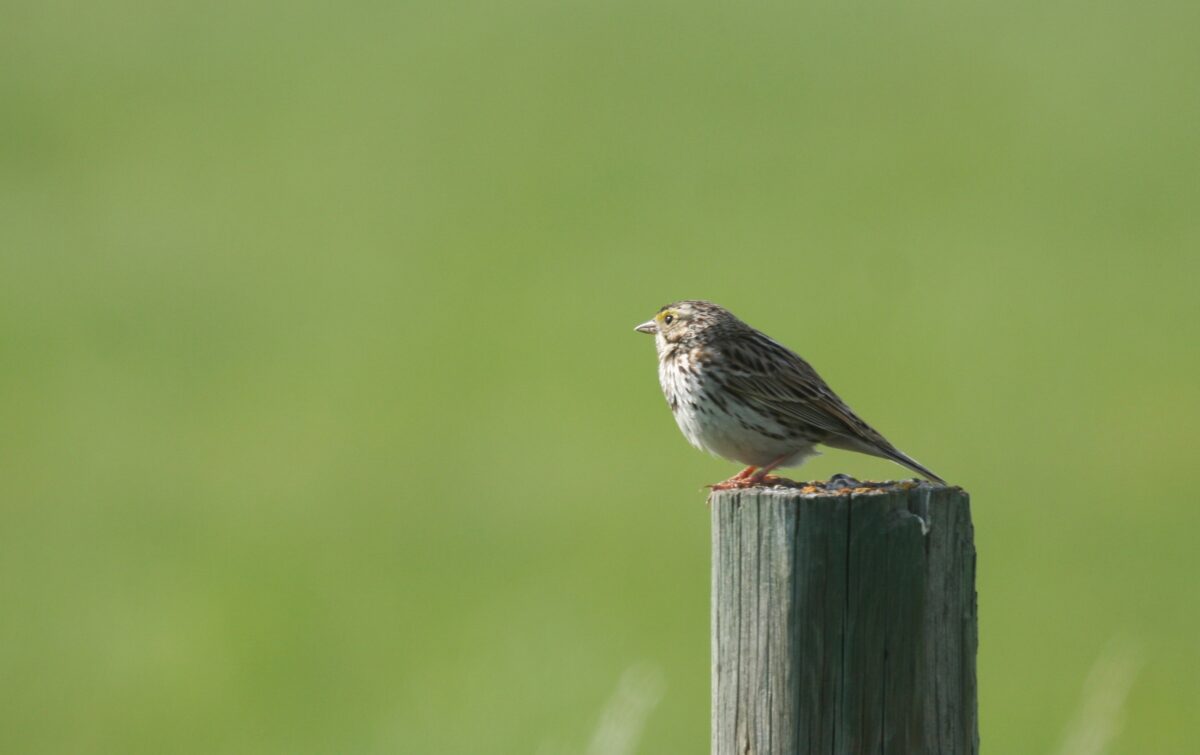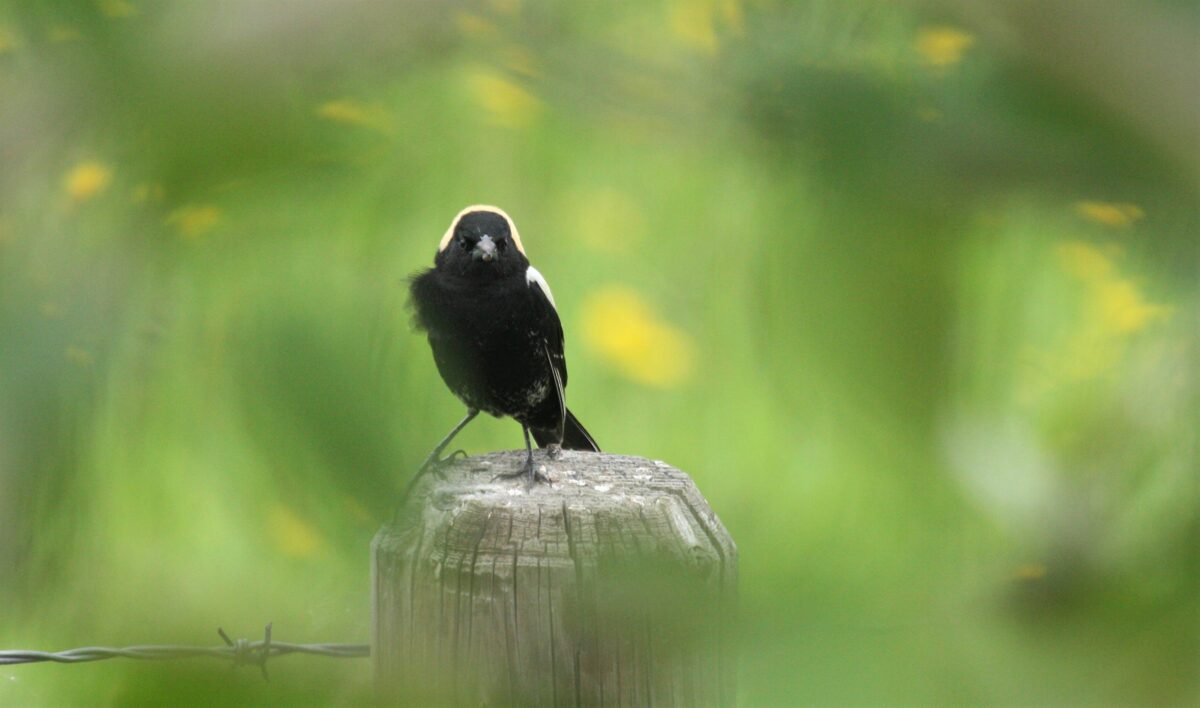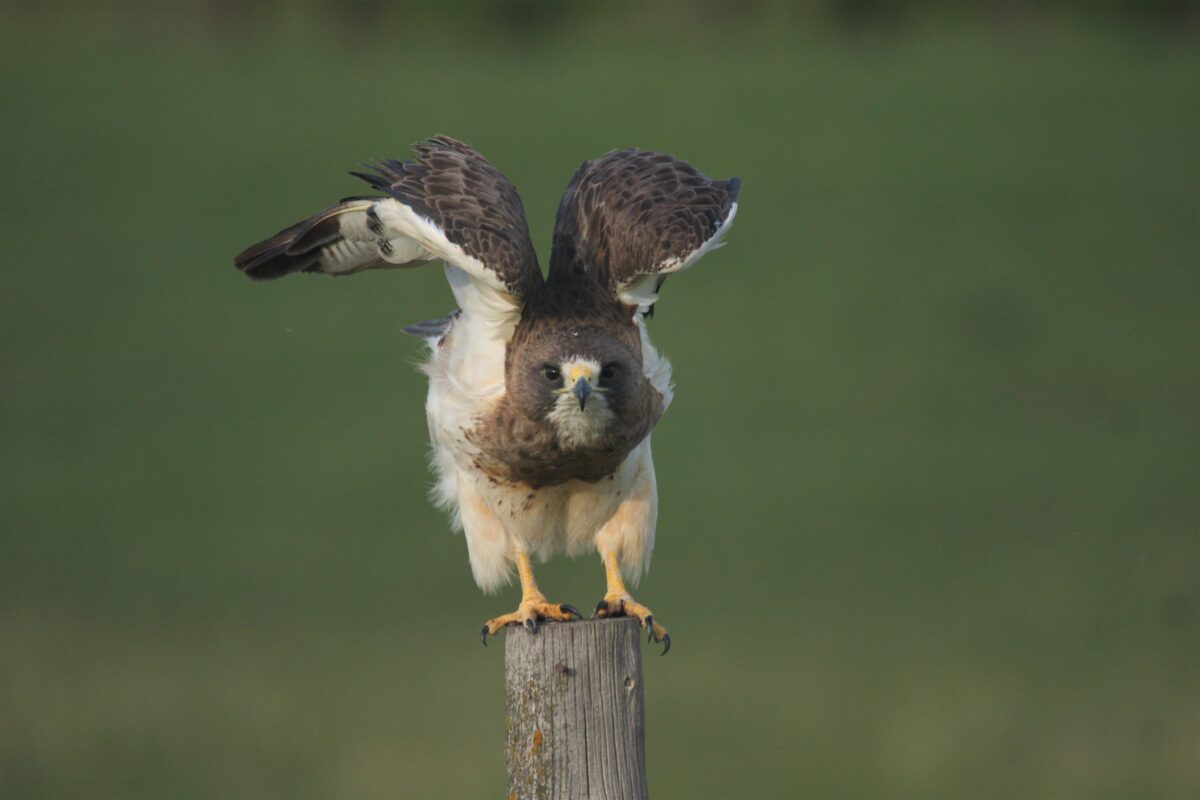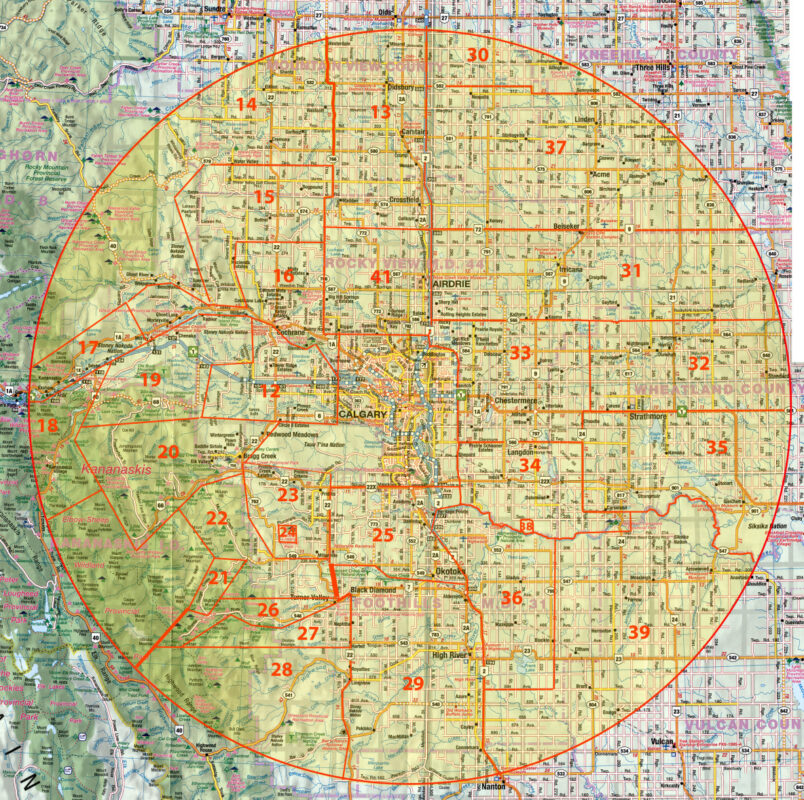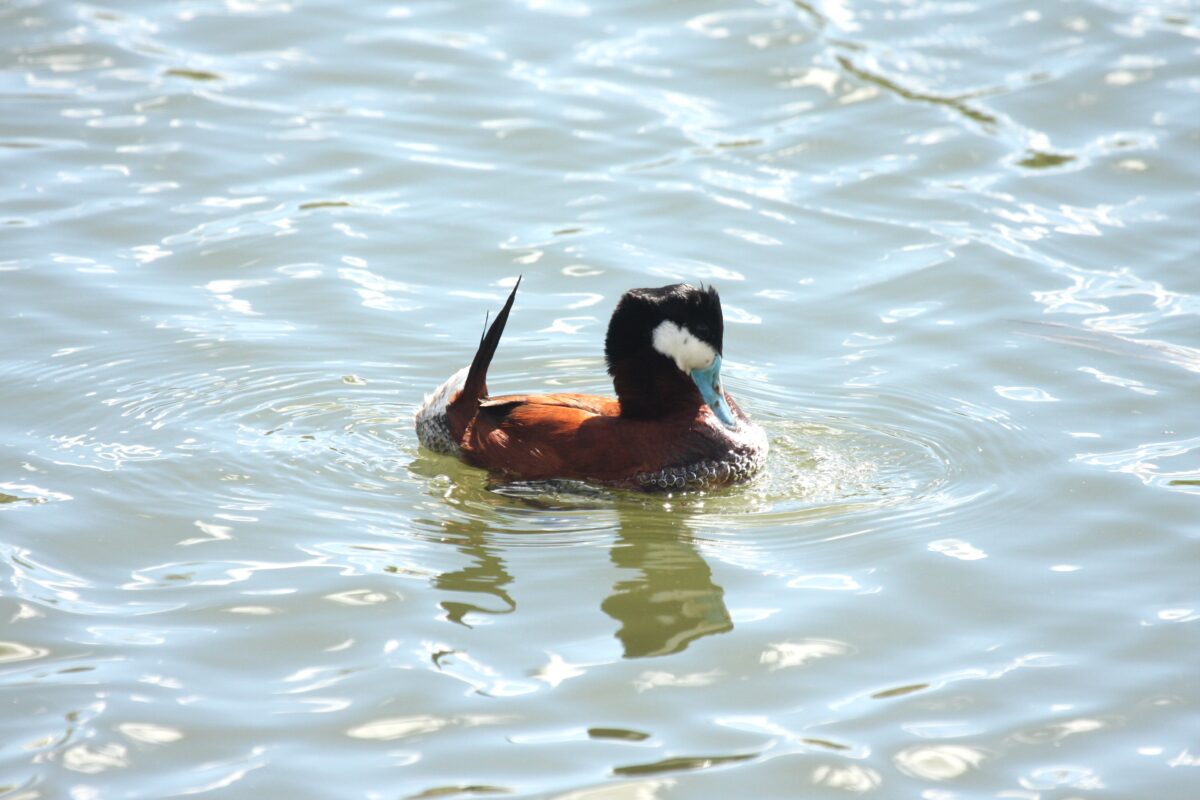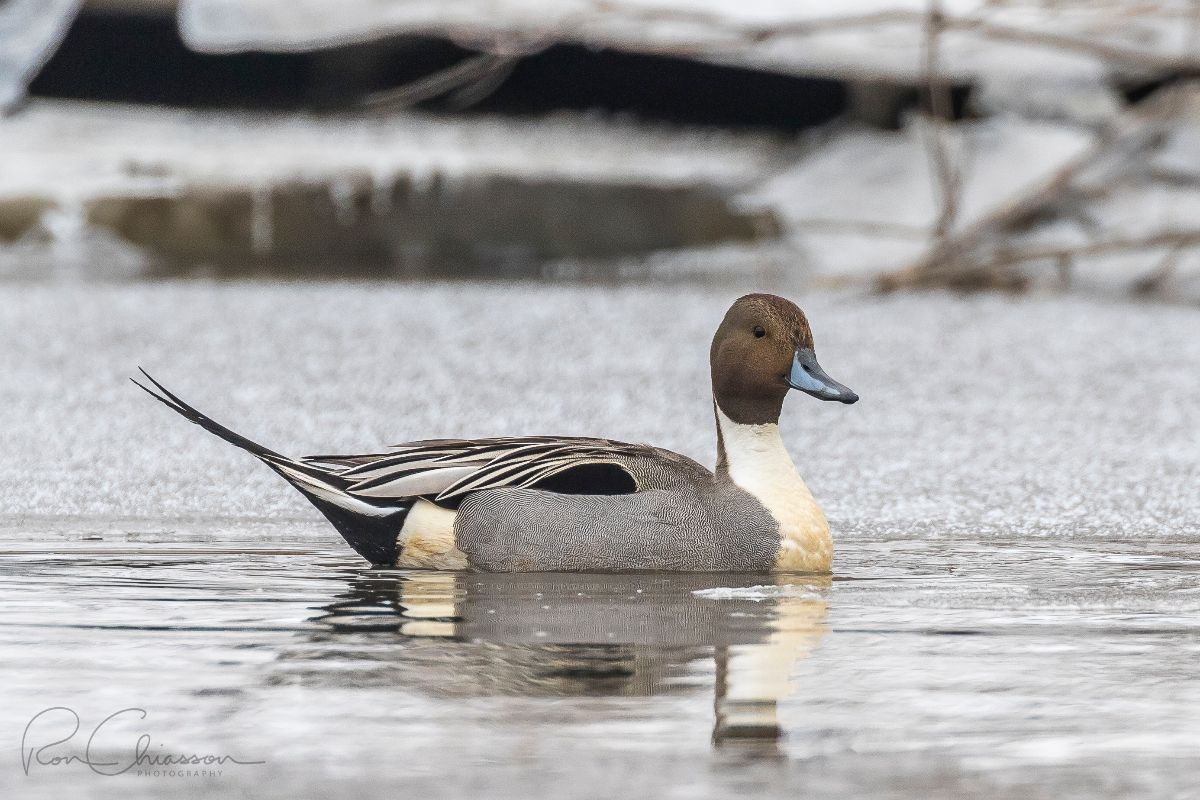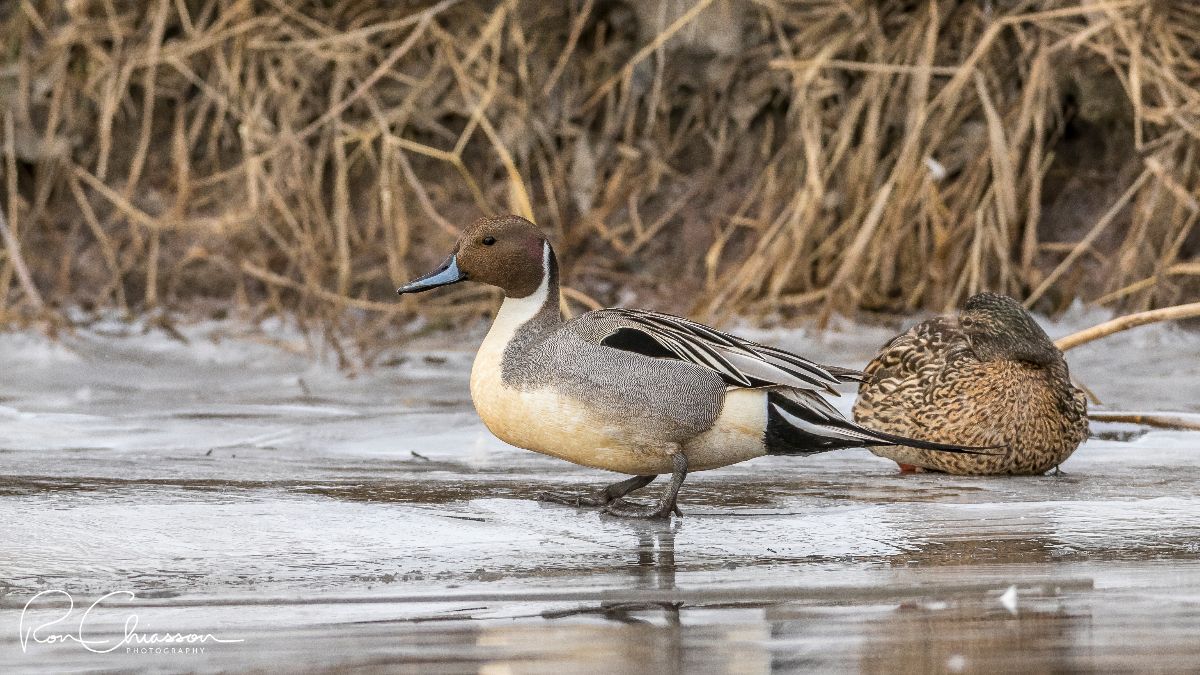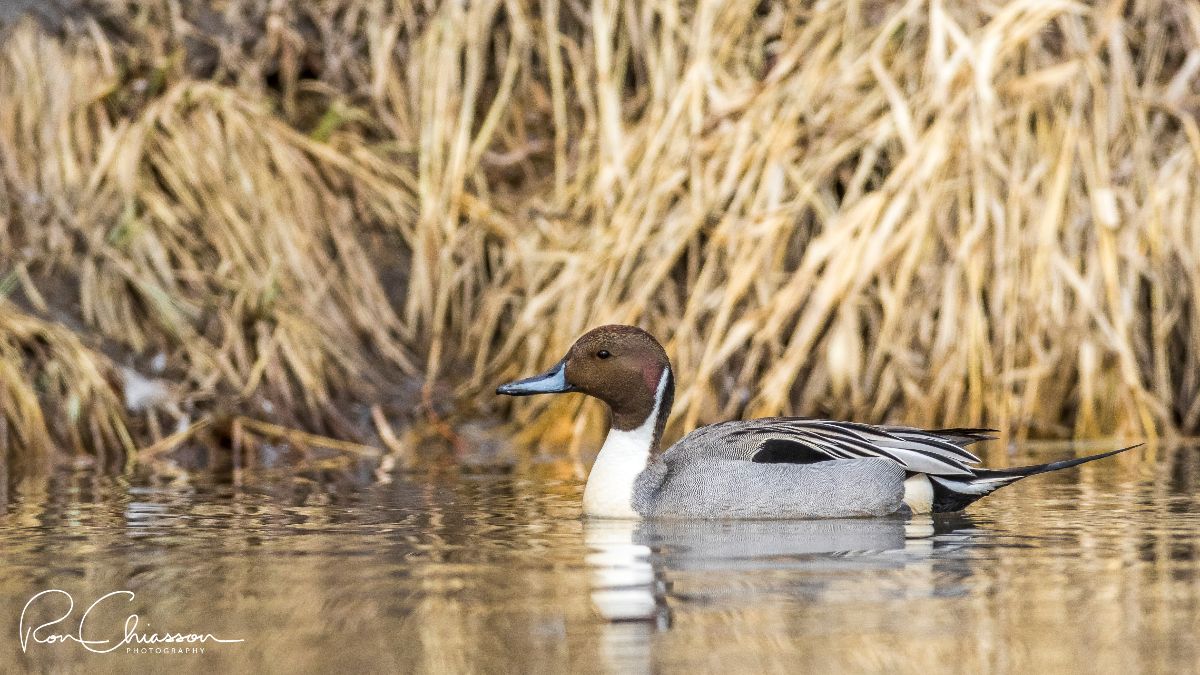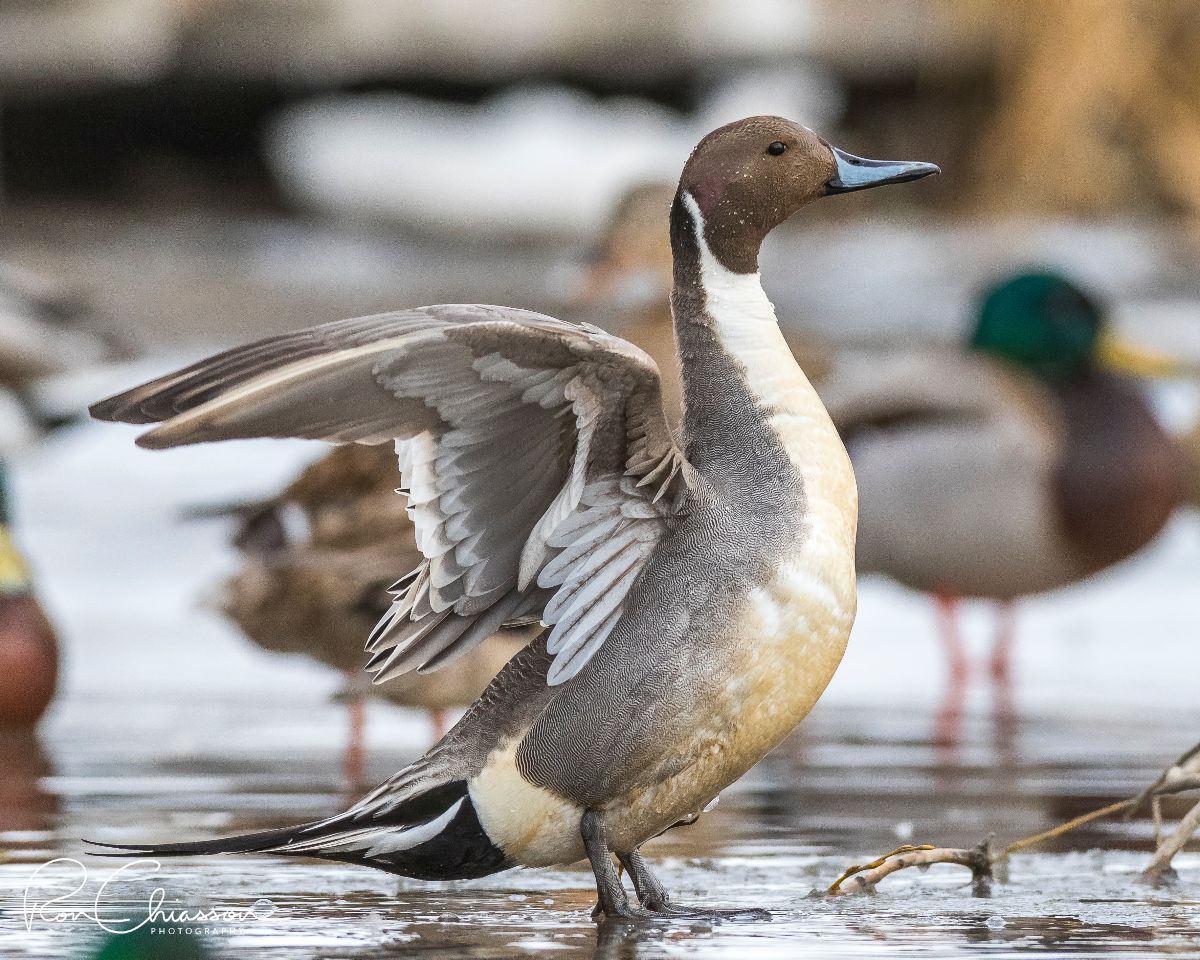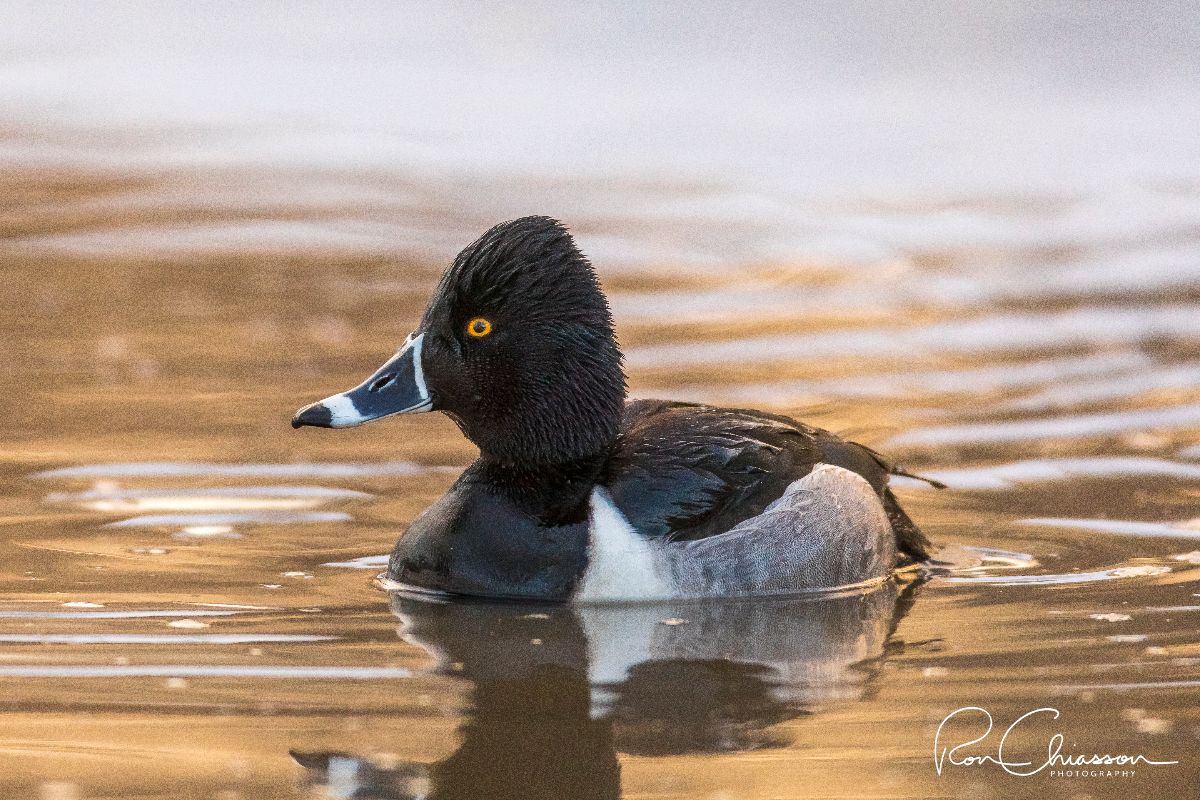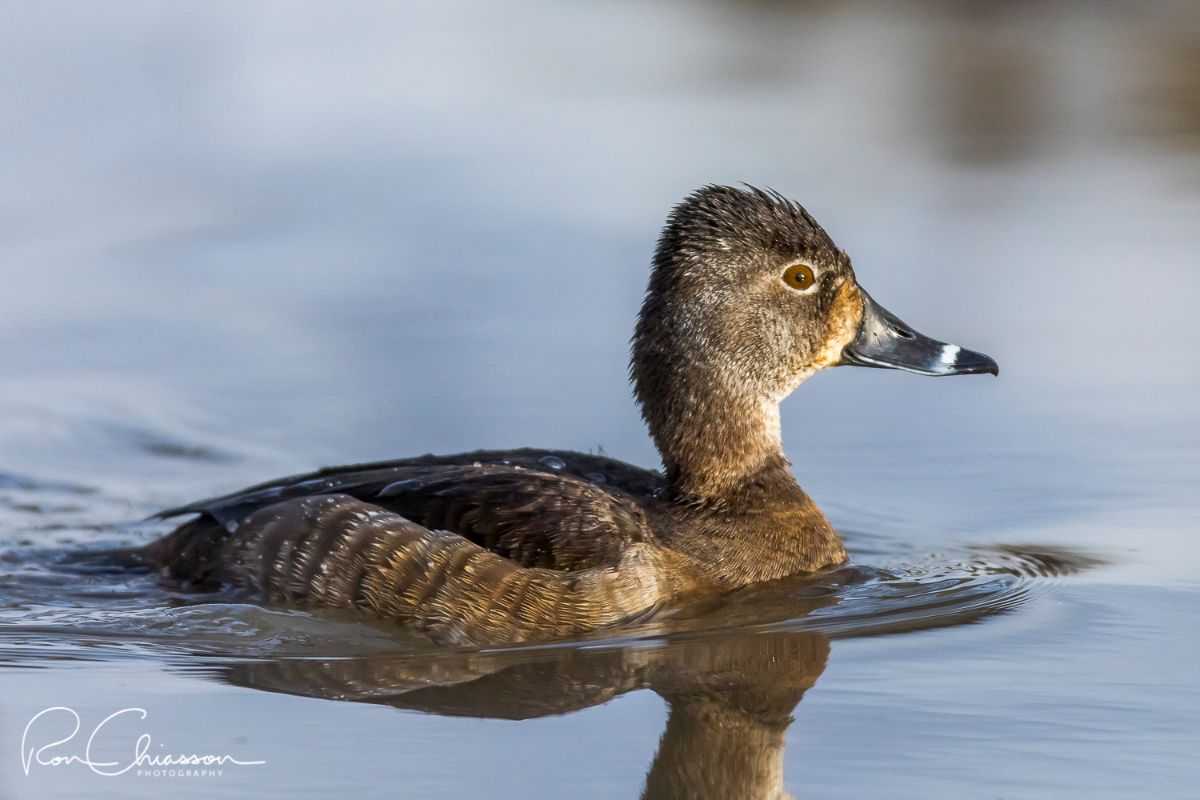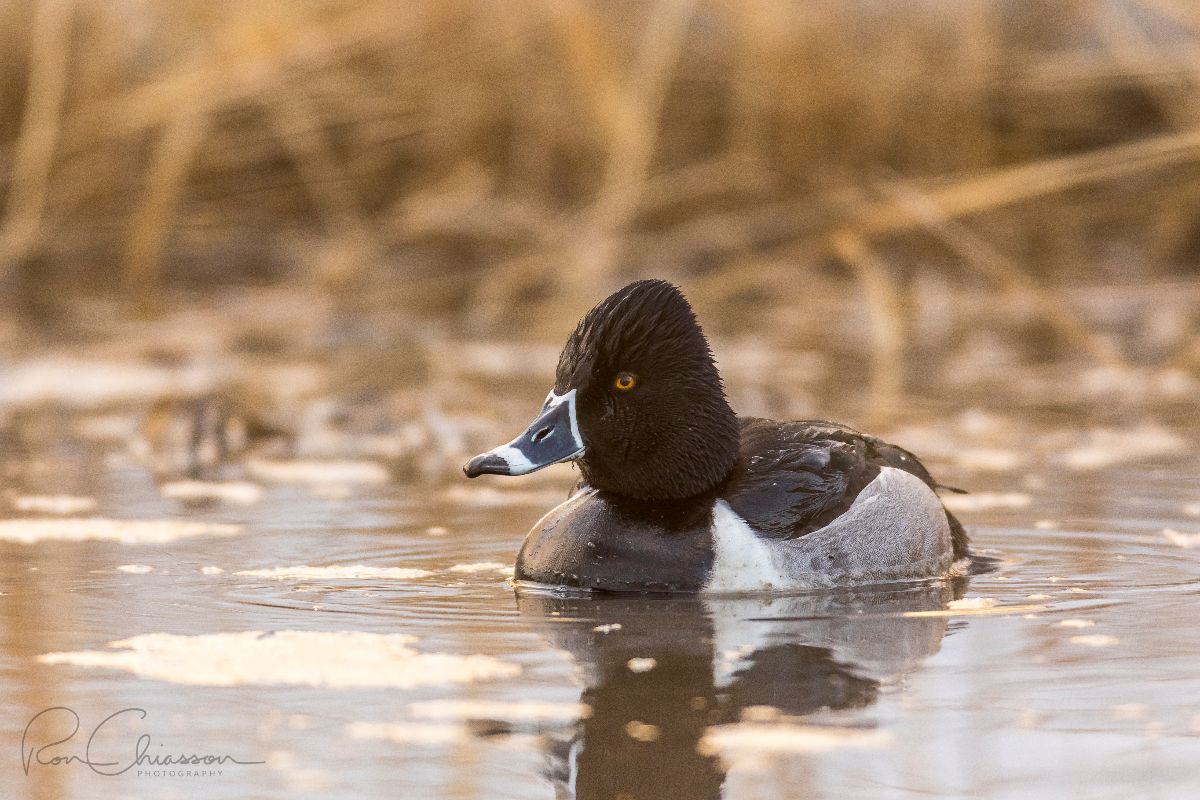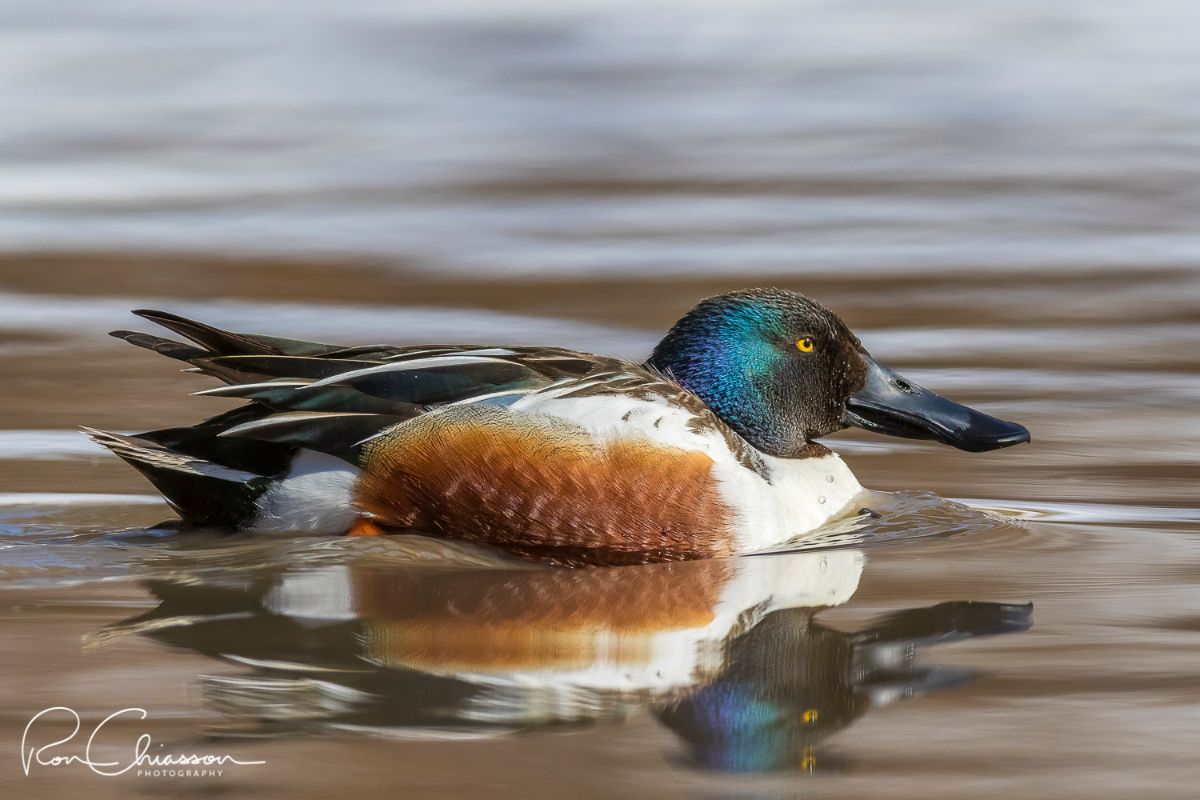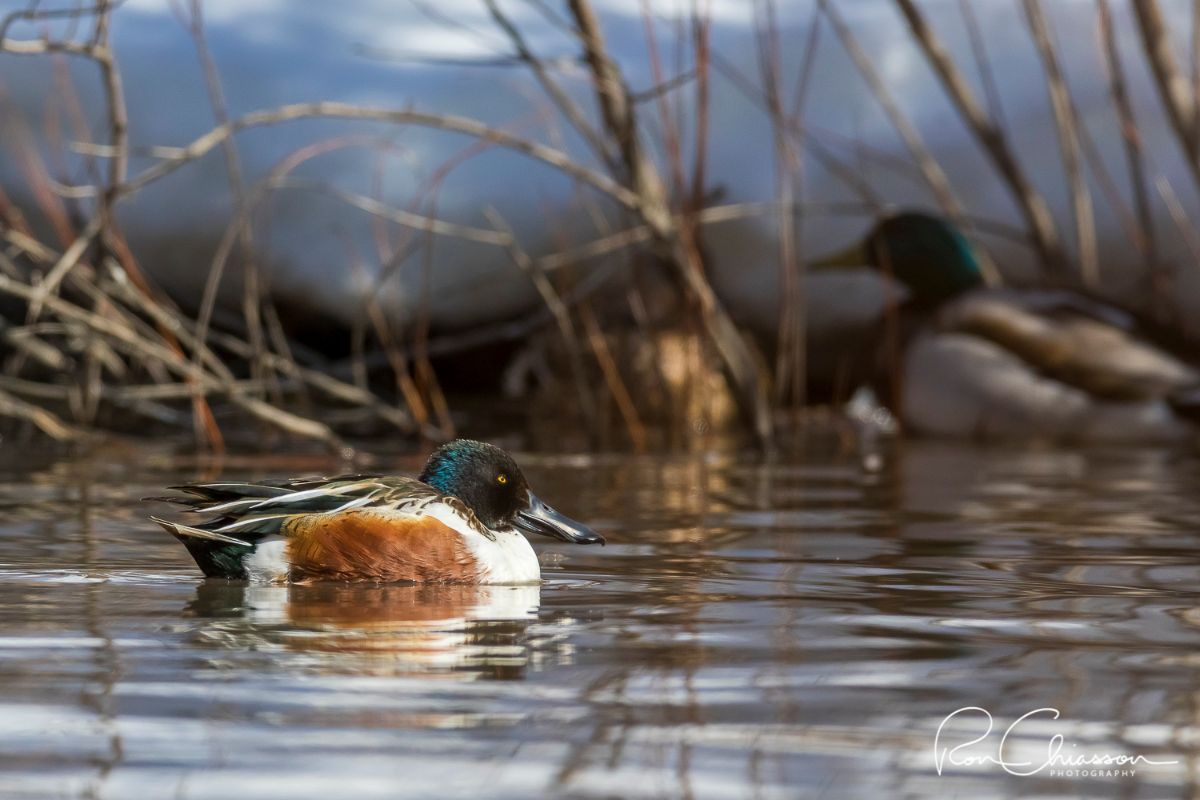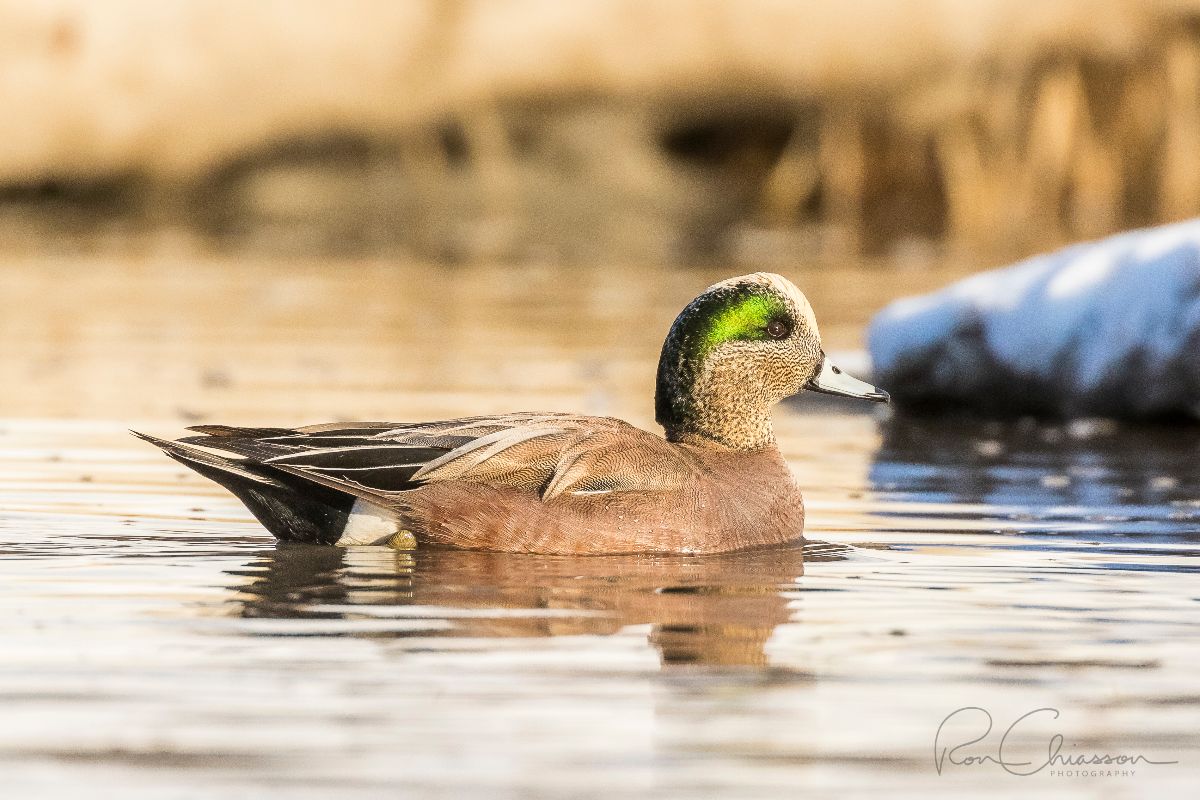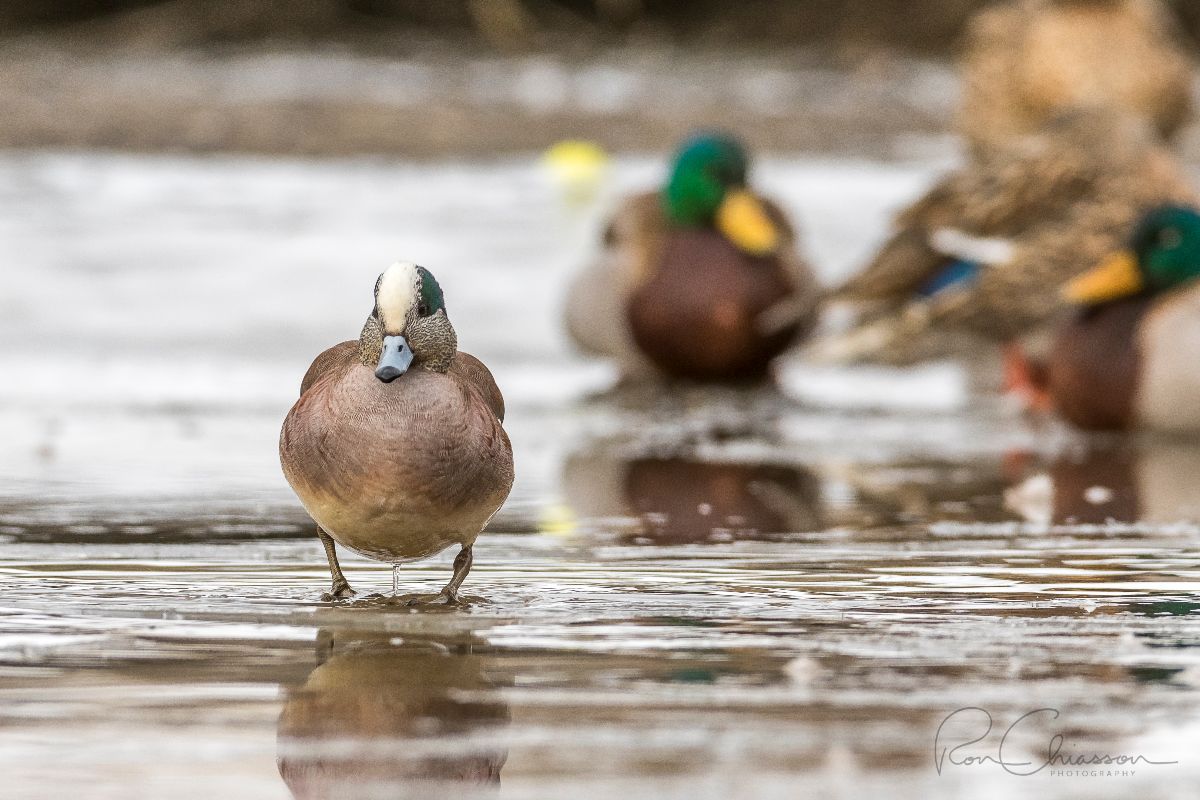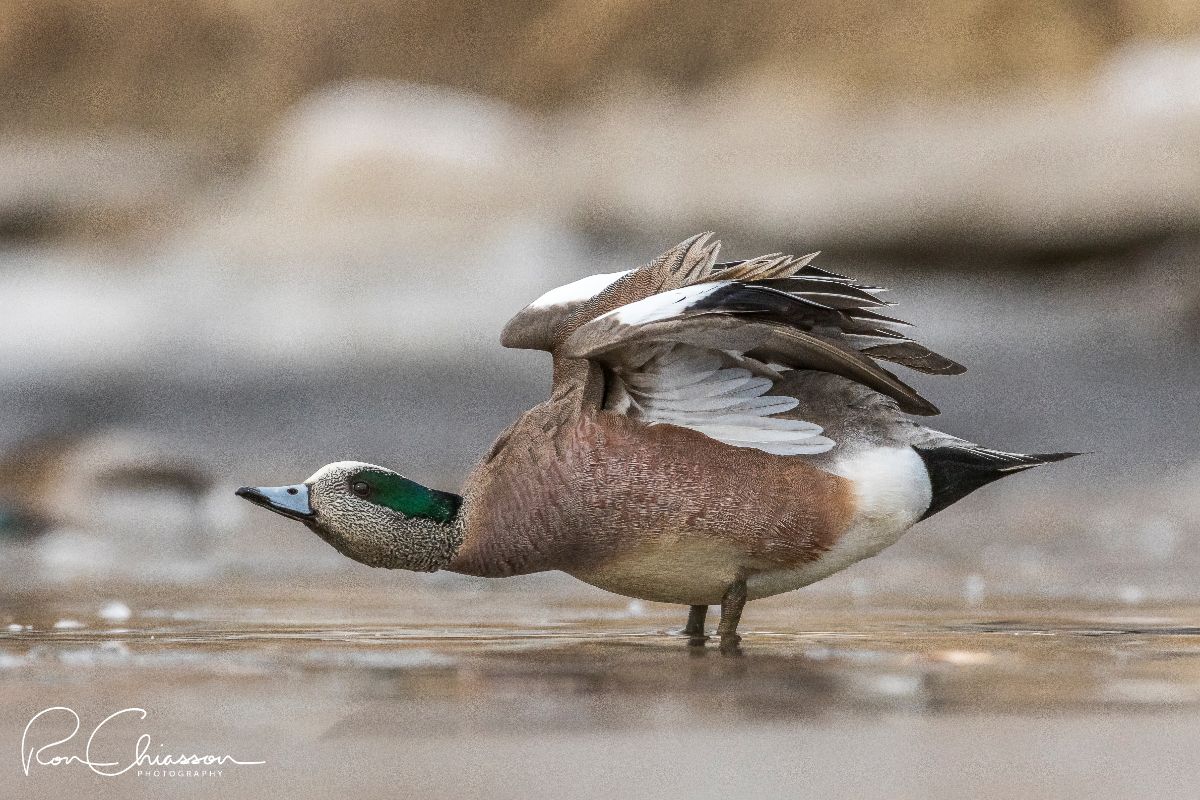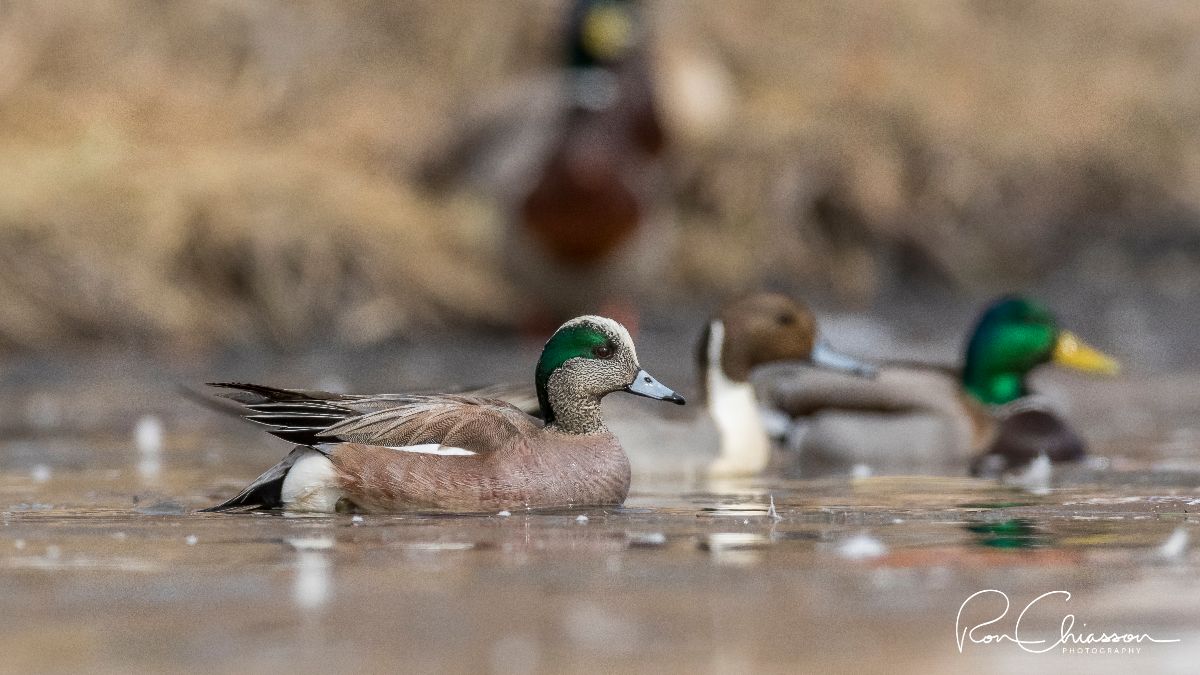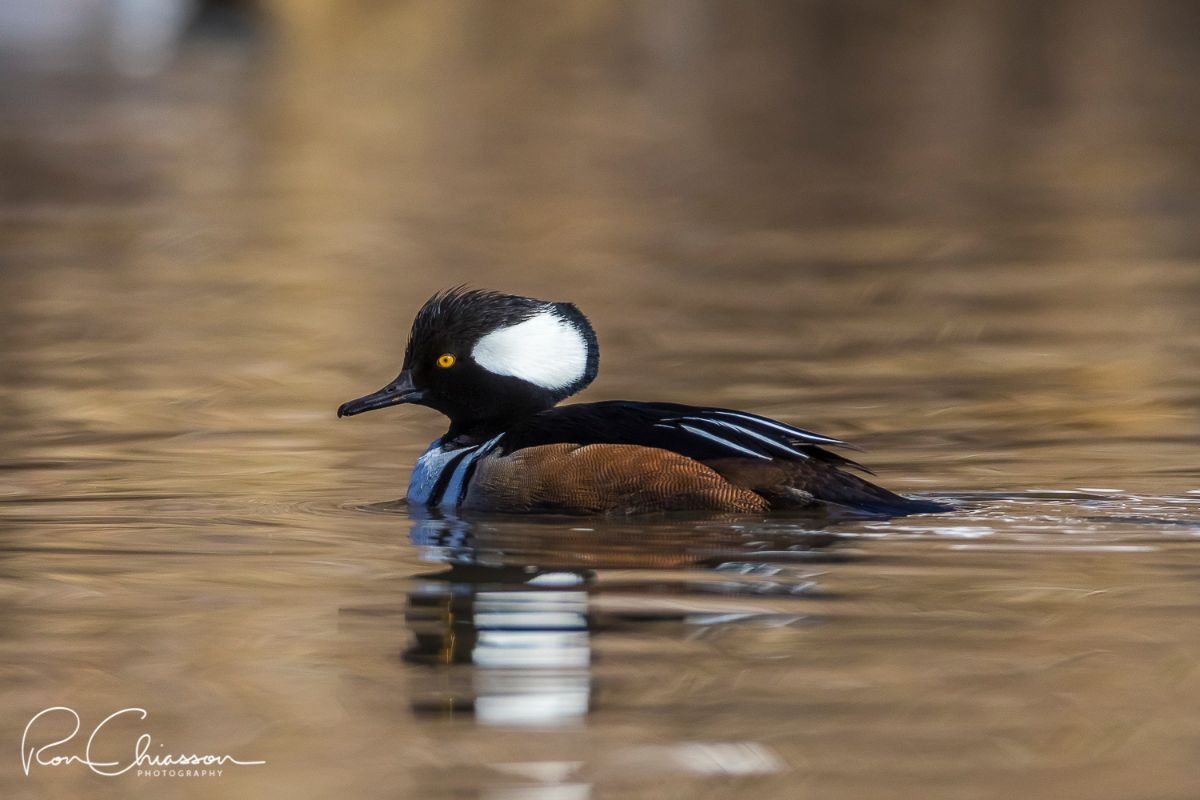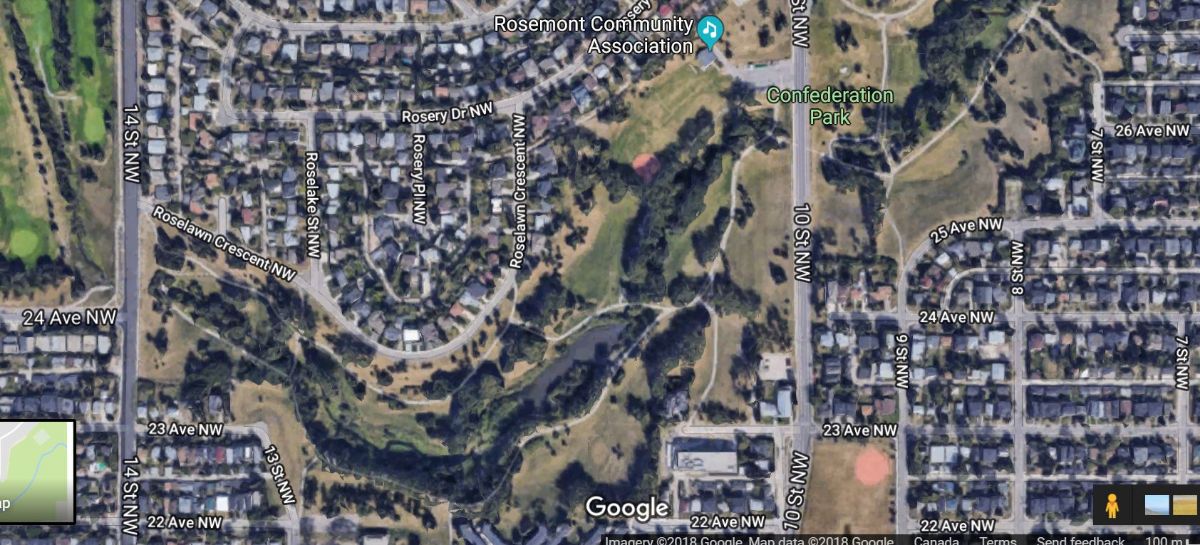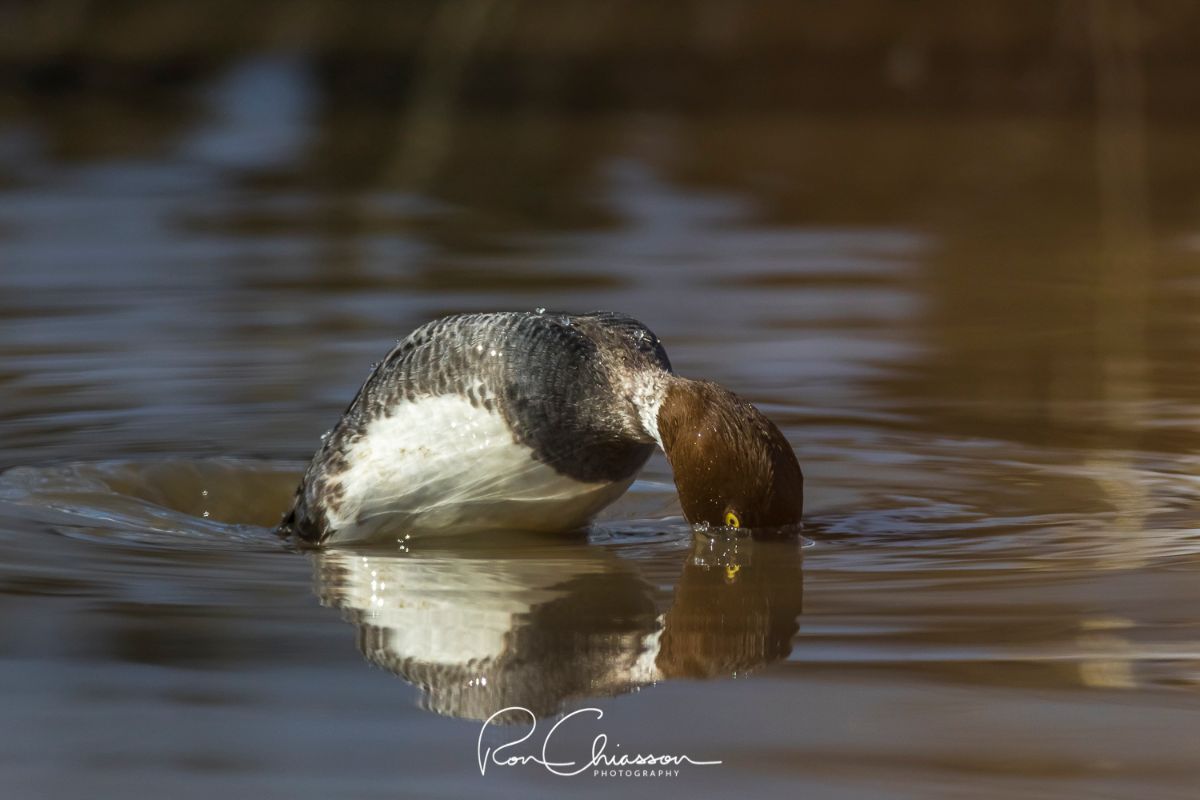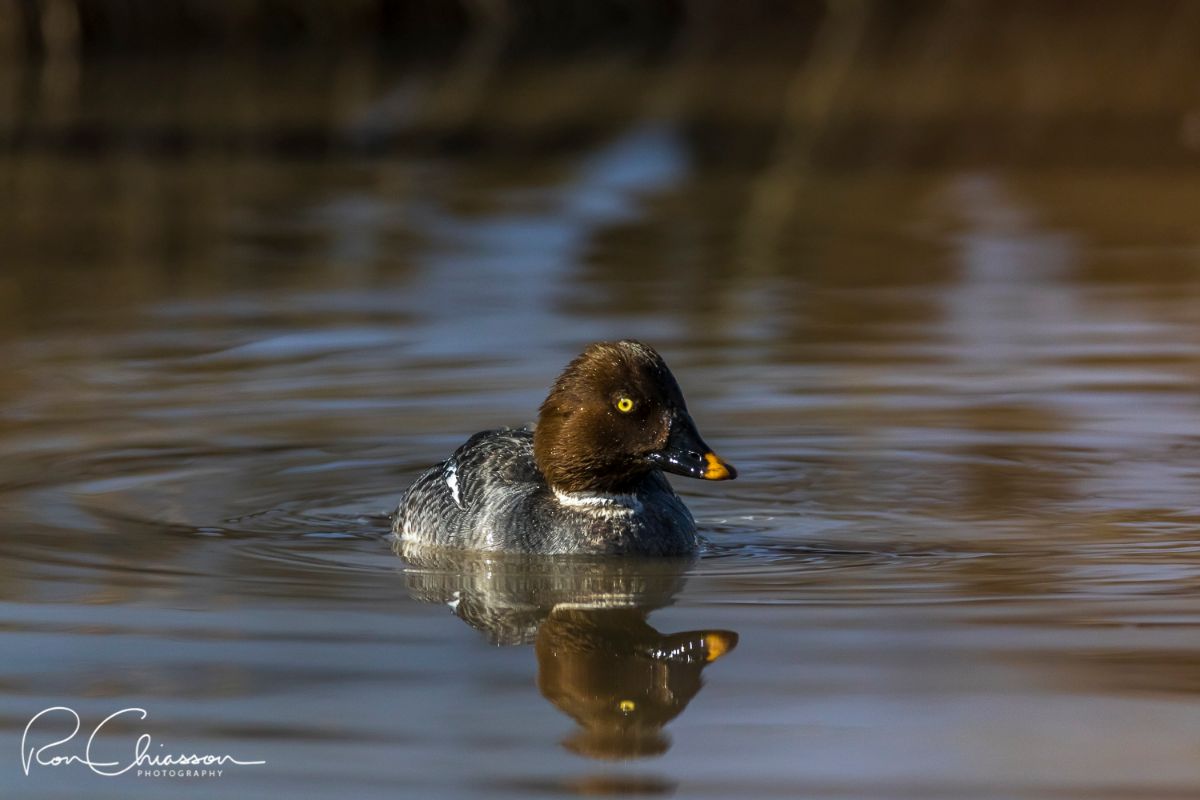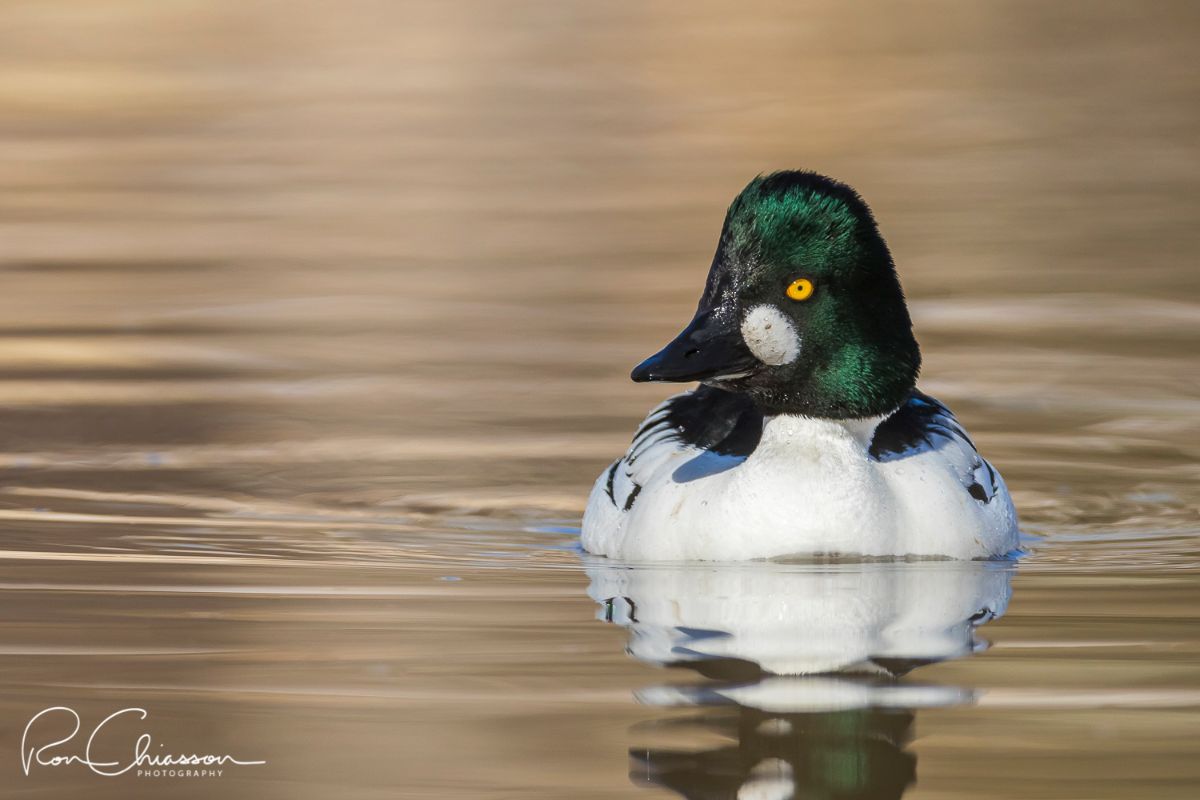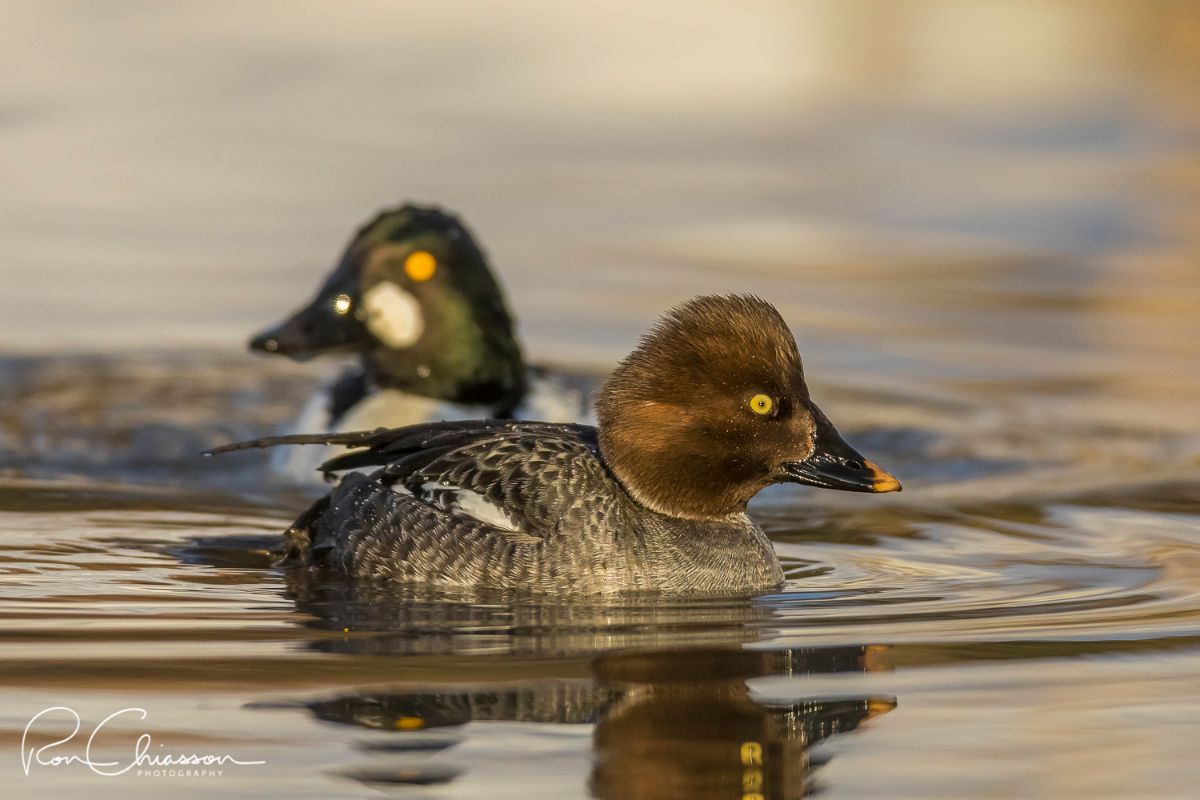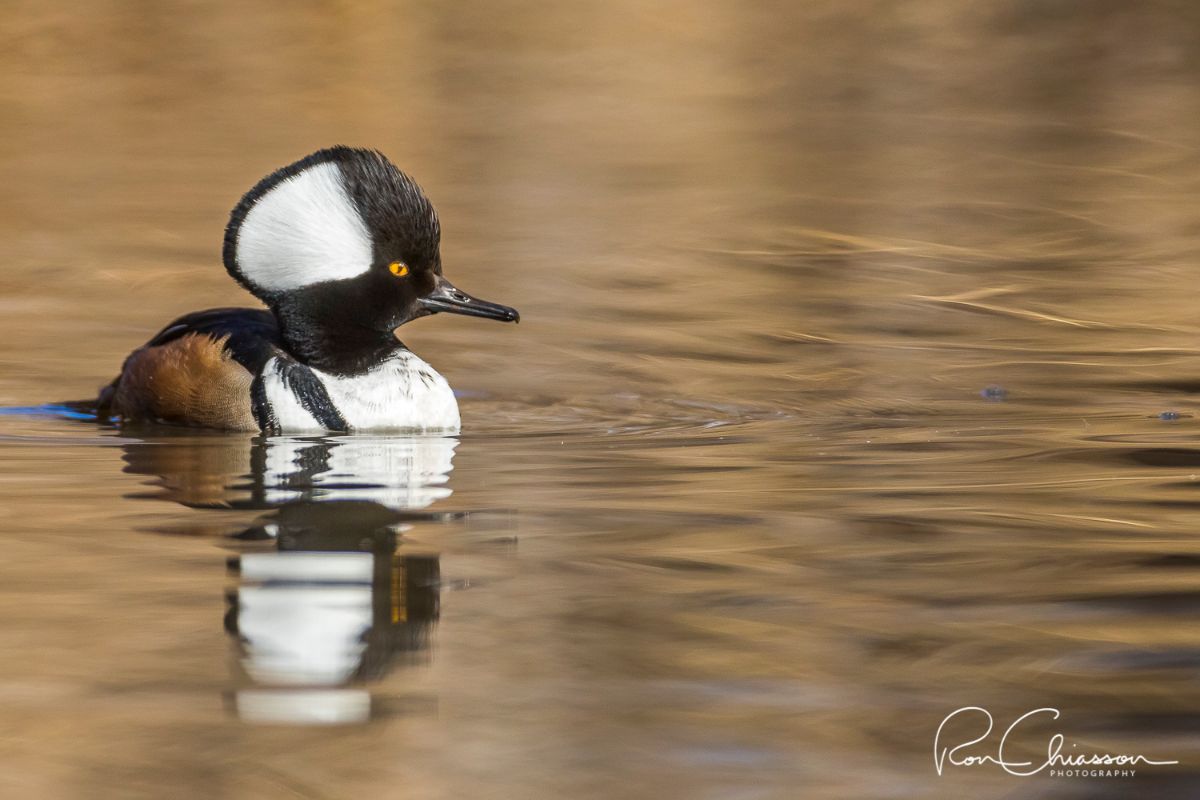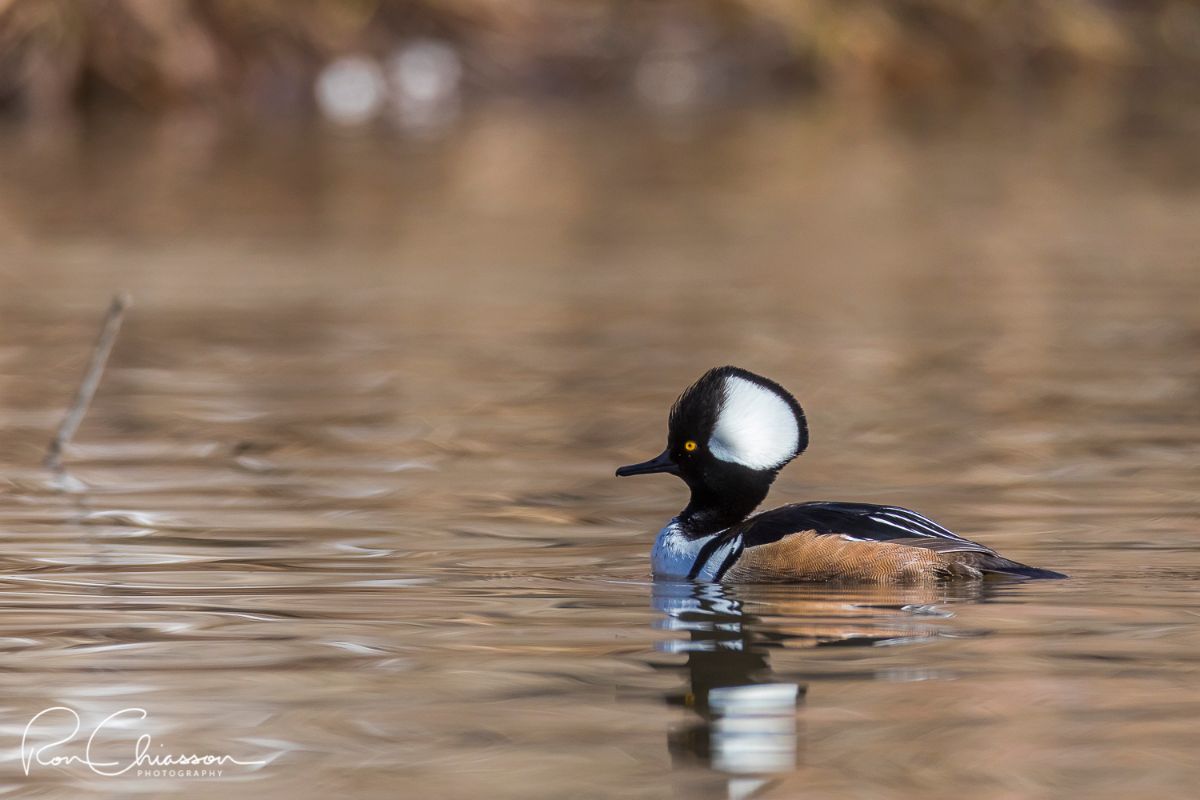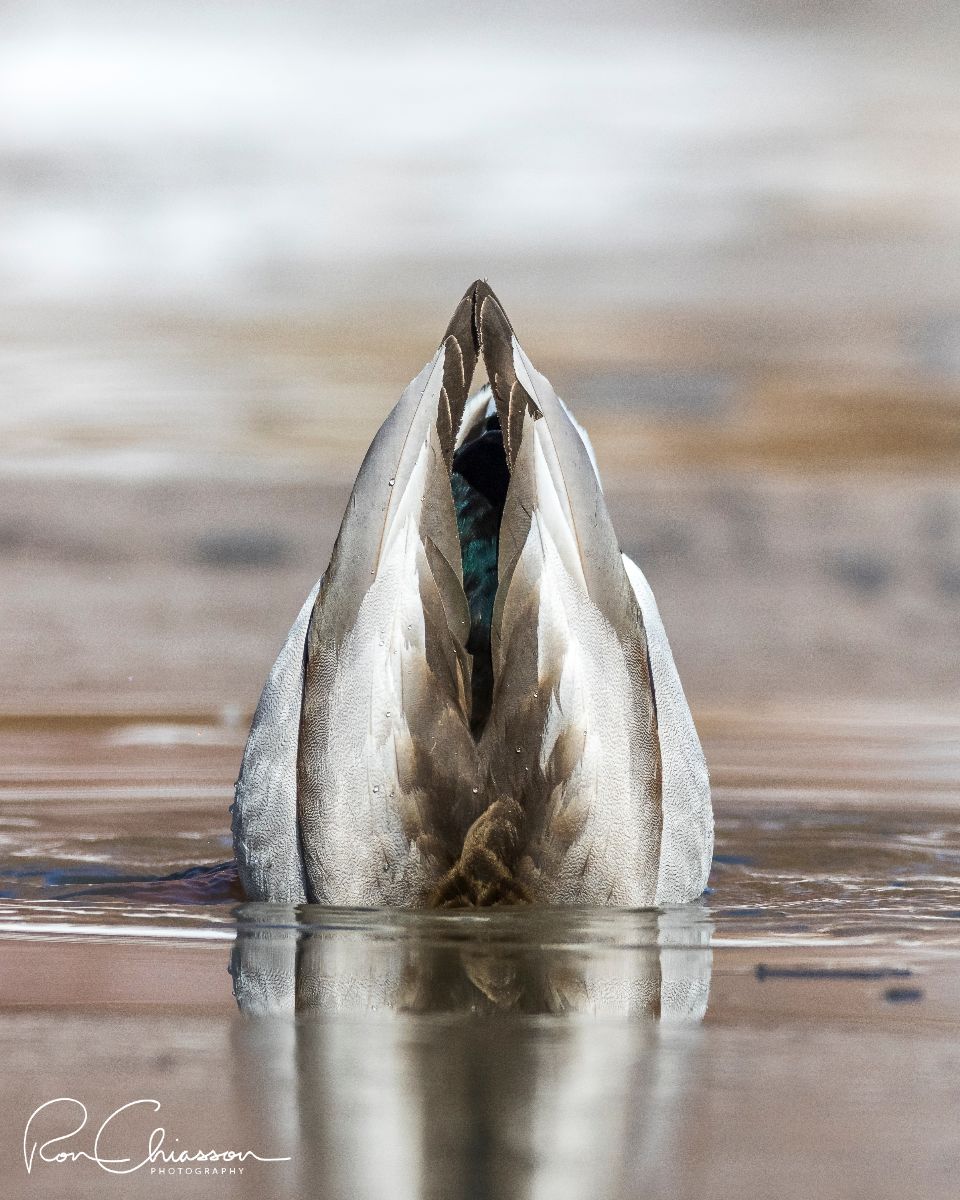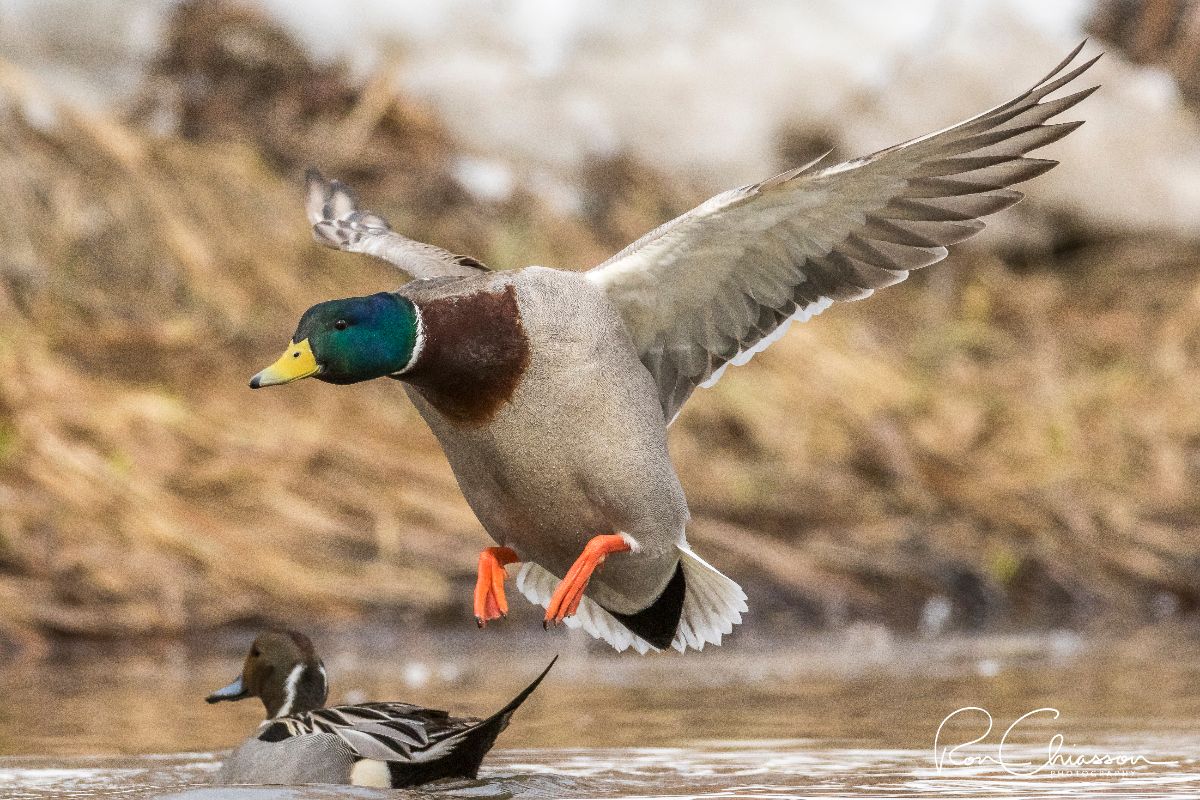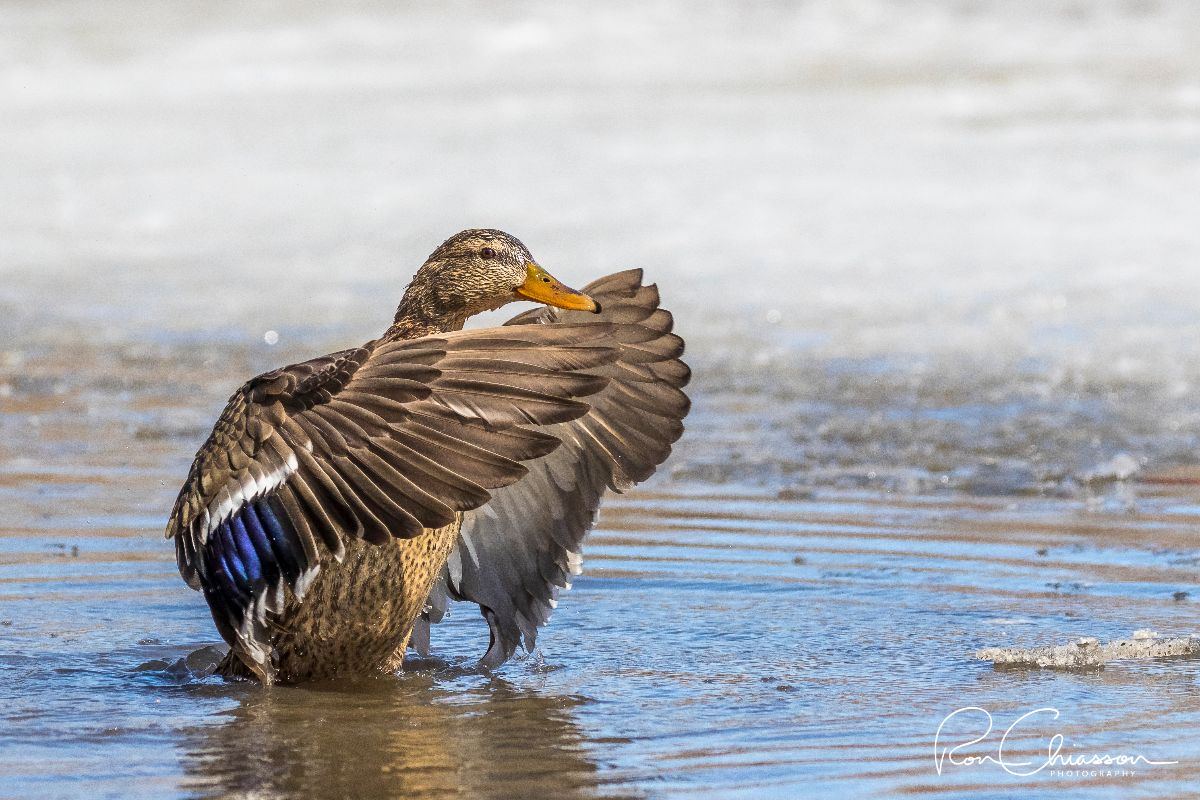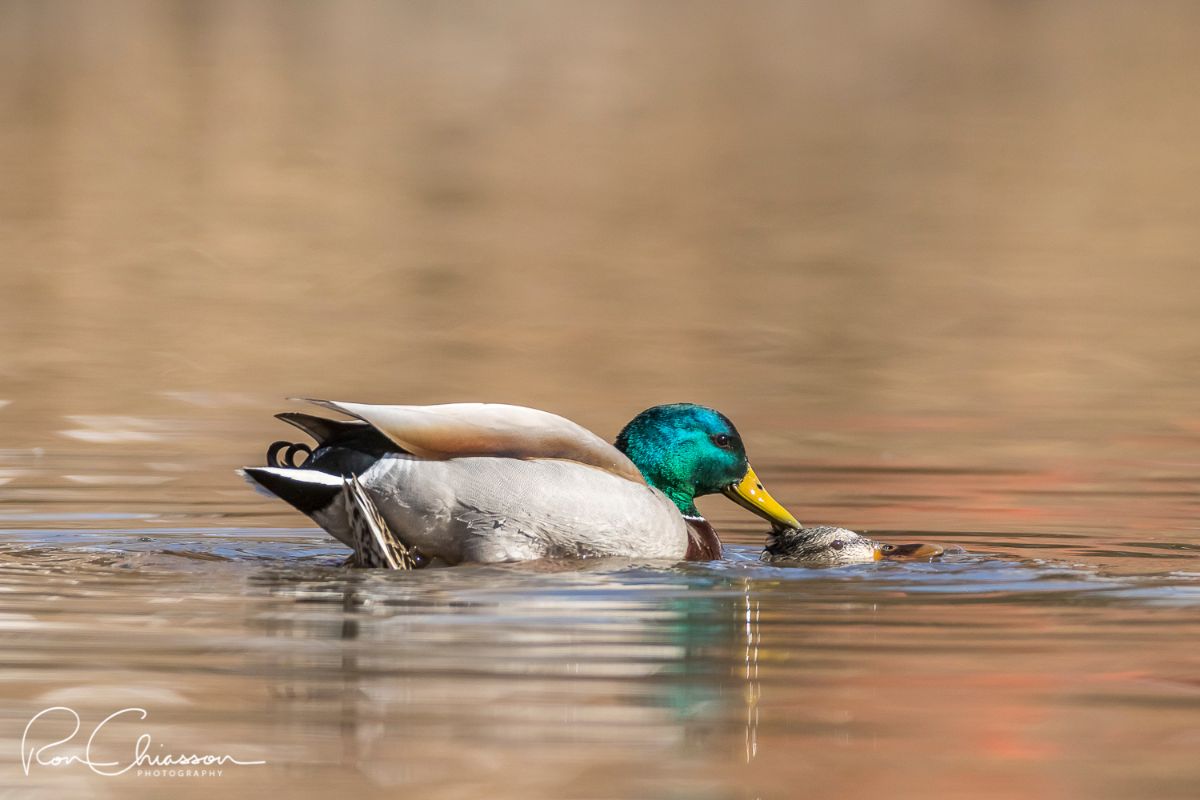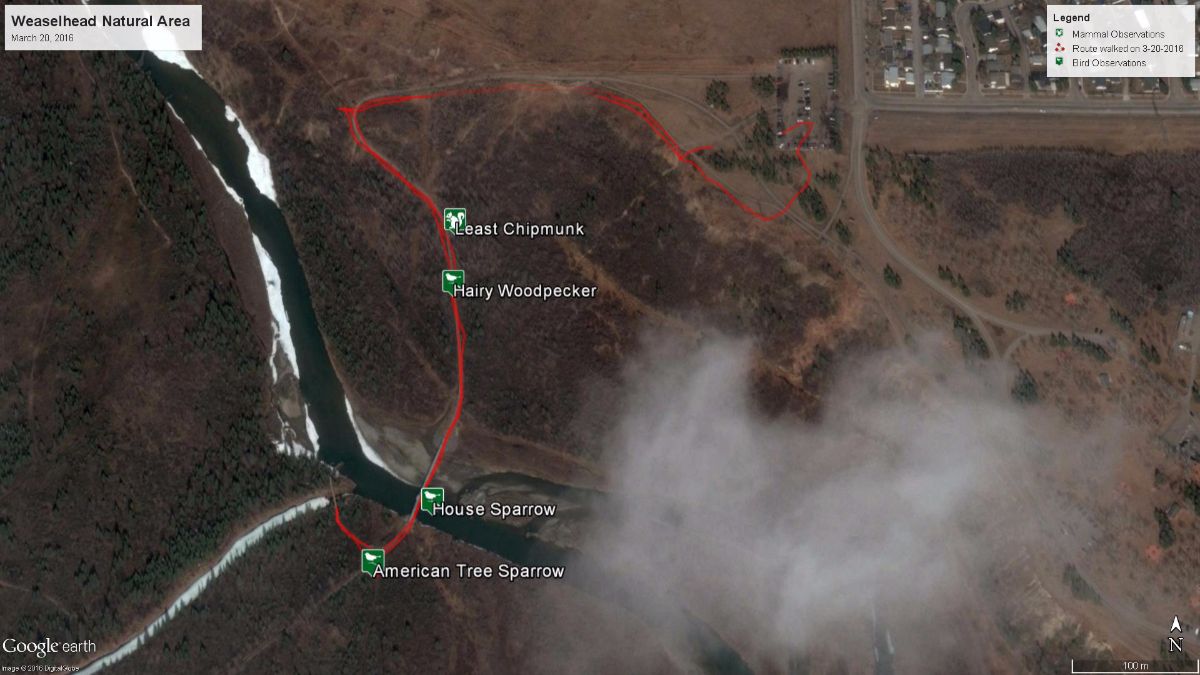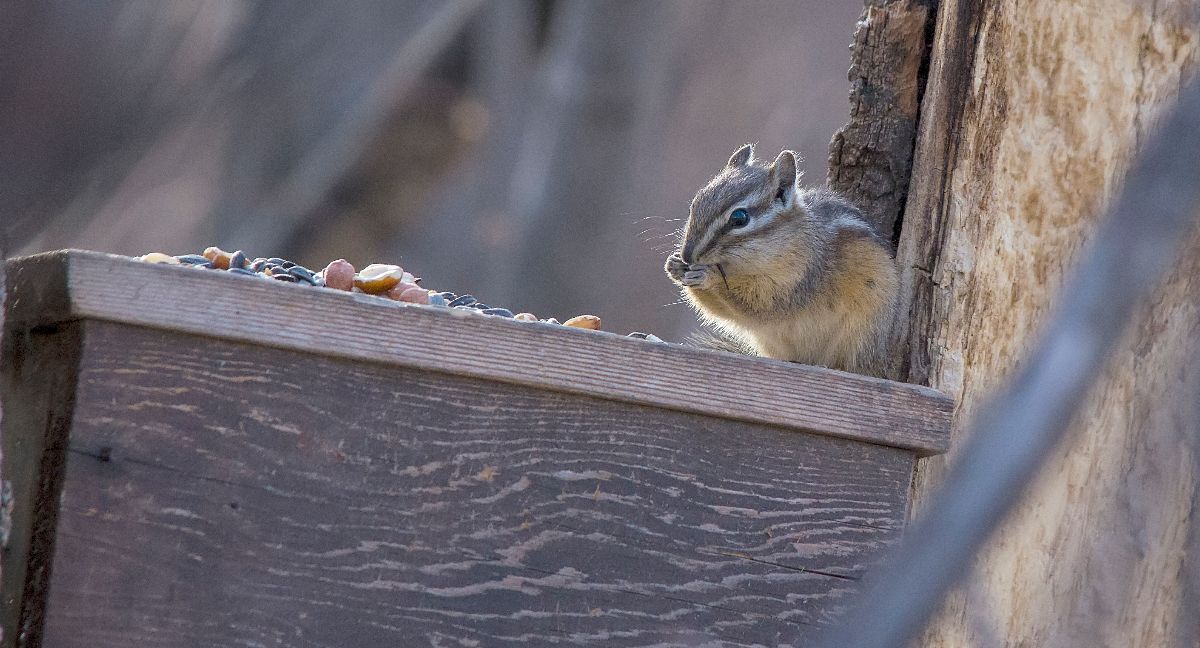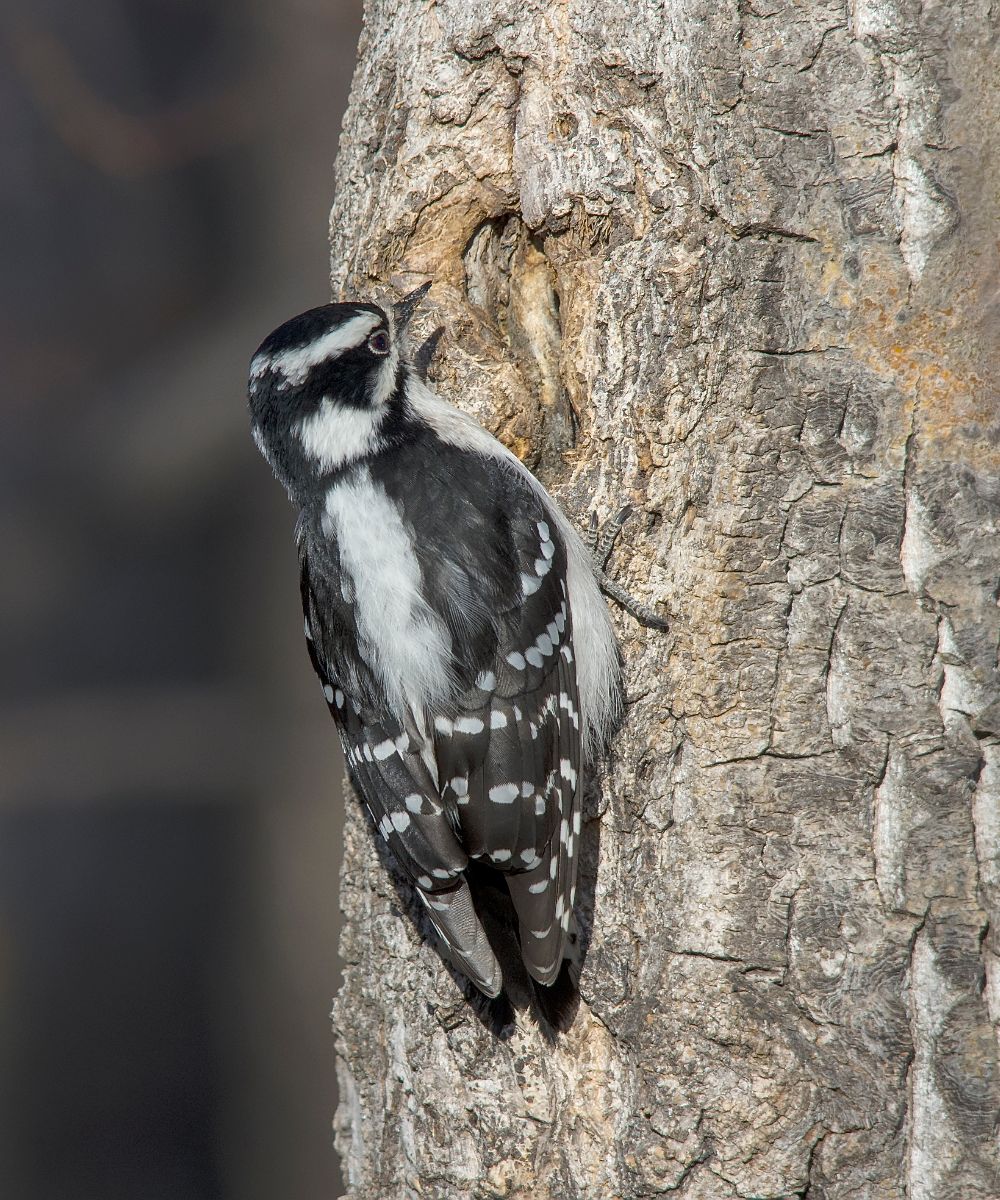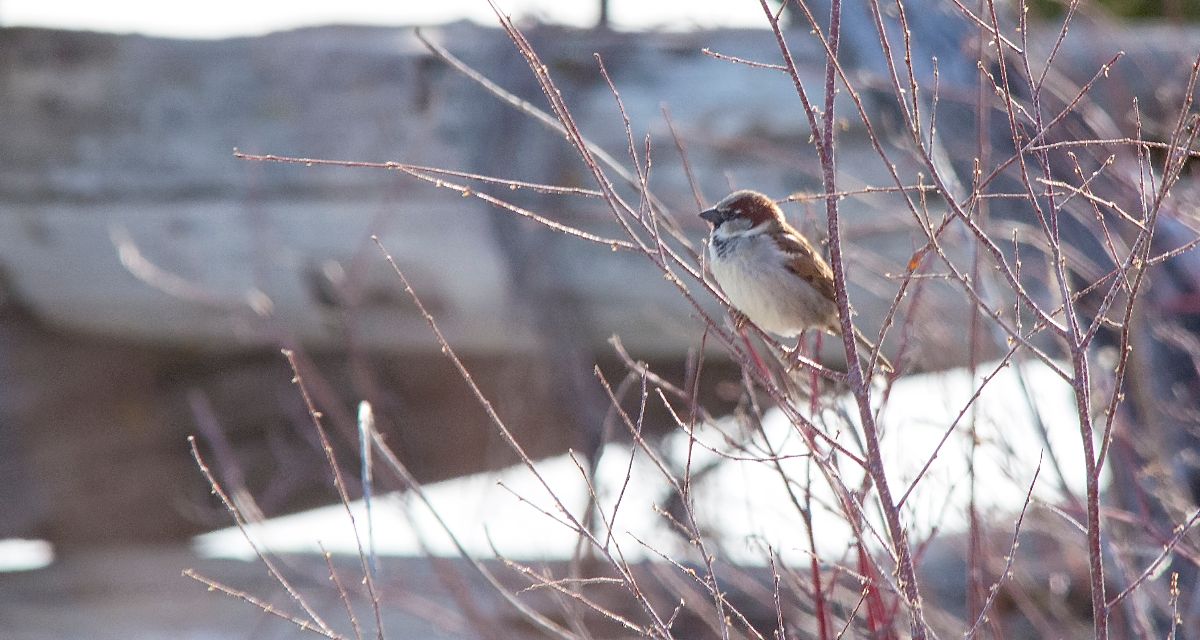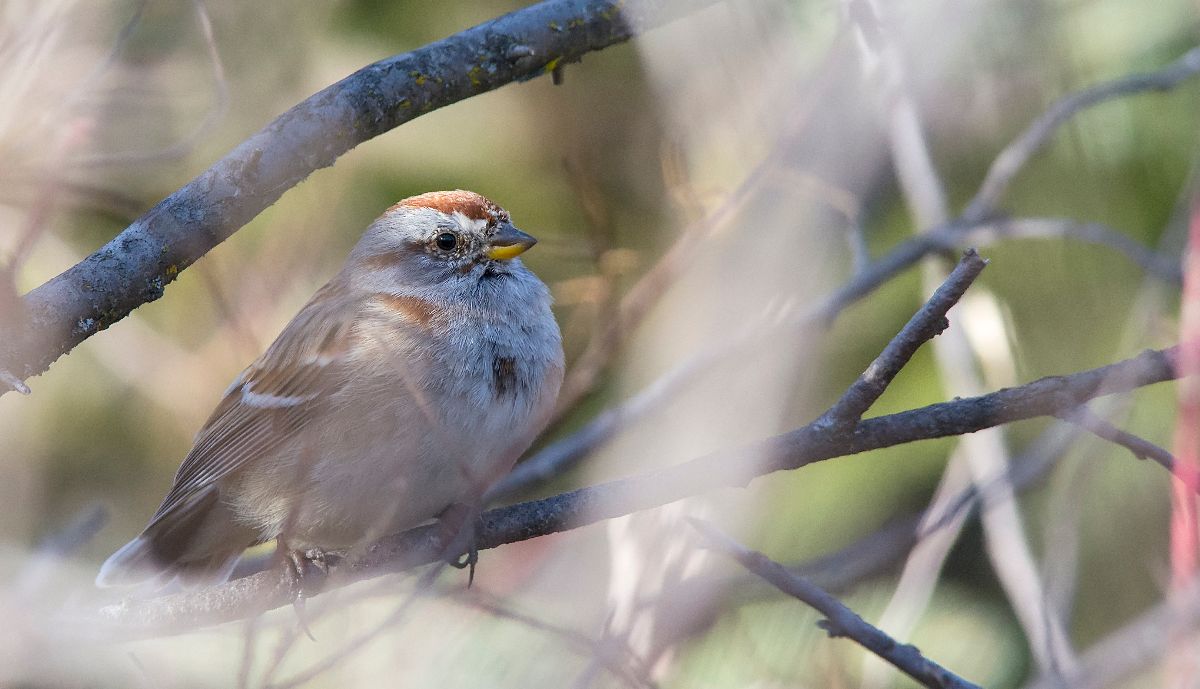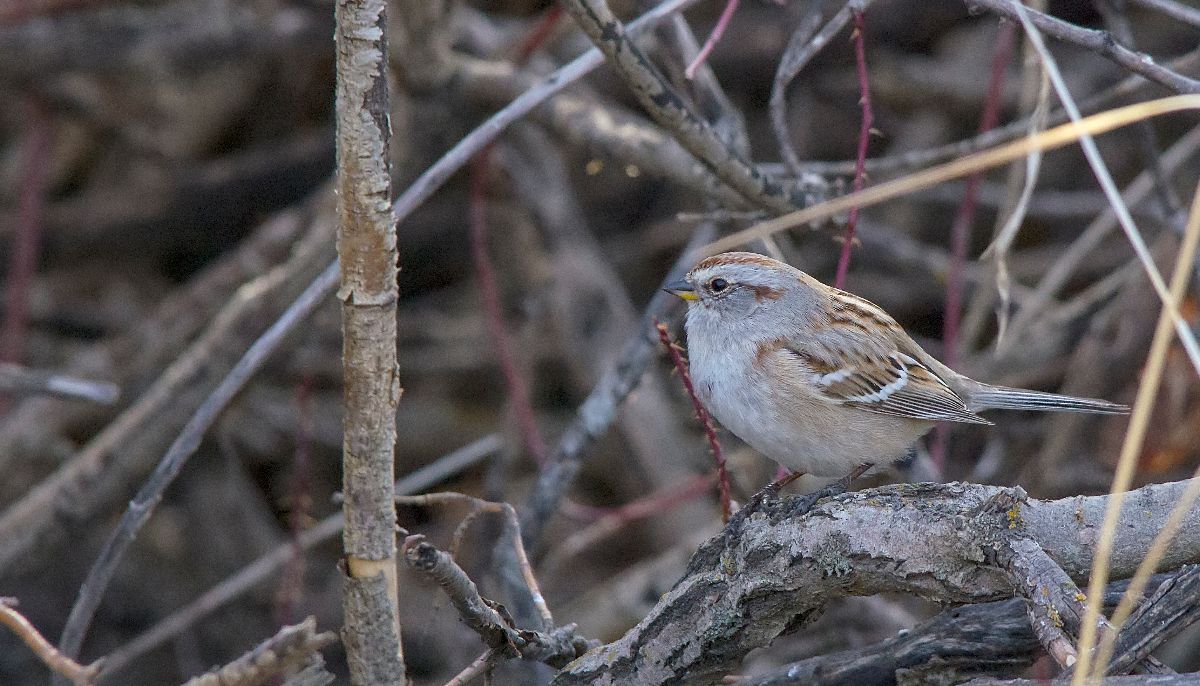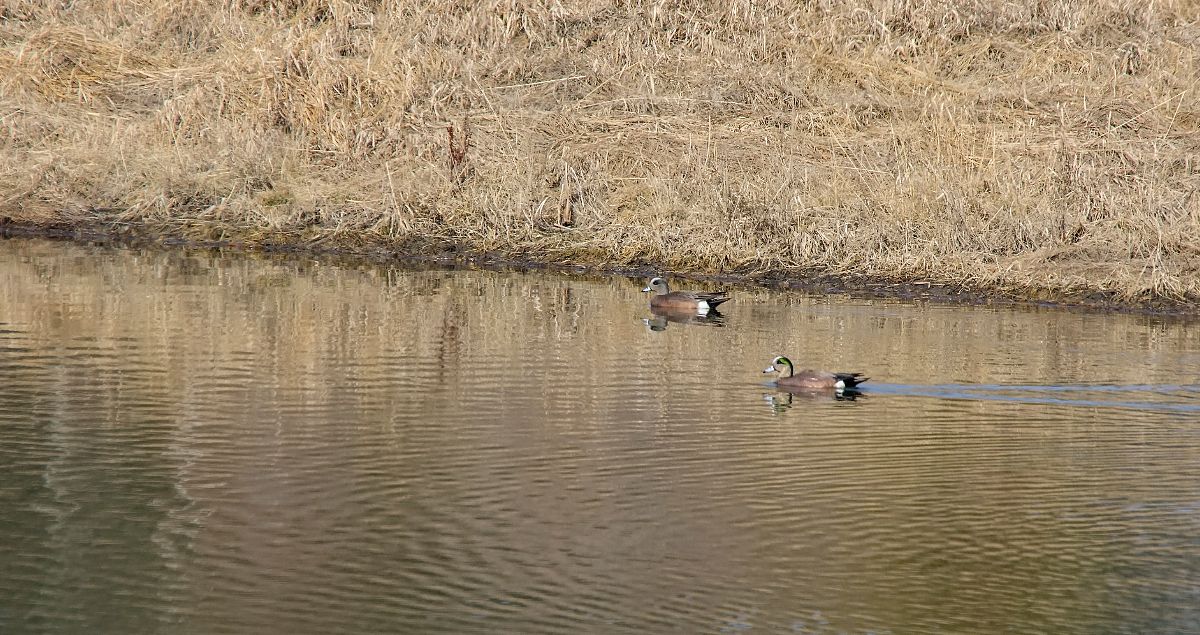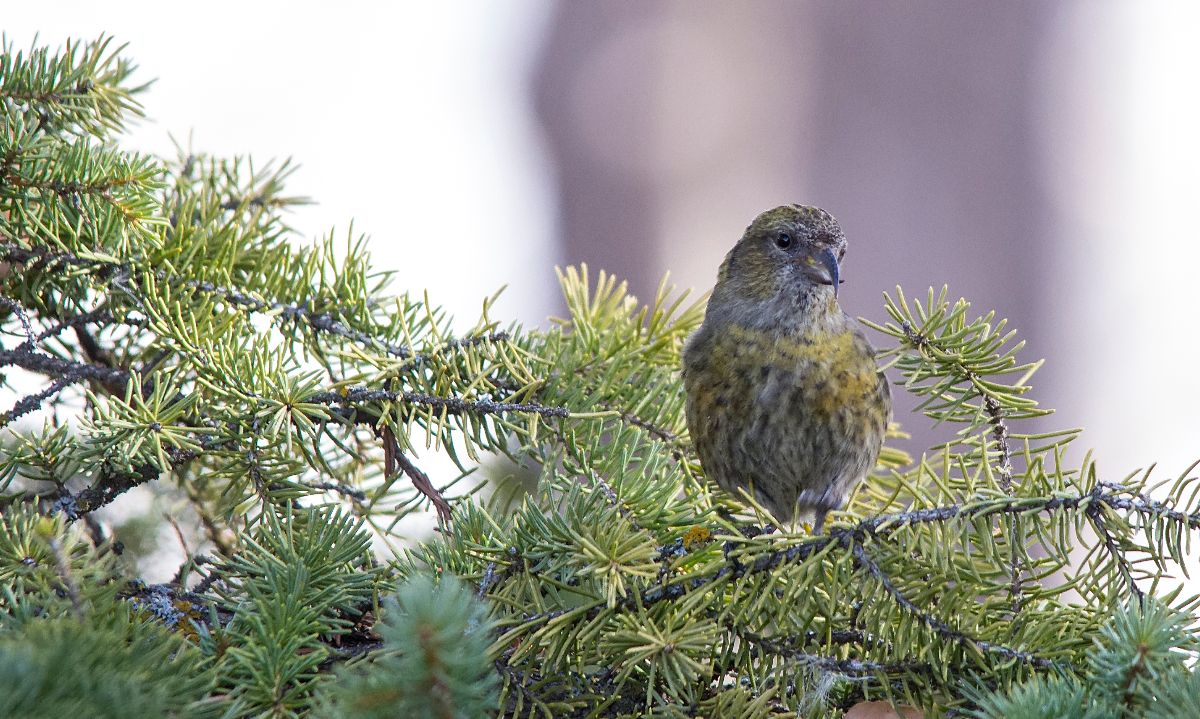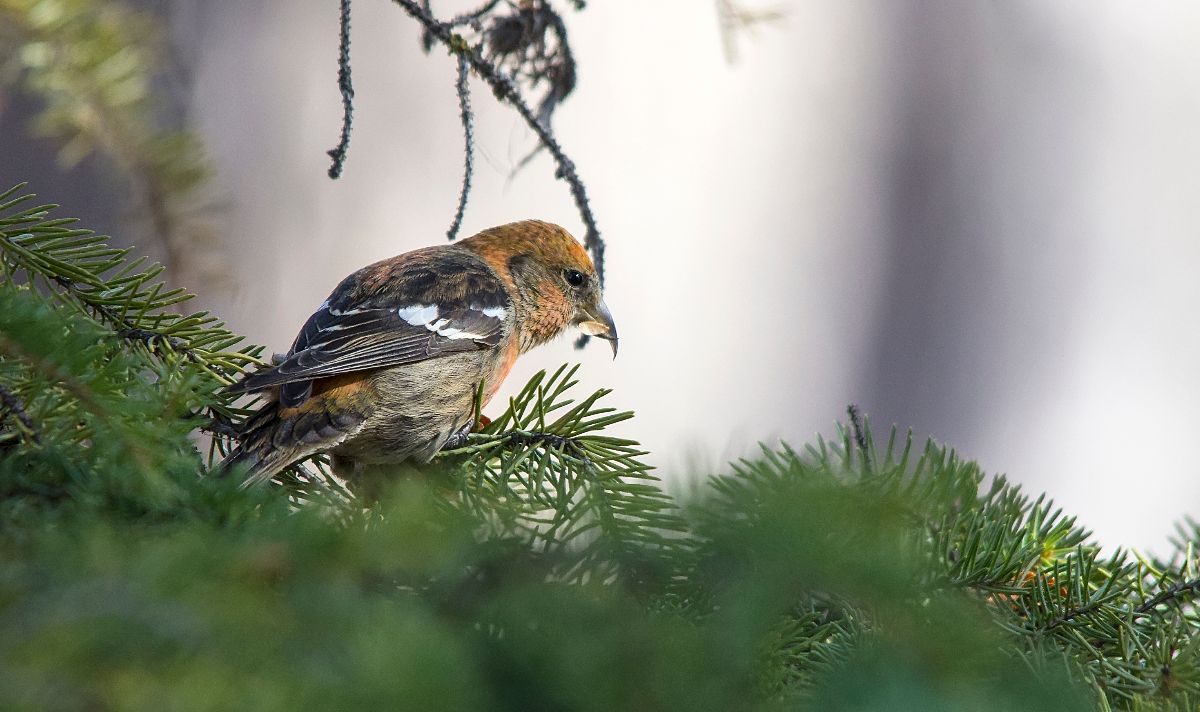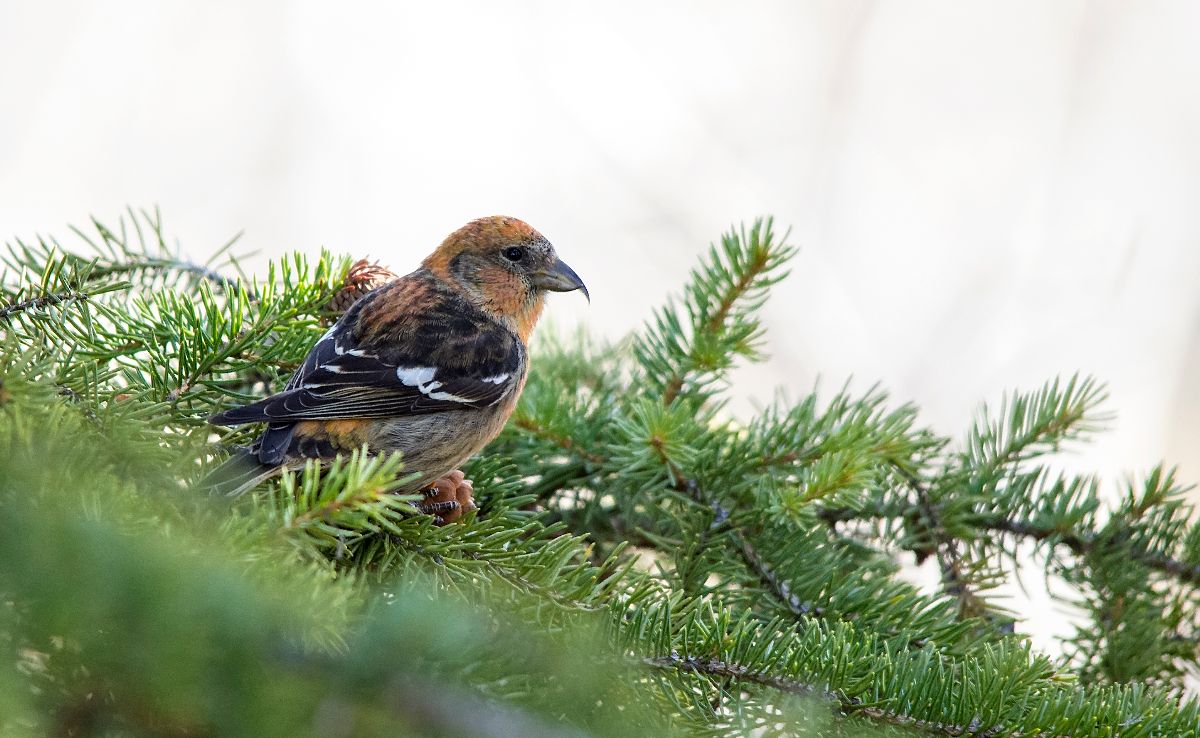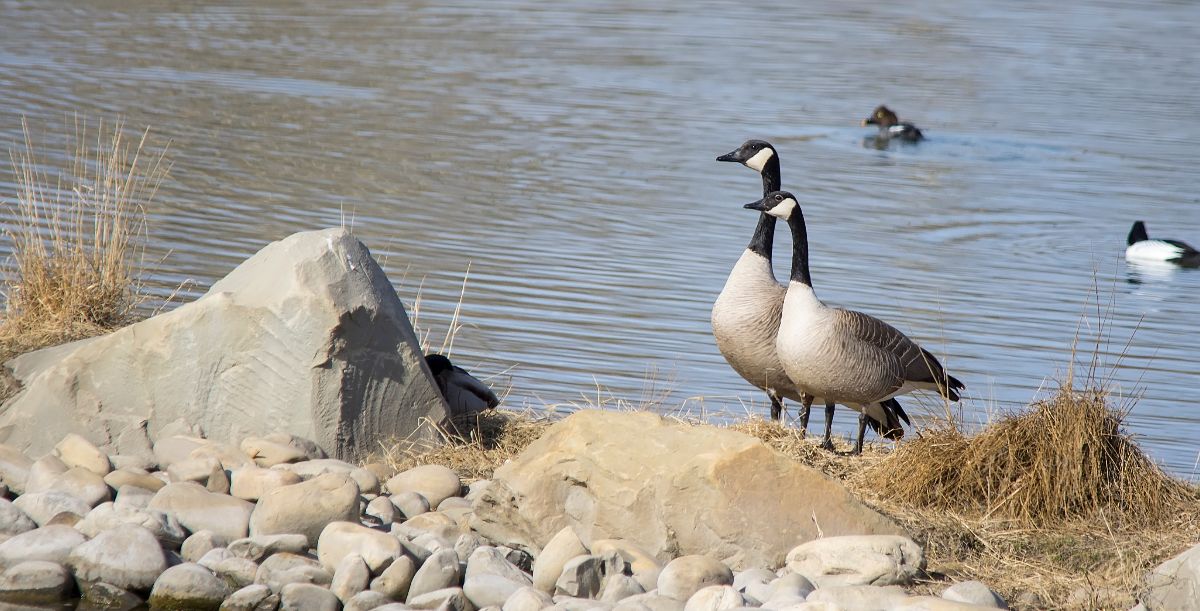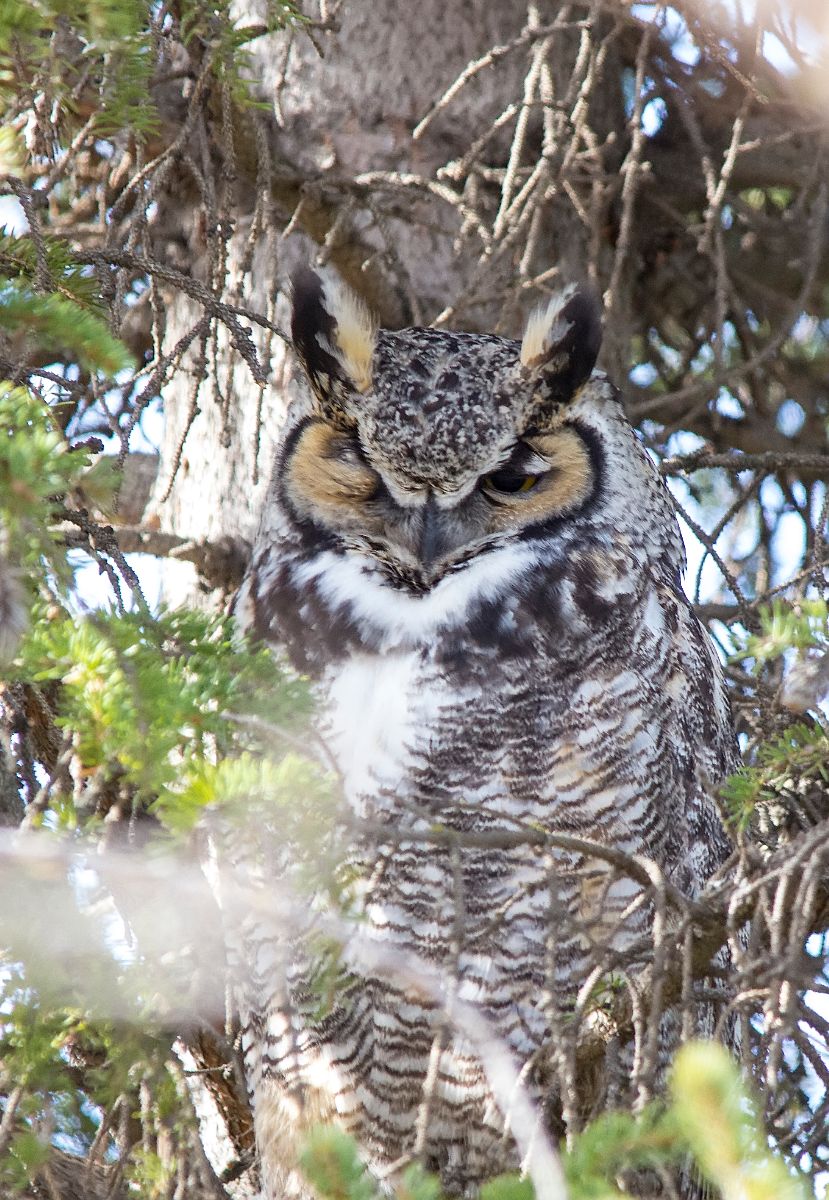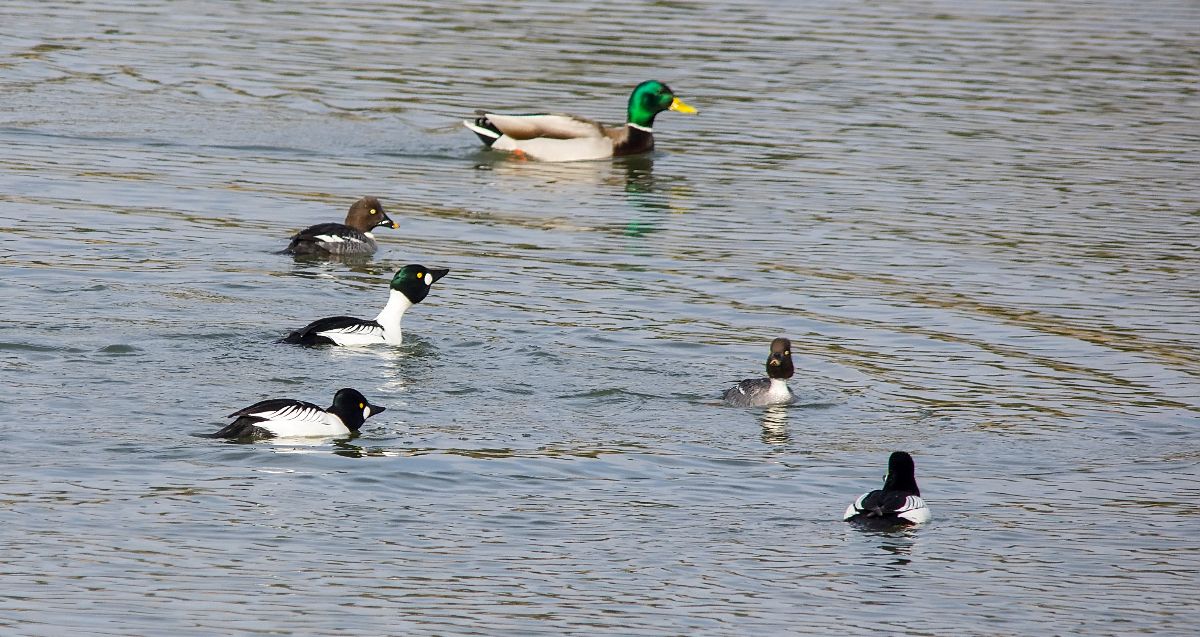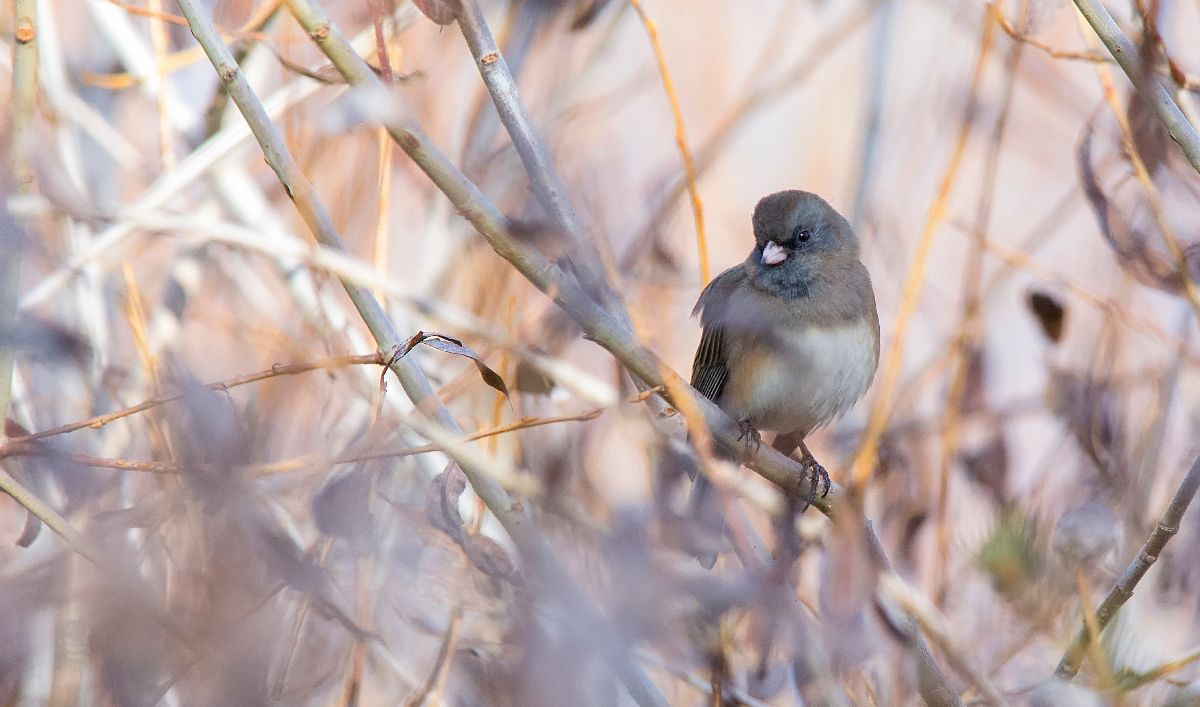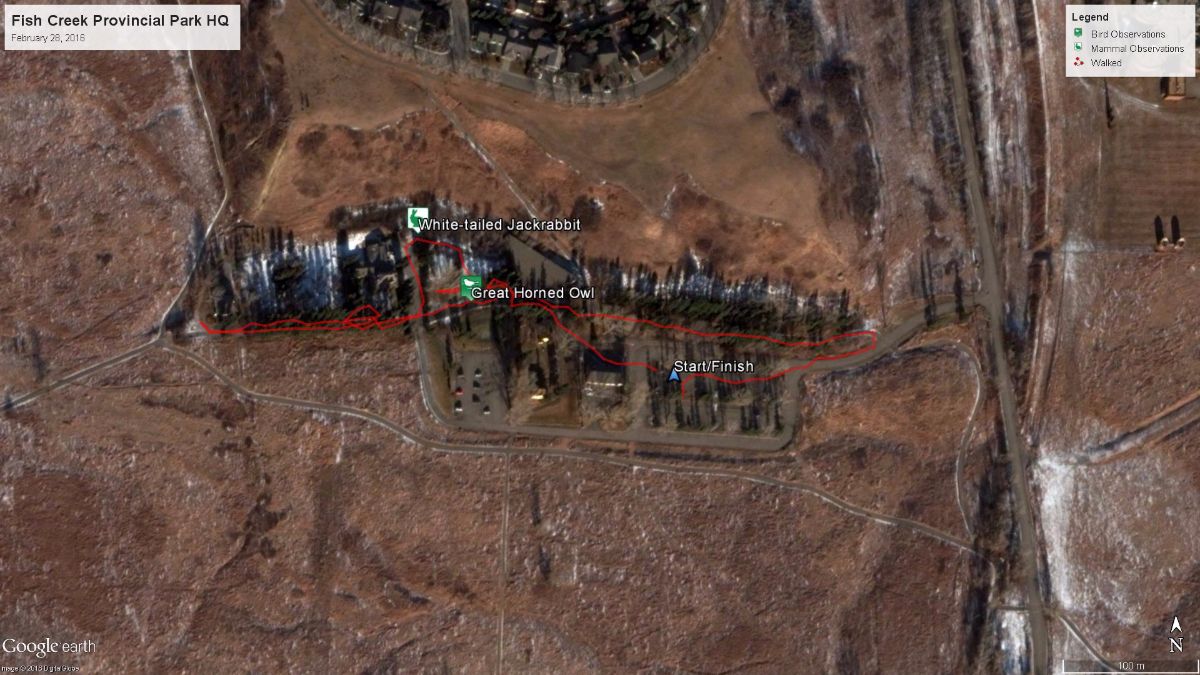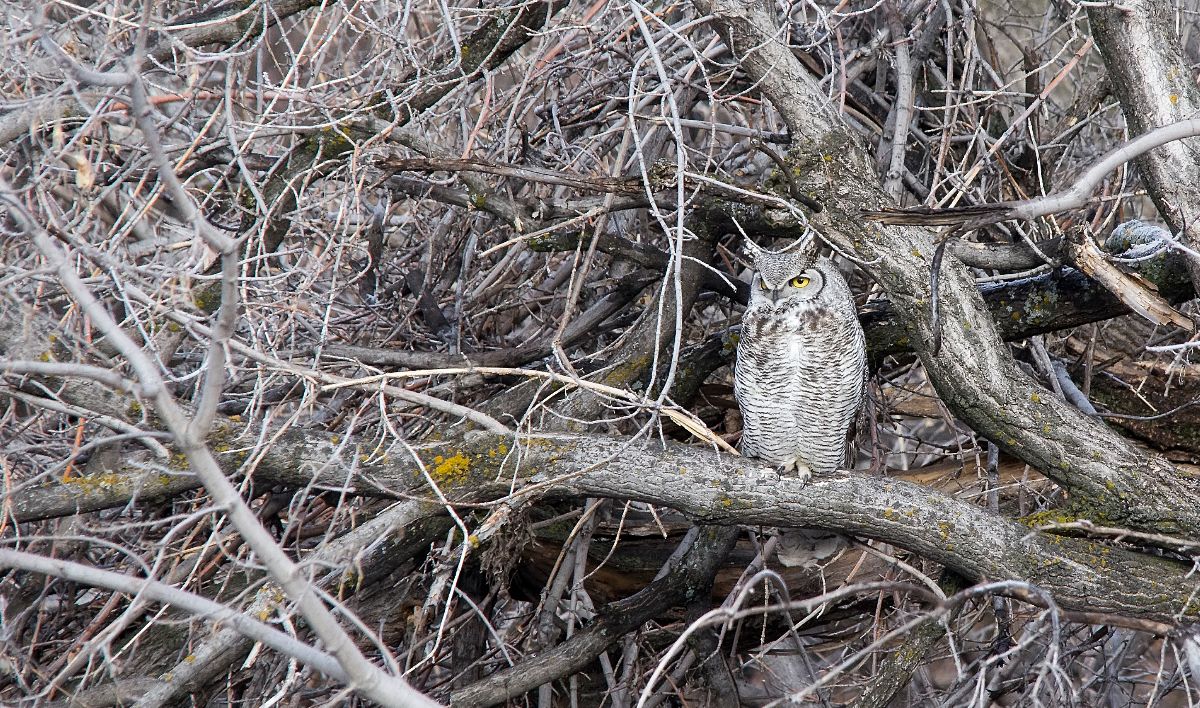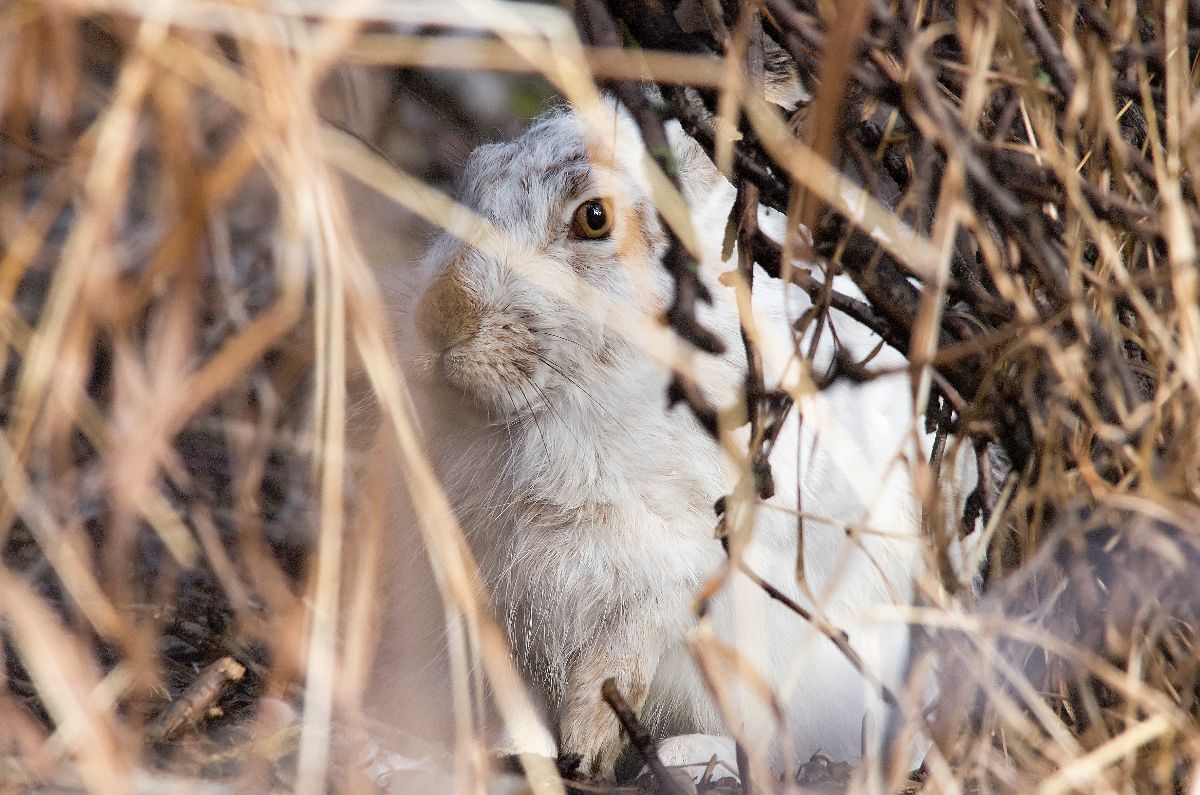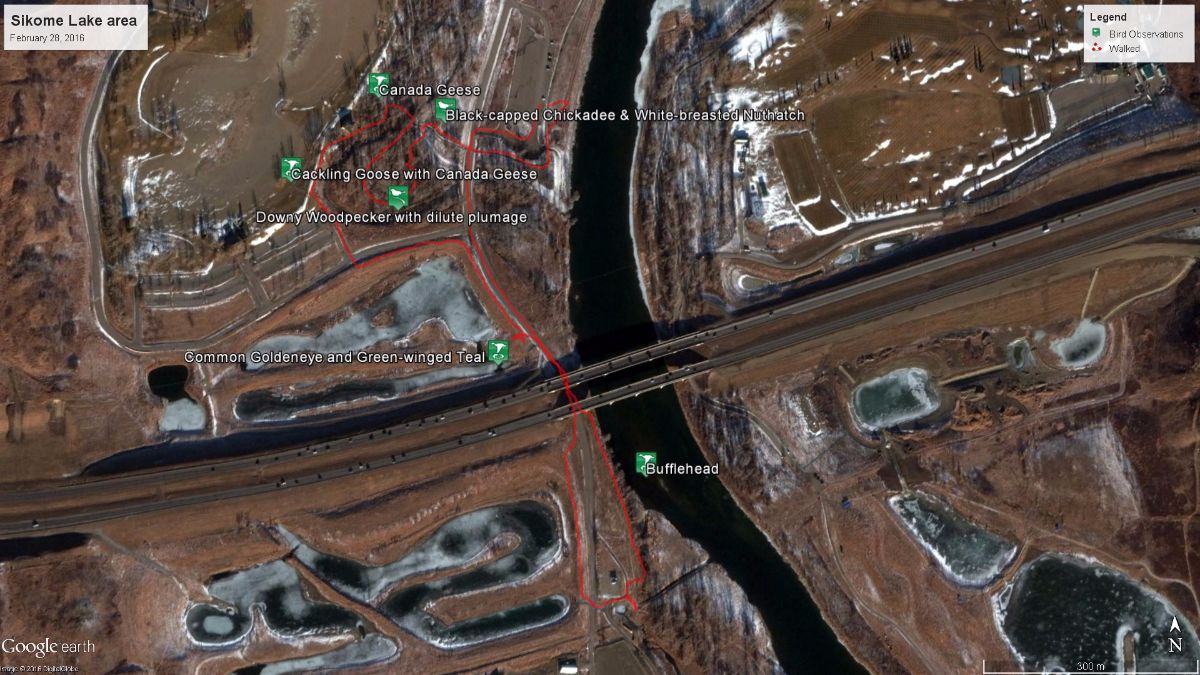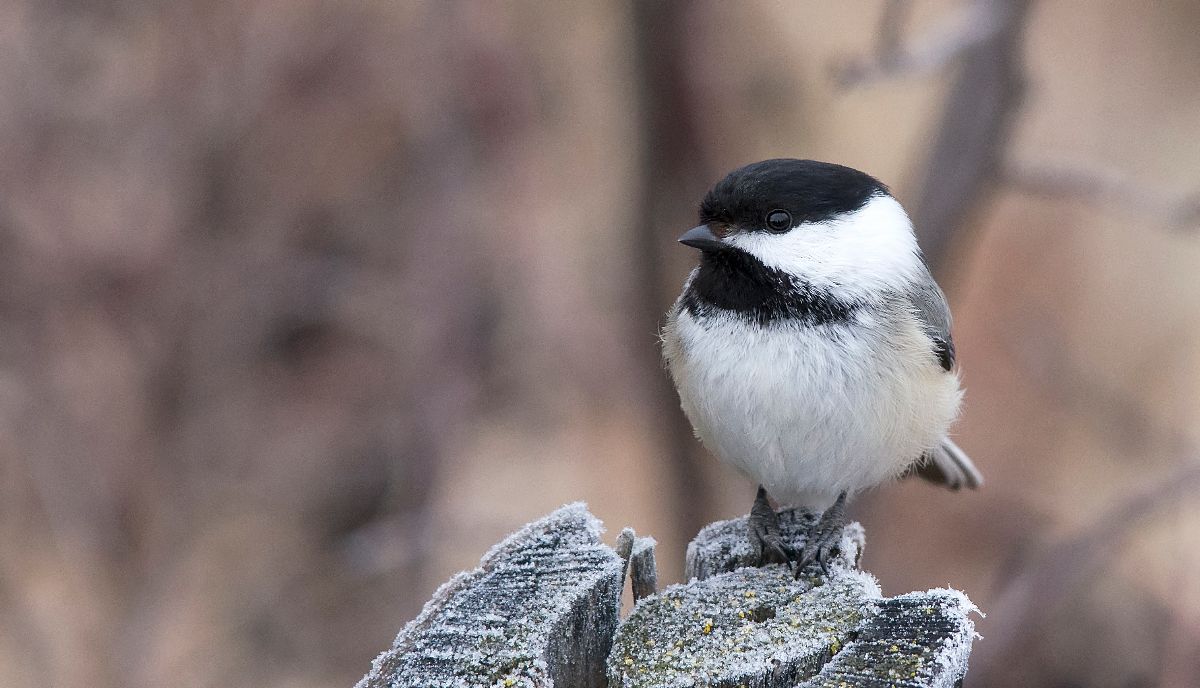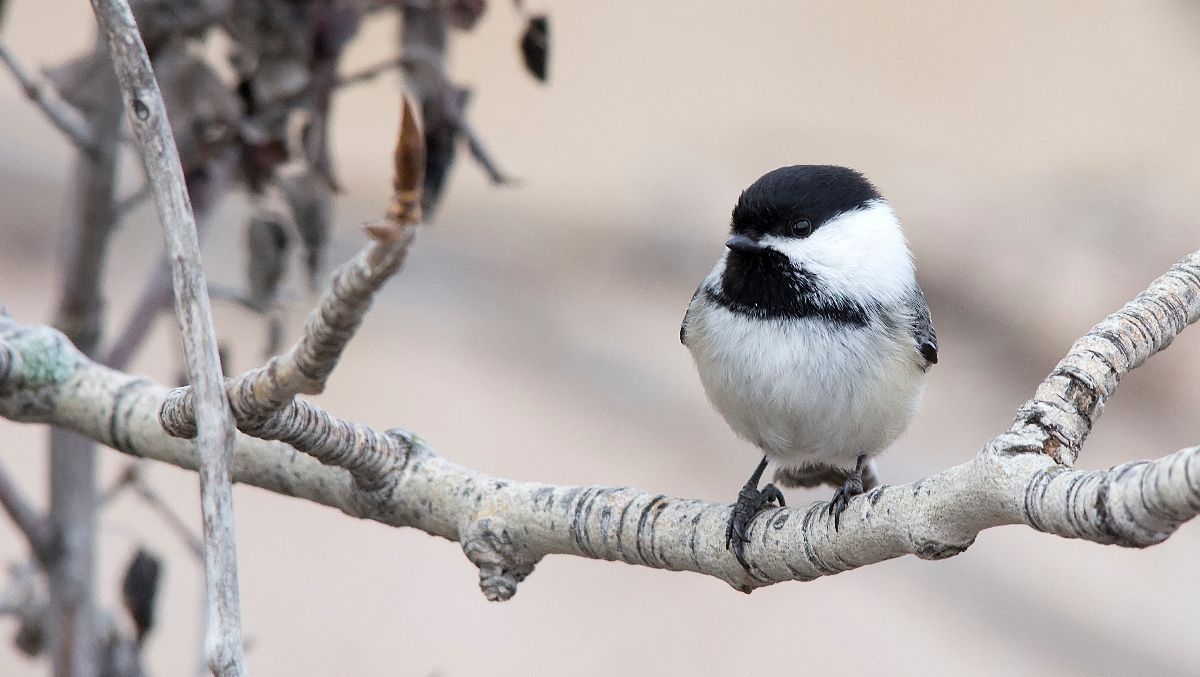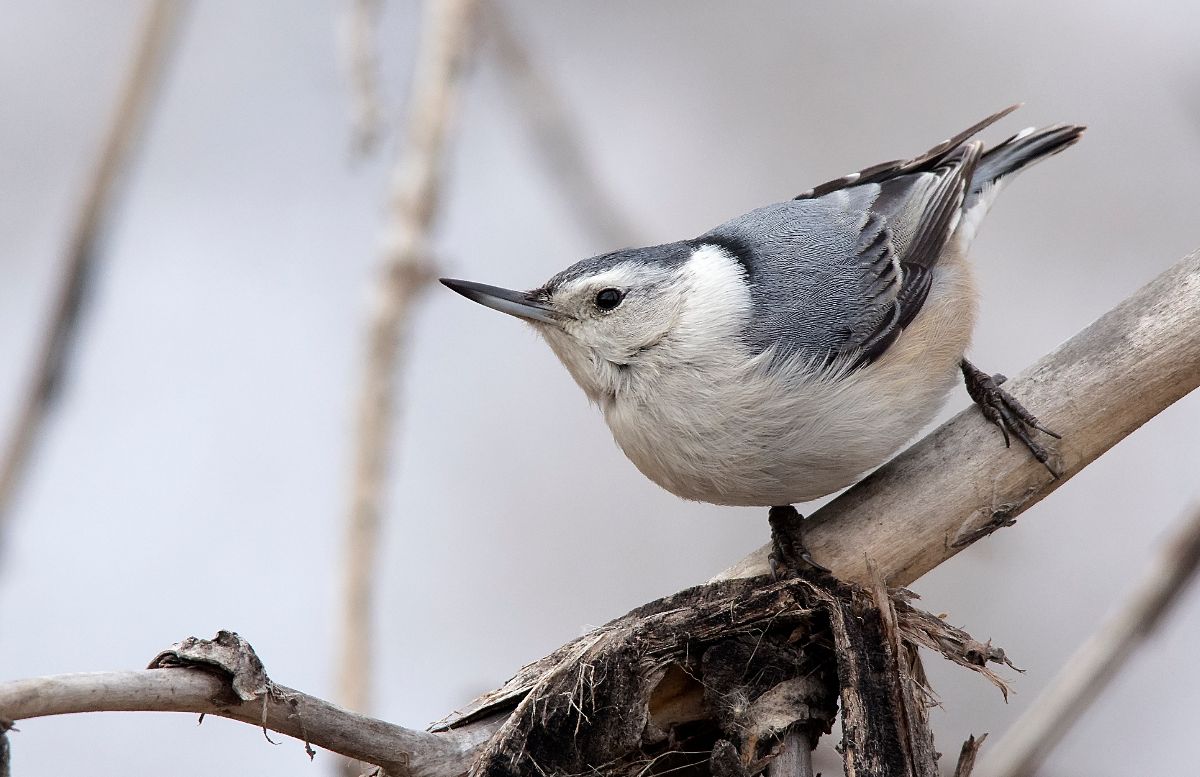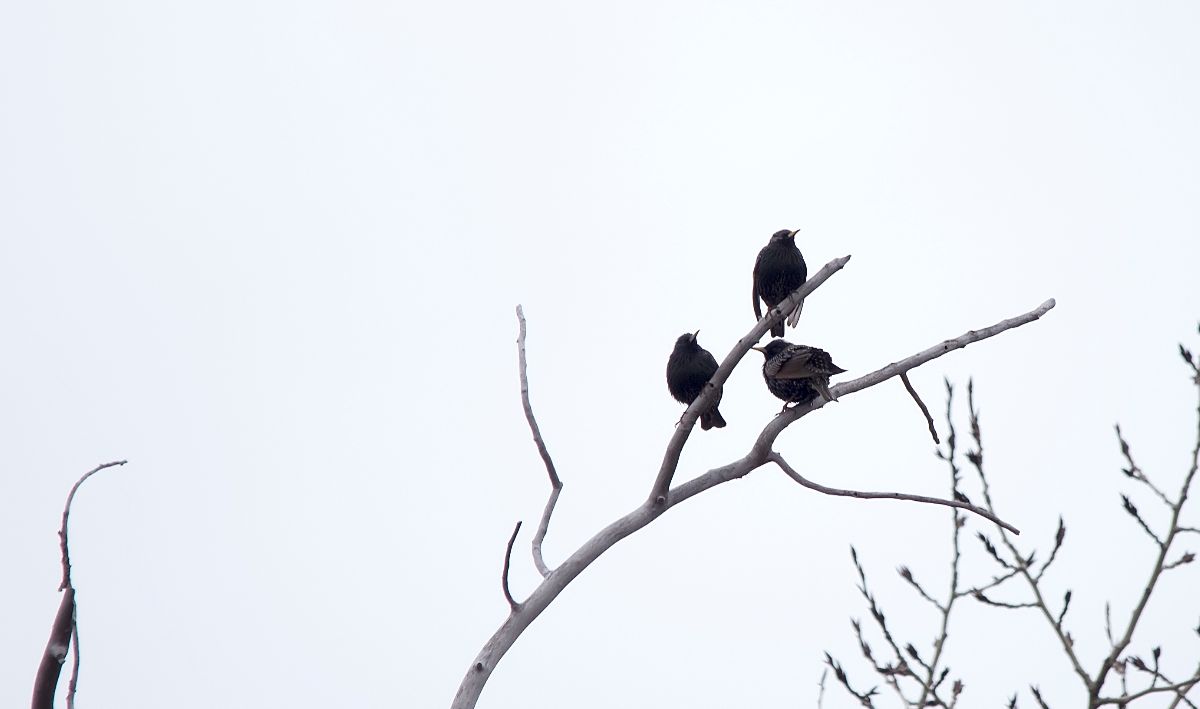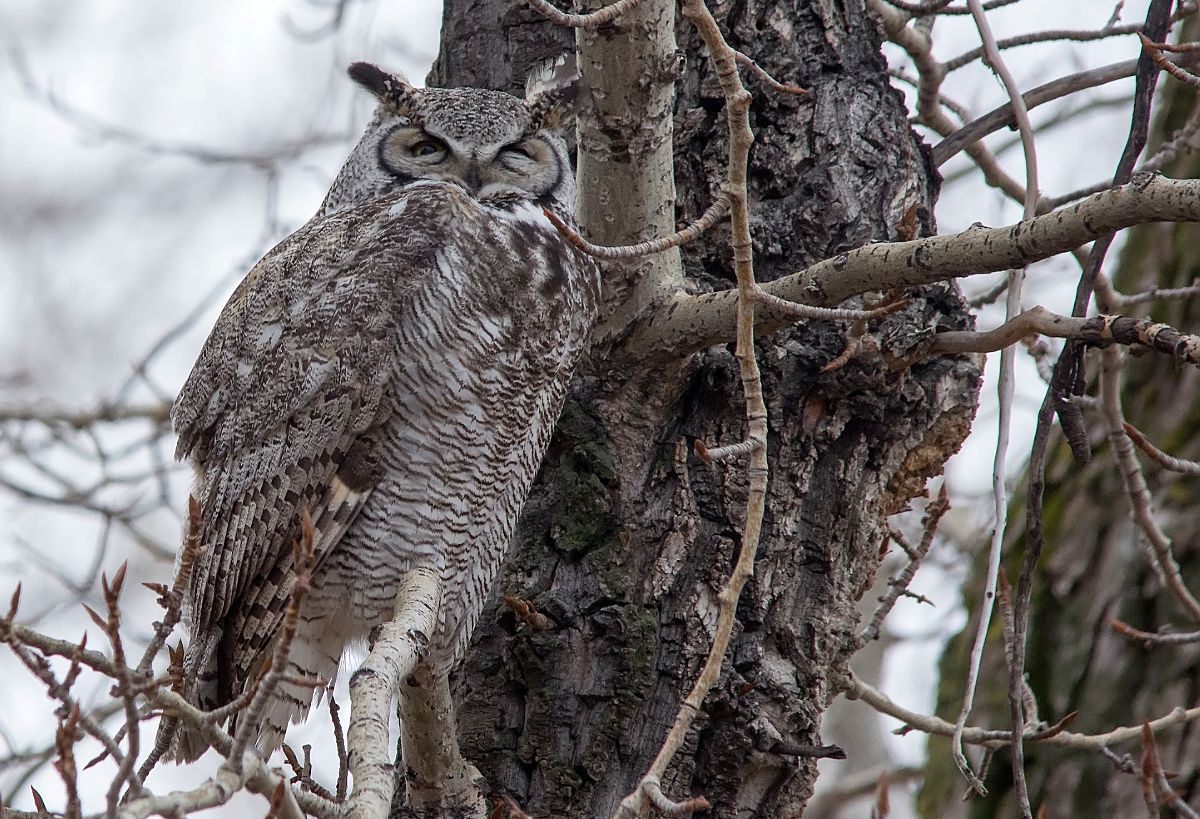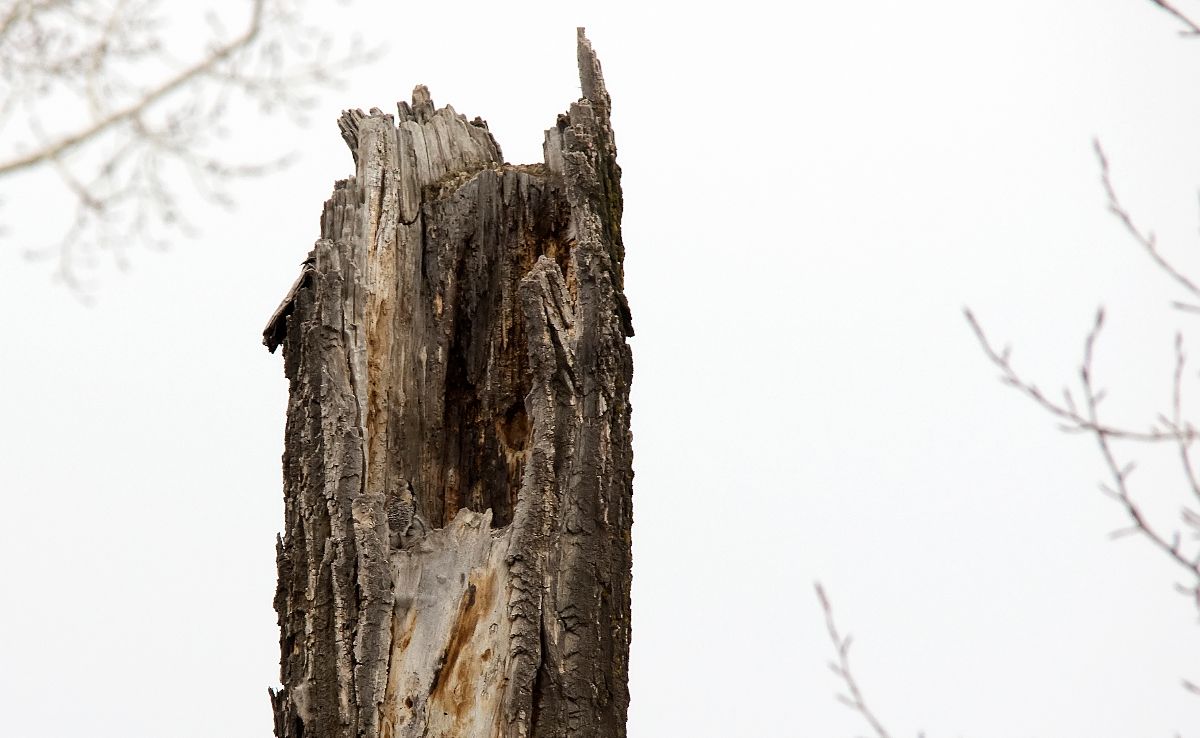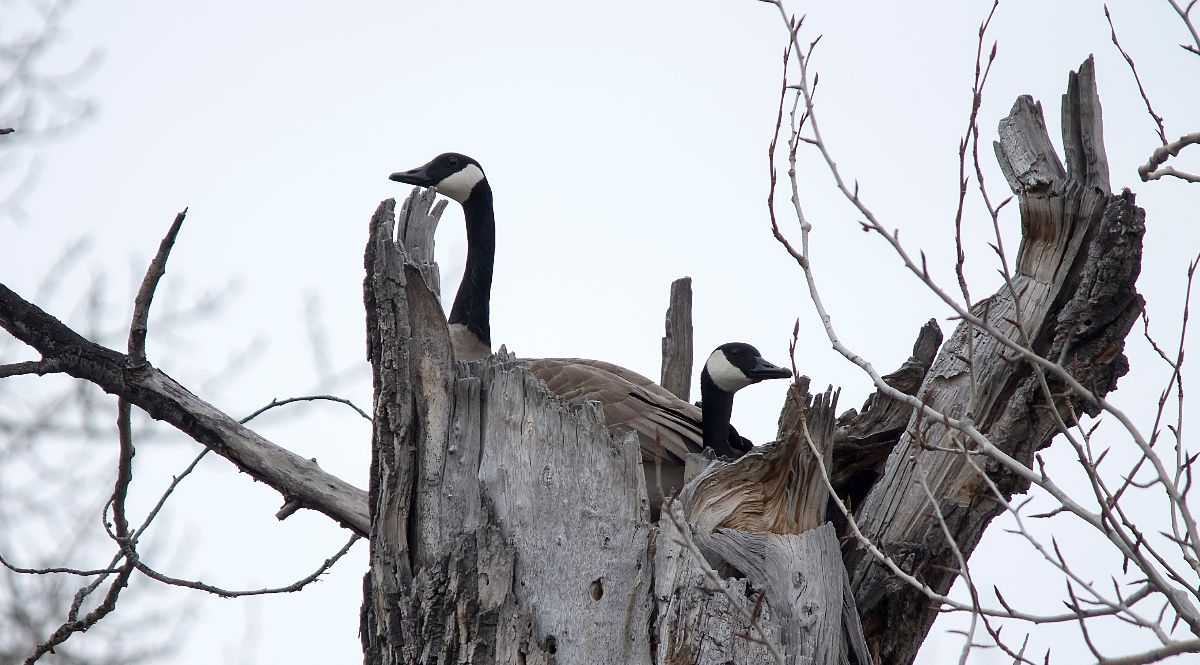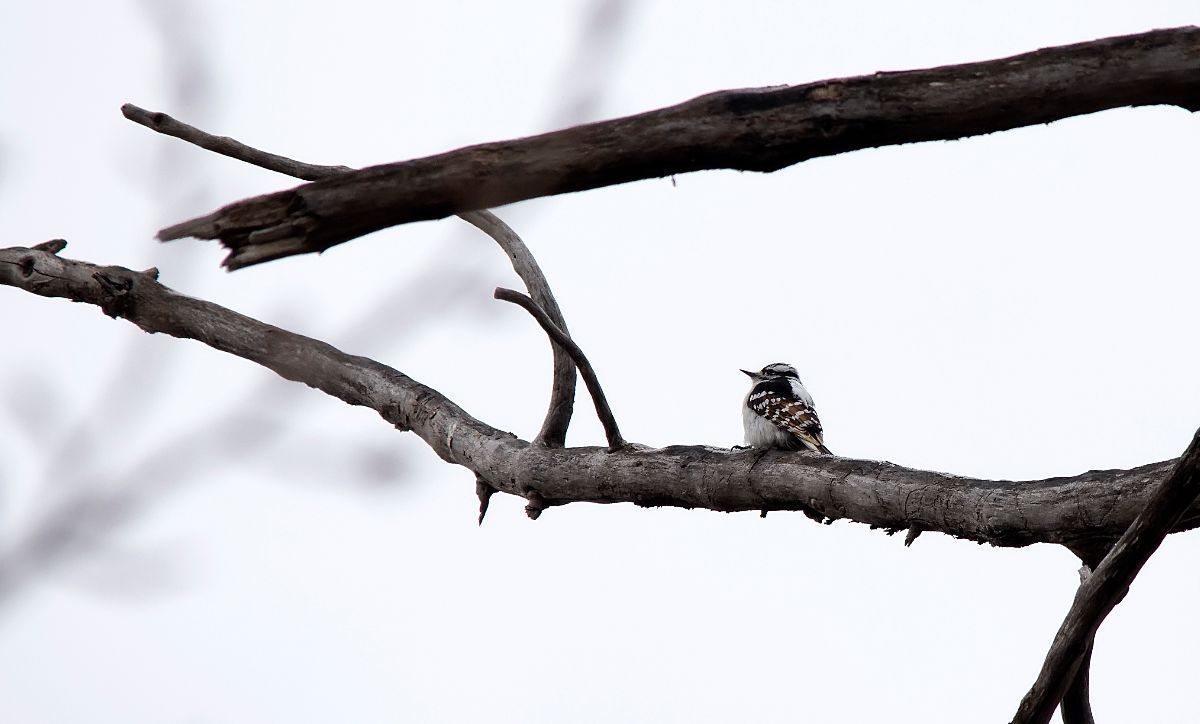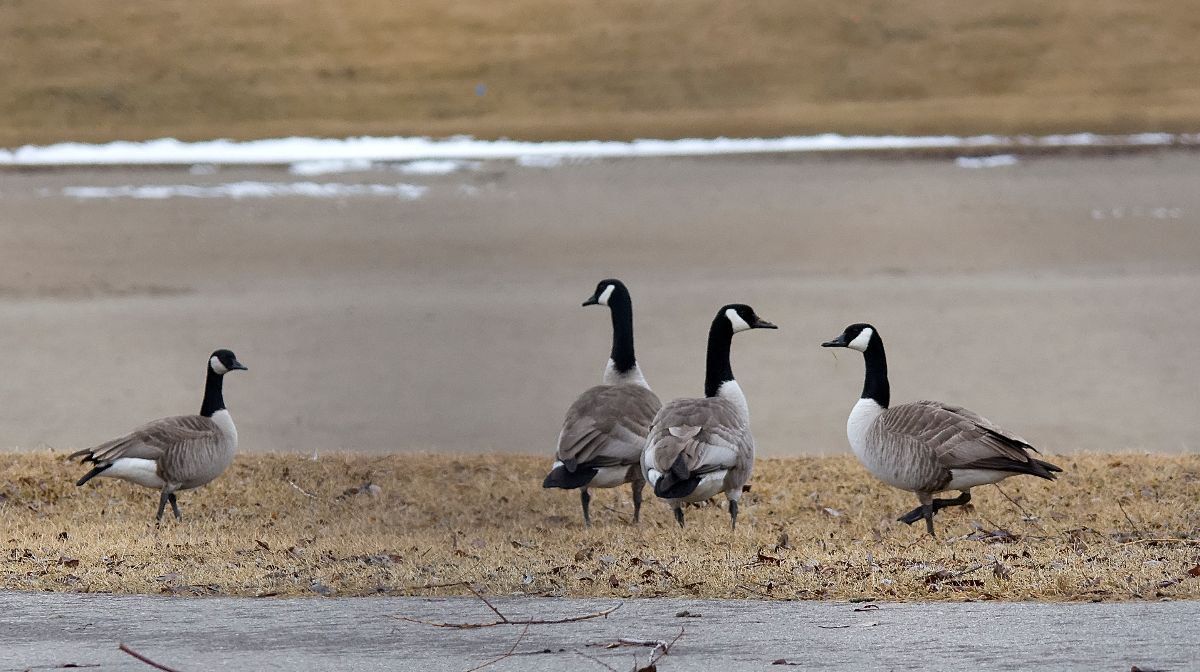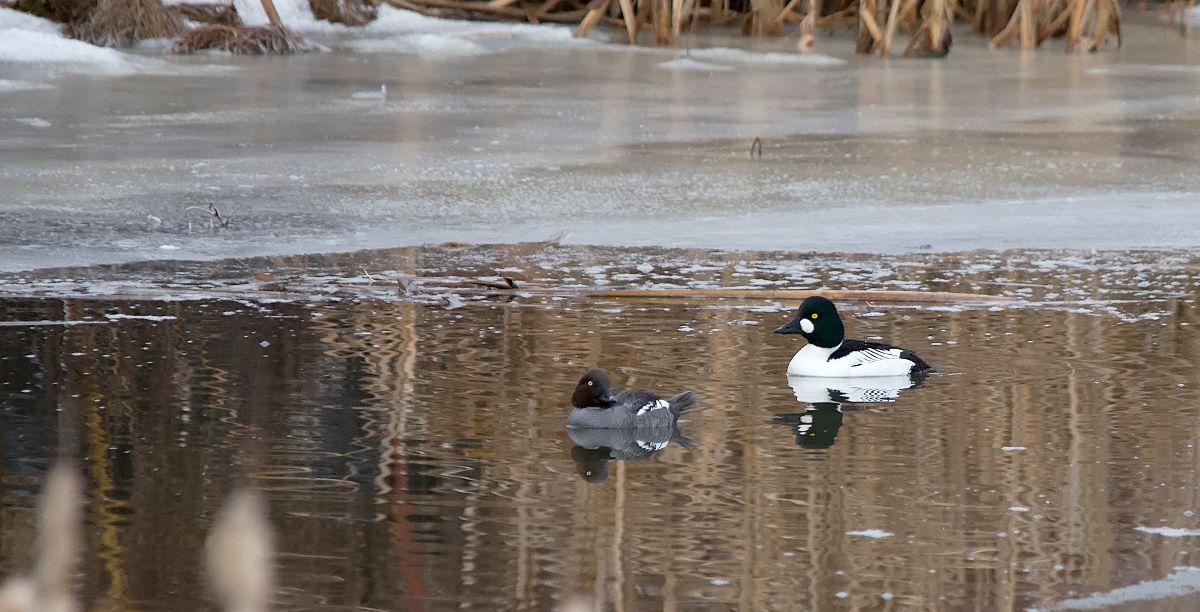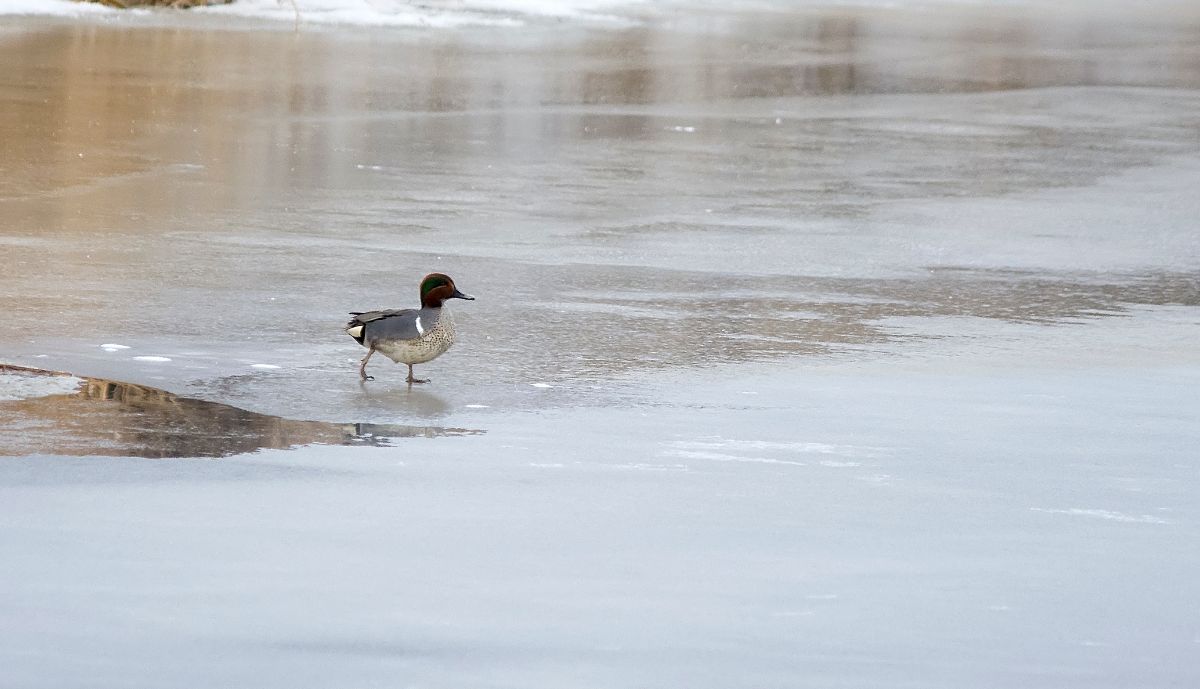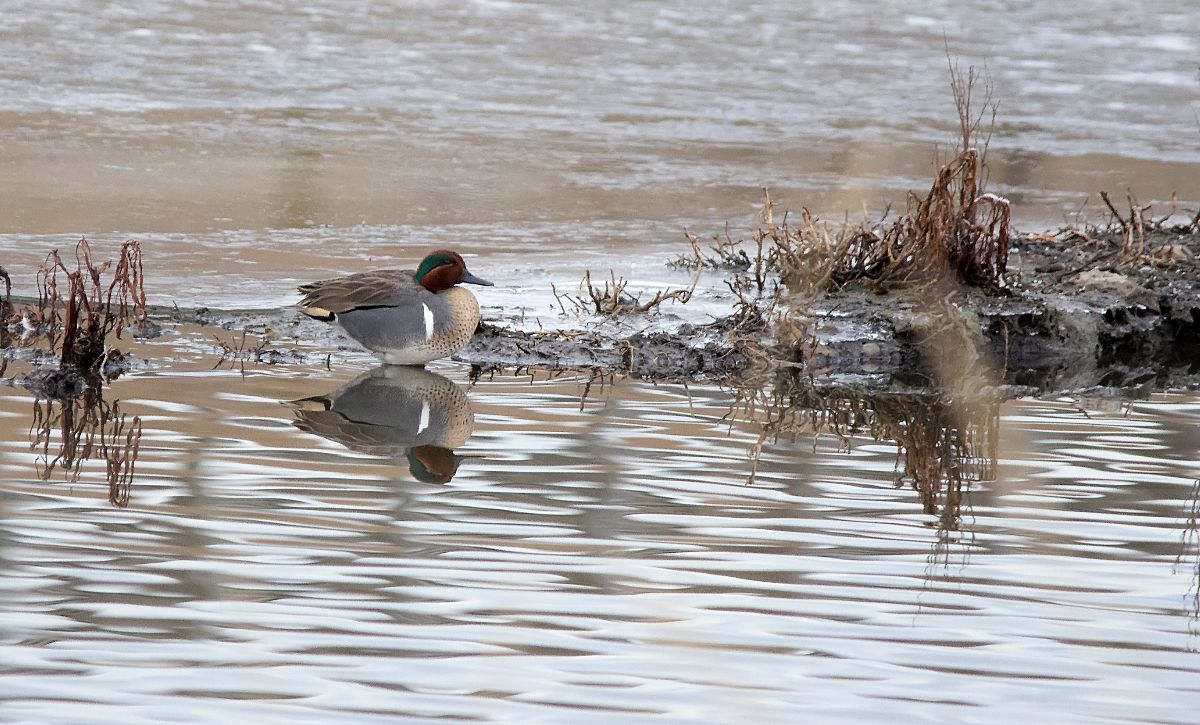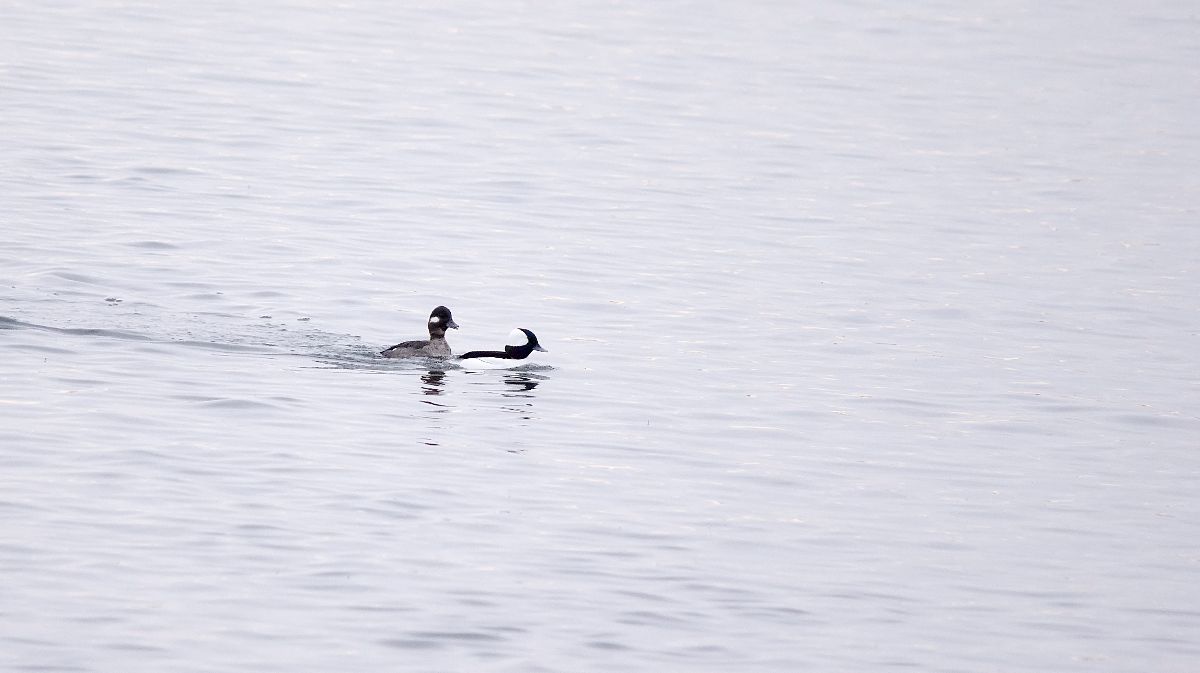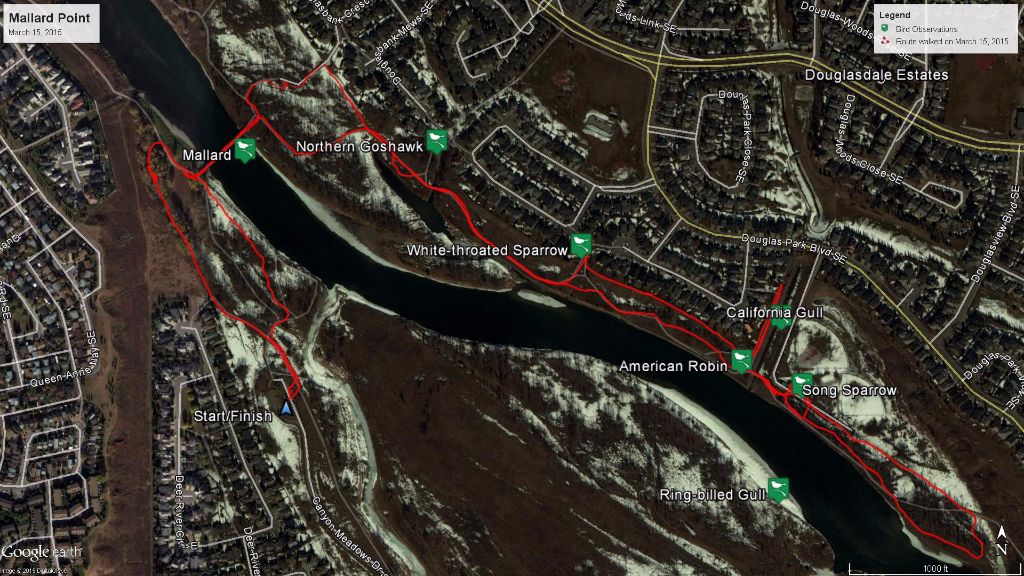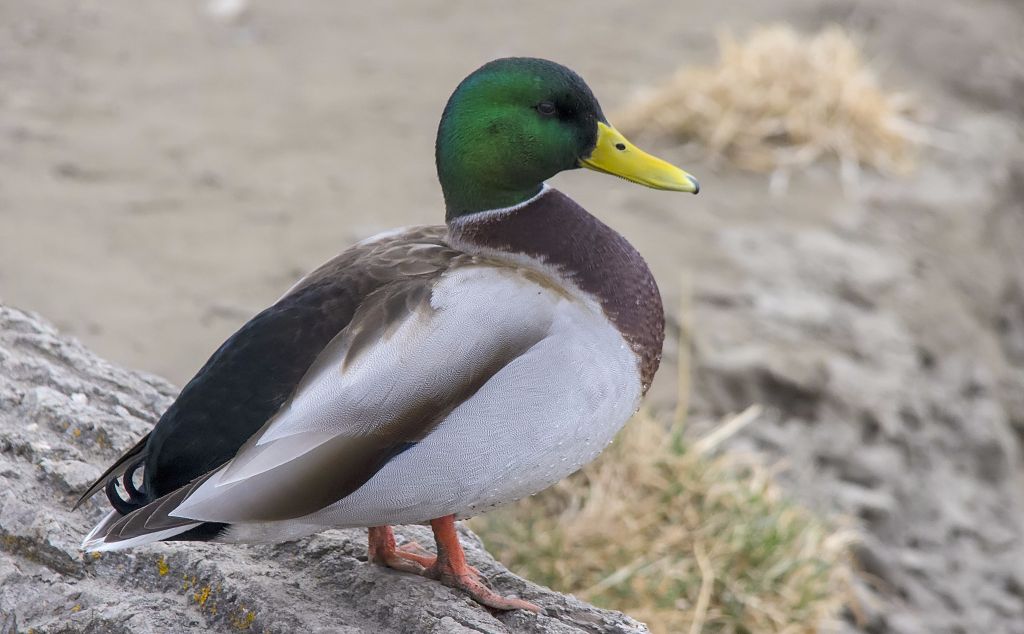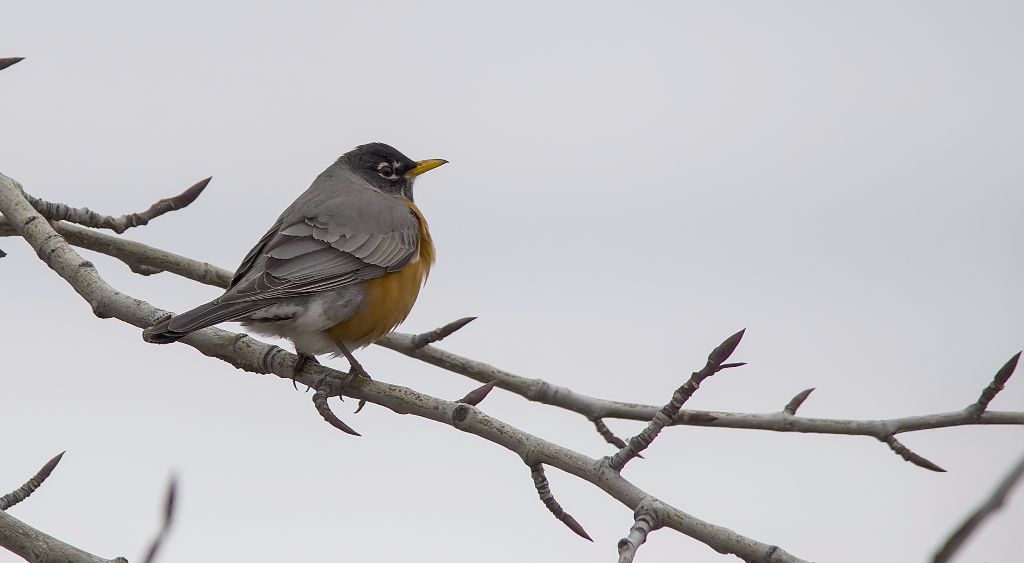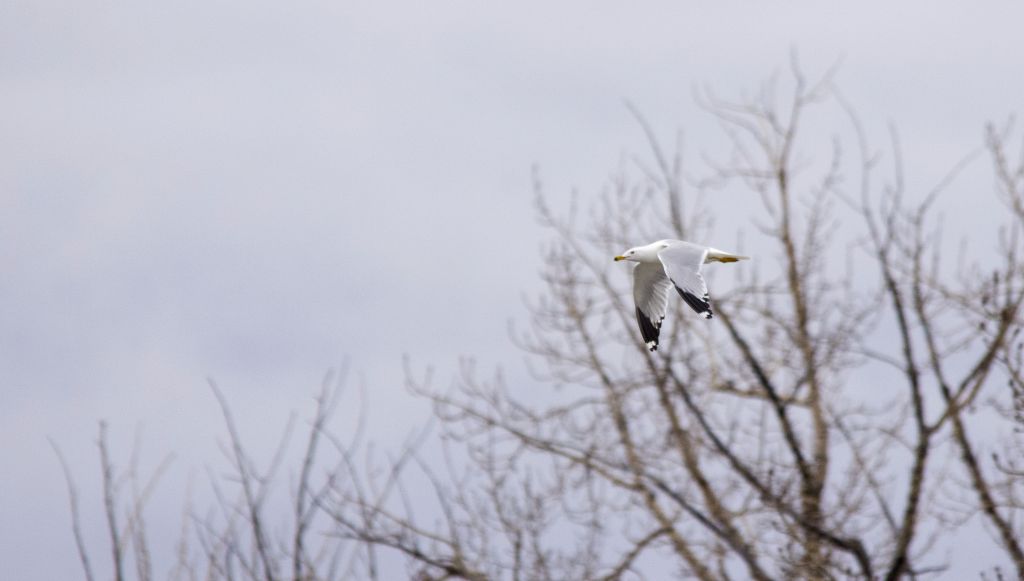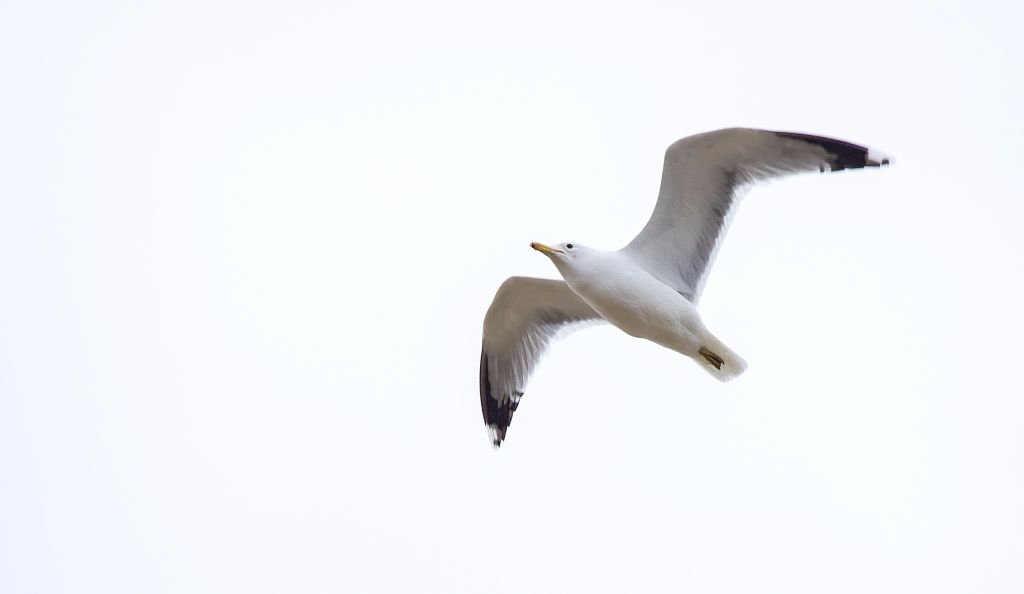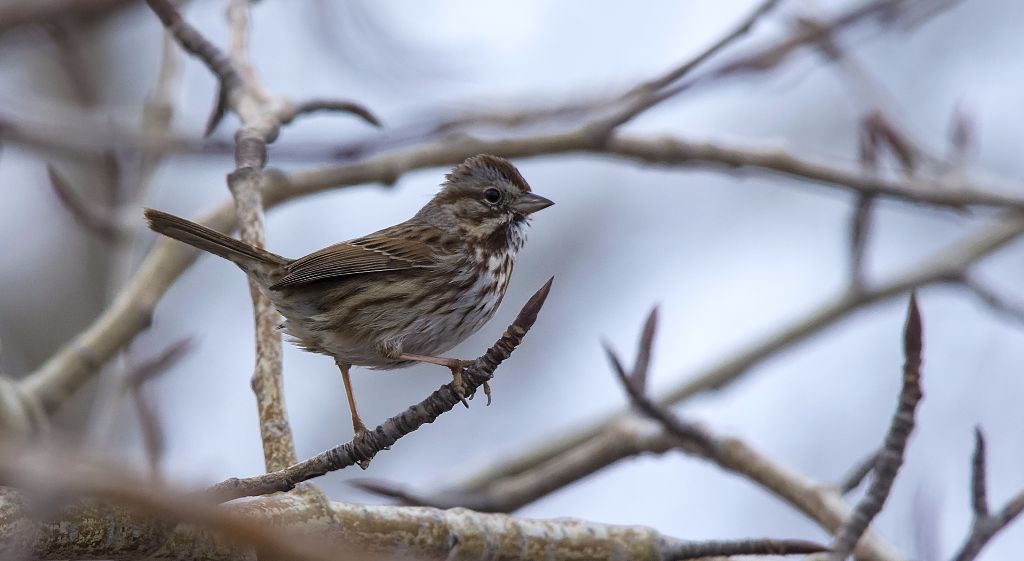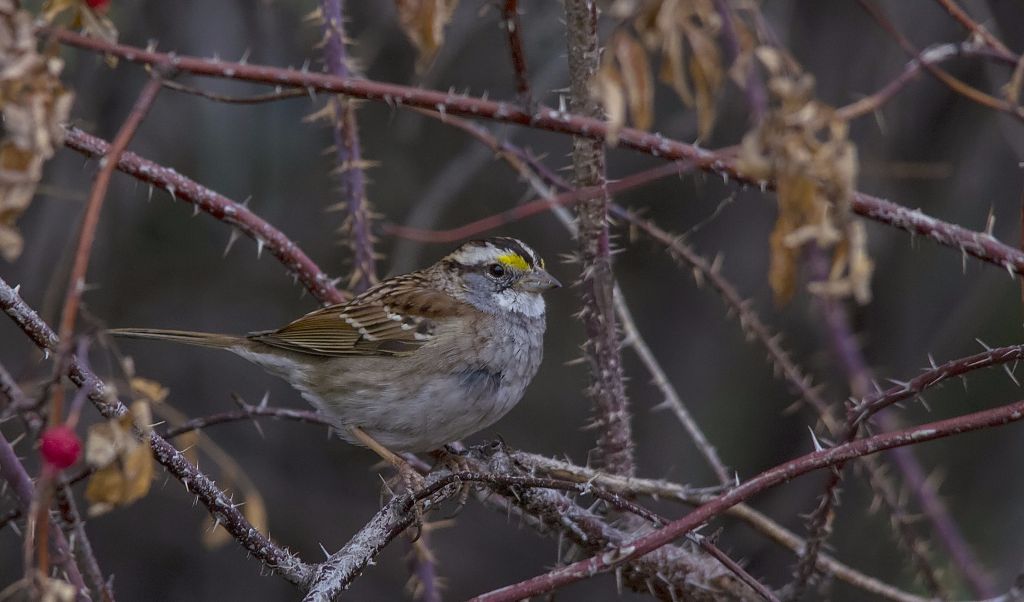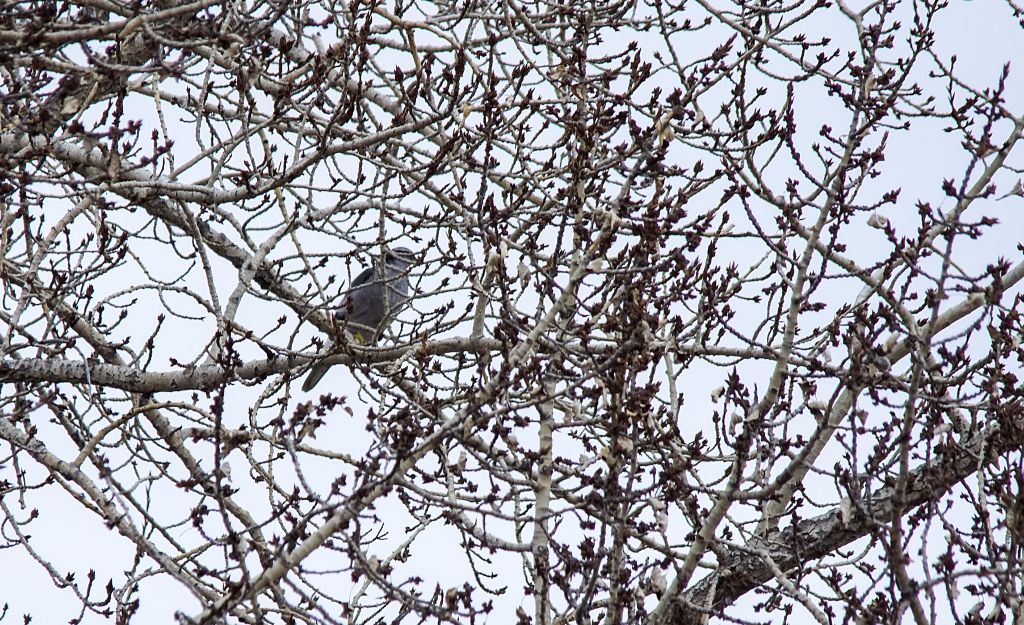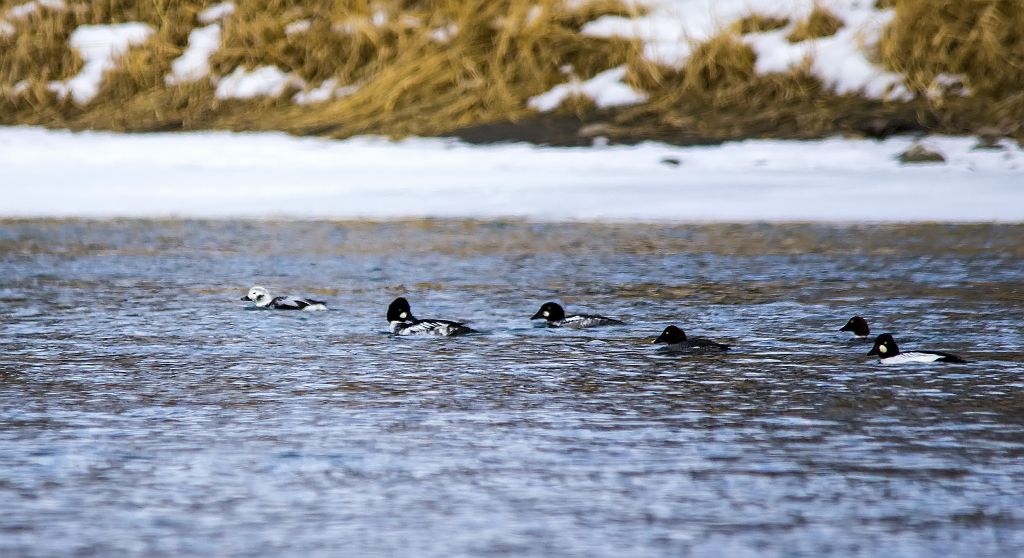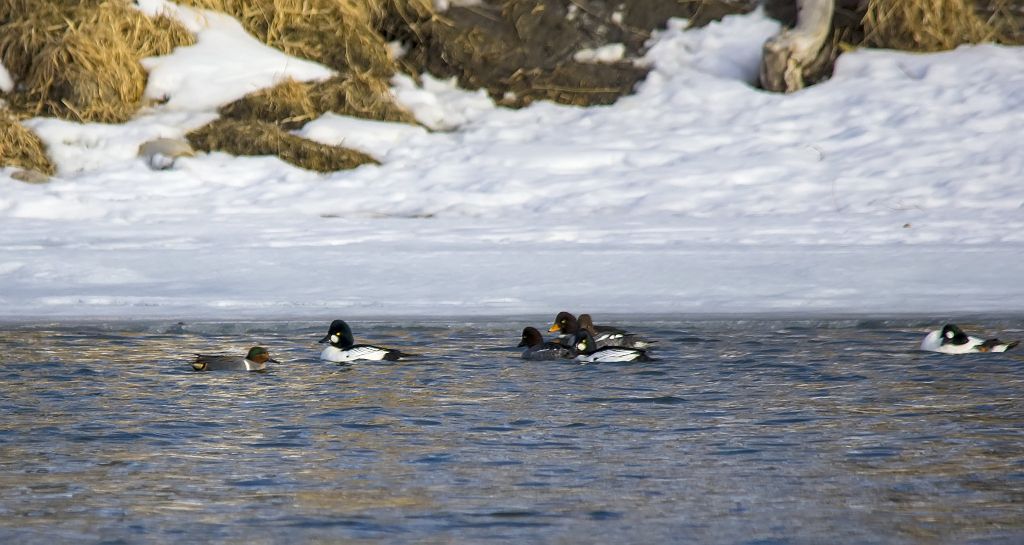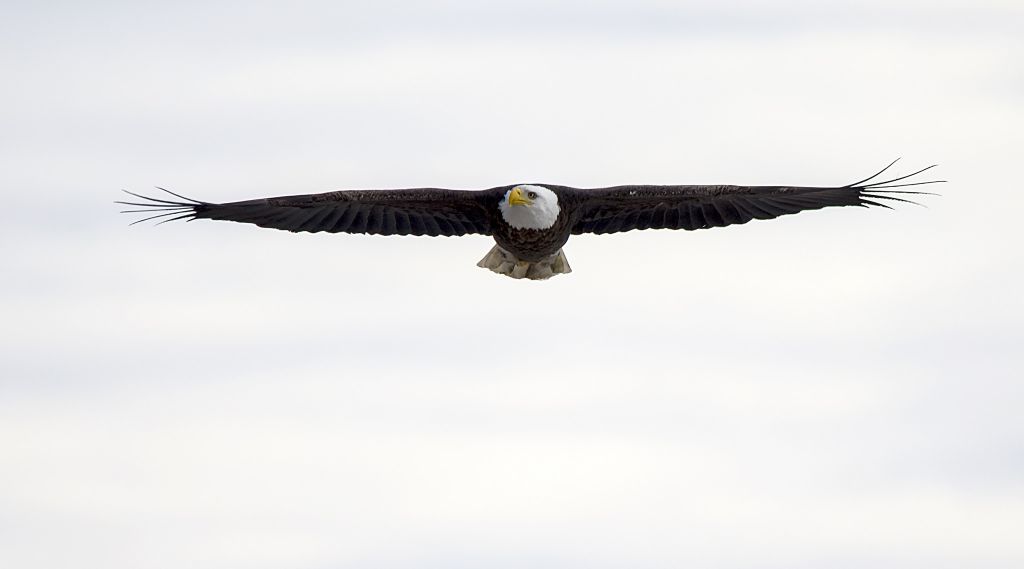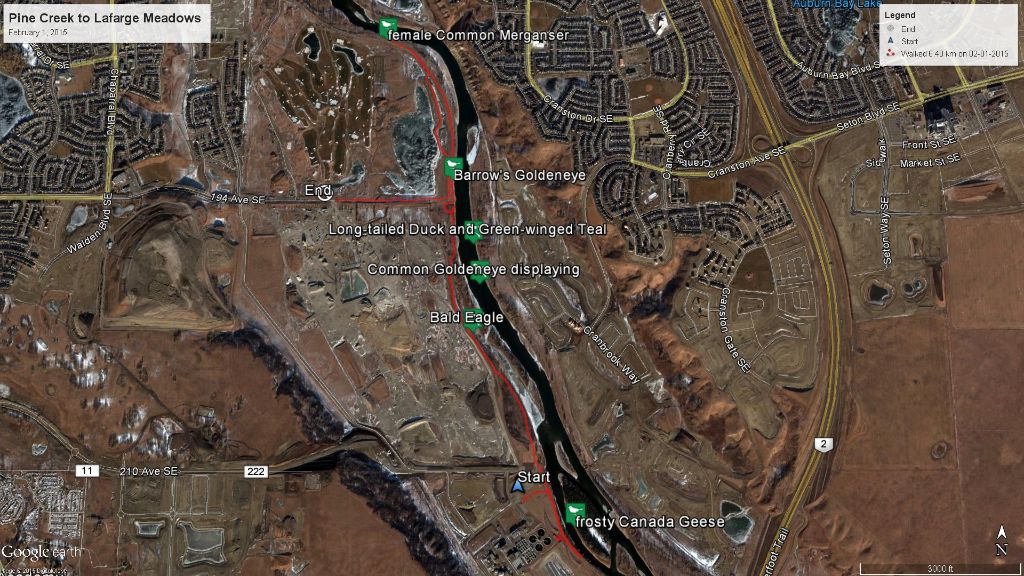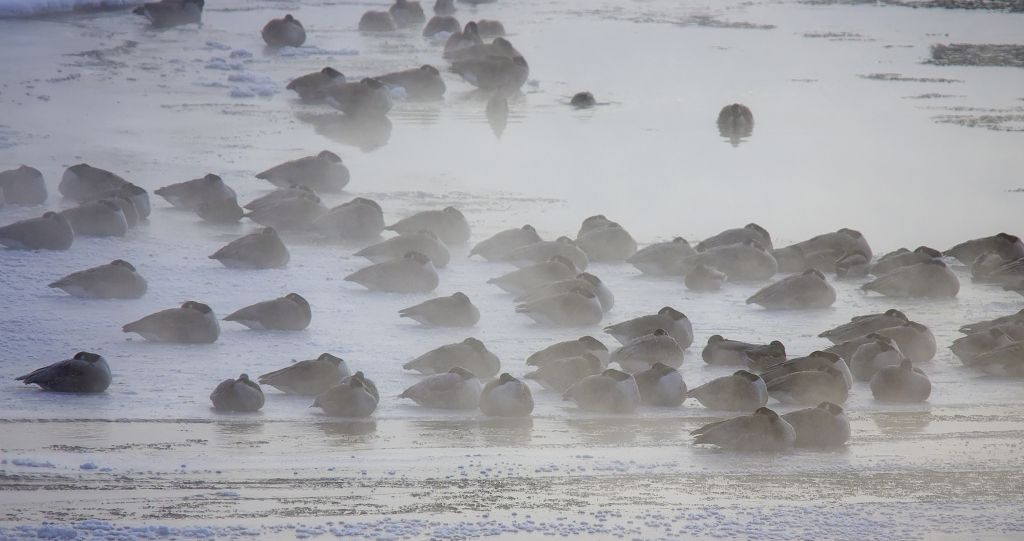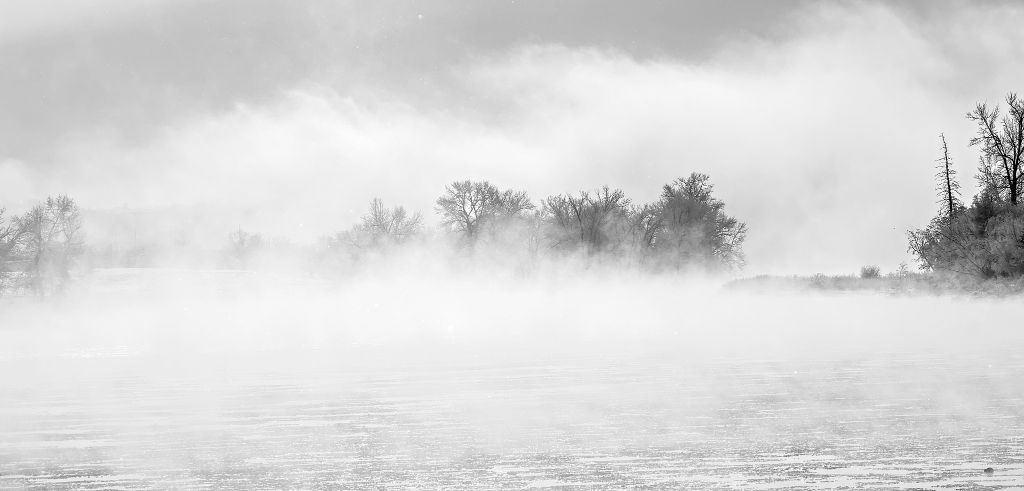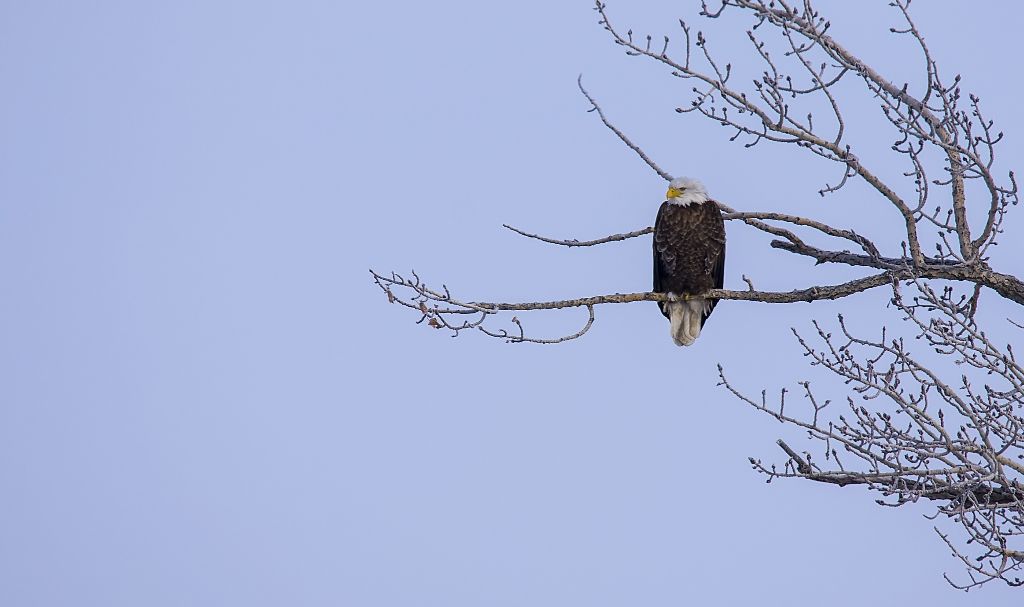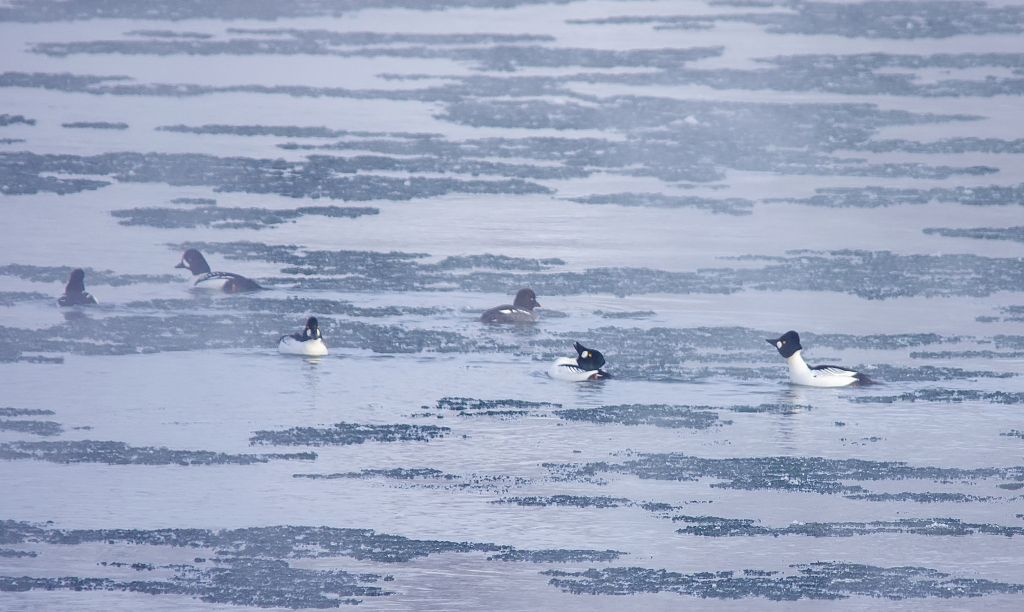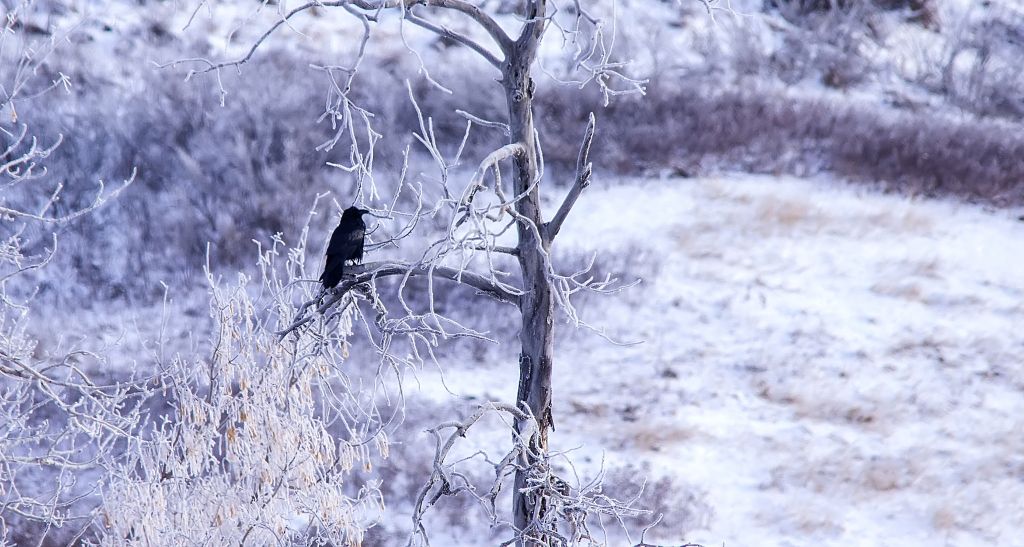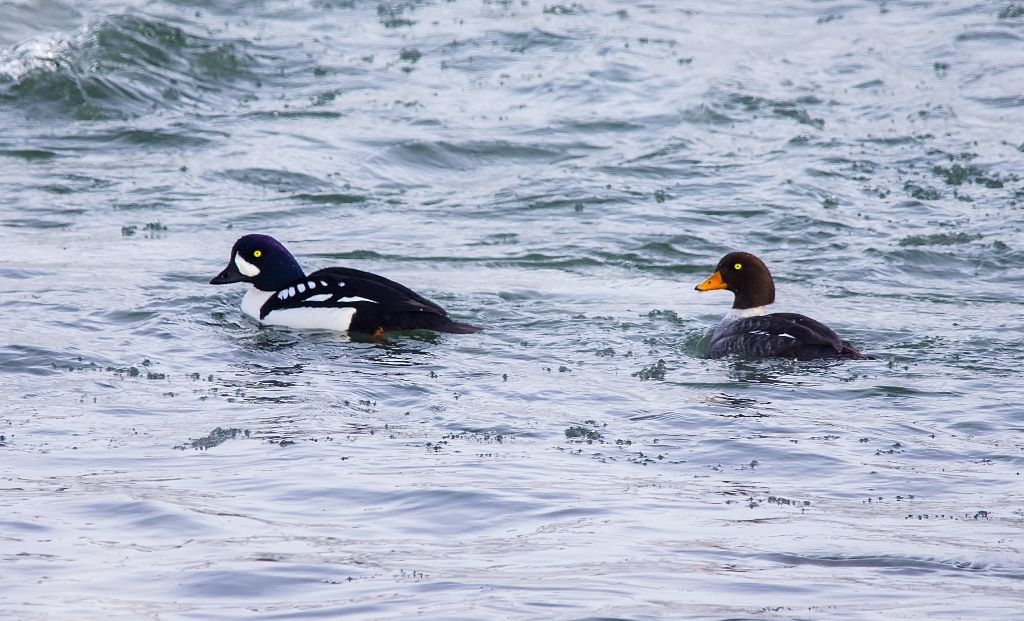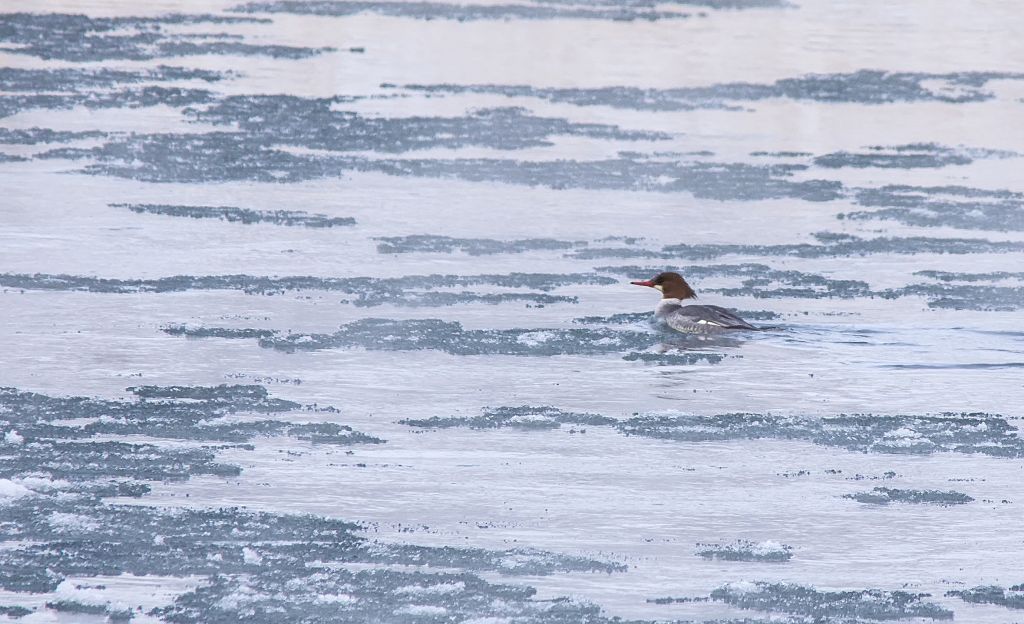Posted by Dan Arndt
I did say spring, right? Where did all the snow come from? While our last outing to South Glenmore Park was relatively cool, there wasn’t too much snow left, but in the week since we got a fresh dump of snow which is typical of our usual Calgary spring weather. Certainly the birds and mammals we saw on our walk showed at least a little displeasure at the situation!
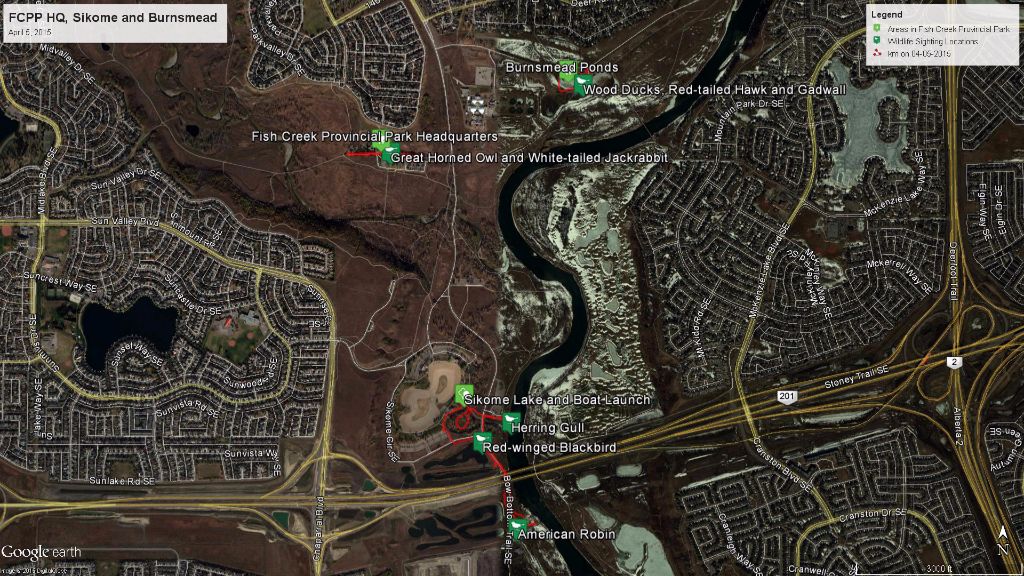
Headquarters area, Sikome Lake and Burnsmead ponds – April 5, 2015
We had three stops on our initial outing last week, with a visit to the Fish Creek Provincial Park Headquarters area, then down to Sikome Lake, and finally ended up at the Burnsmead ponds to check out some puddle ducks that one of our leaders, Rose Painter, had spotted before the beginning of our walk. We’ve also begun our walks at 8 AM for the spring course, so we’re getting out a little bit earlier and closer to sunrise to maximize the bird activity for the duration of our outing.
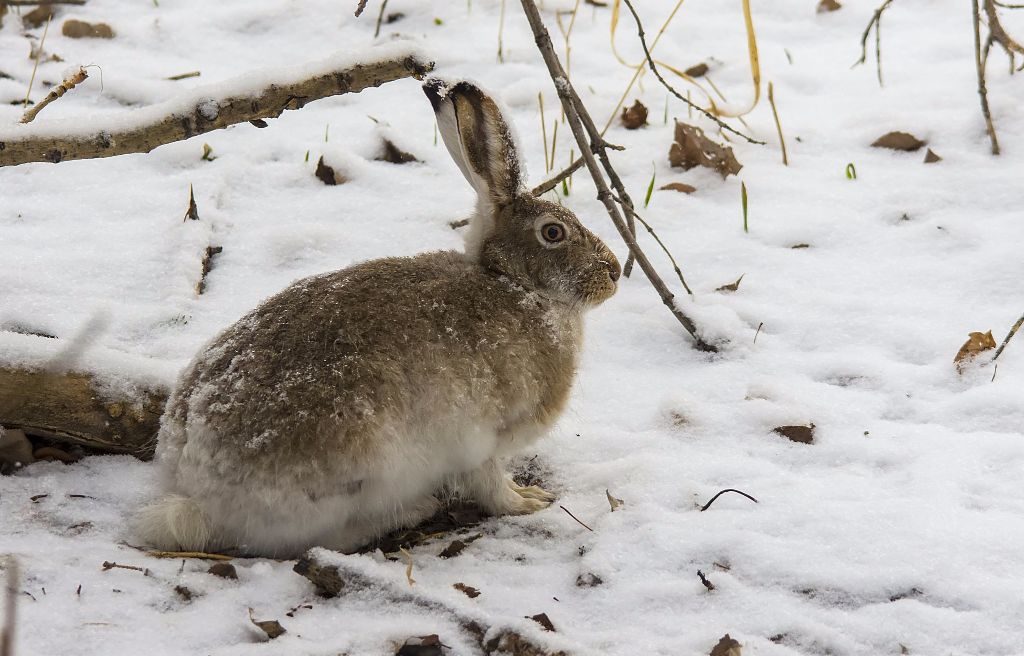
White-tailed Jackrabbit
Pentax K-5 + Sigma 150-500@230mm
1/640sec., ƒ/6.3, ISO 1600
We spotted this little jackrabbit under a spruce tree, taking refuge from the snow. You can see she’s been hanging out in the same spot for at least a while, and possibly even a few hours given that there’s a completely cleared area right under her. It’s not easy for these rabbits at this time of year, as their camouflage can be almost entirely useless in the snow now that their coats have changed colour!
The main reason we stopped in this area though was to check on a couple of Great Horned Owls in the area, which we were able to find without too much trouble.
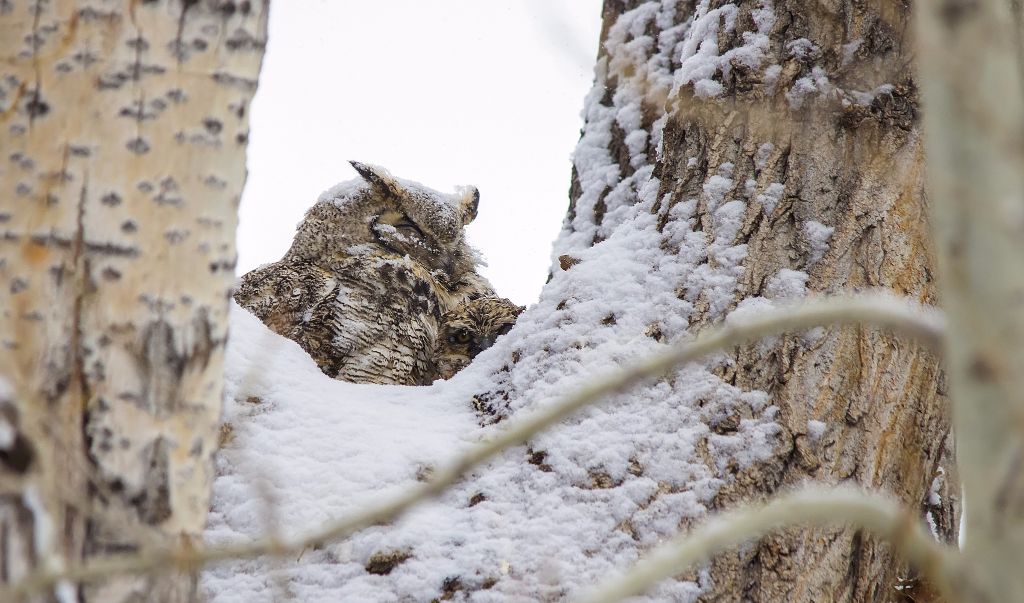
Great Horned Owl and owlet
Pentax K-5 + Sigma 150-500@500mm
1/500sec., ƒ/6.3, ISO 1600
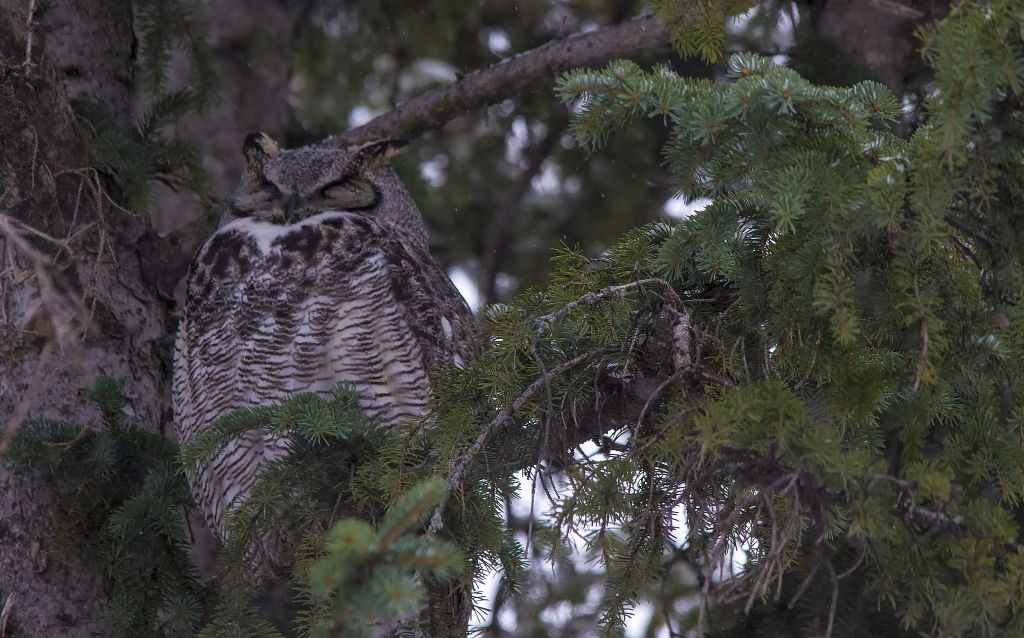
Great Horned Owl and owlet
Pentax K-5 + Sigma 150-500@500mm
1/500sec., ƒ/8.0, ISO 1600
Here’s mom with a very chilly looking little owlet. Dad is nearby keeping a sharp eye on things though, and it looks like everyone’s happy and healthy, albeit a little cold and snowy!
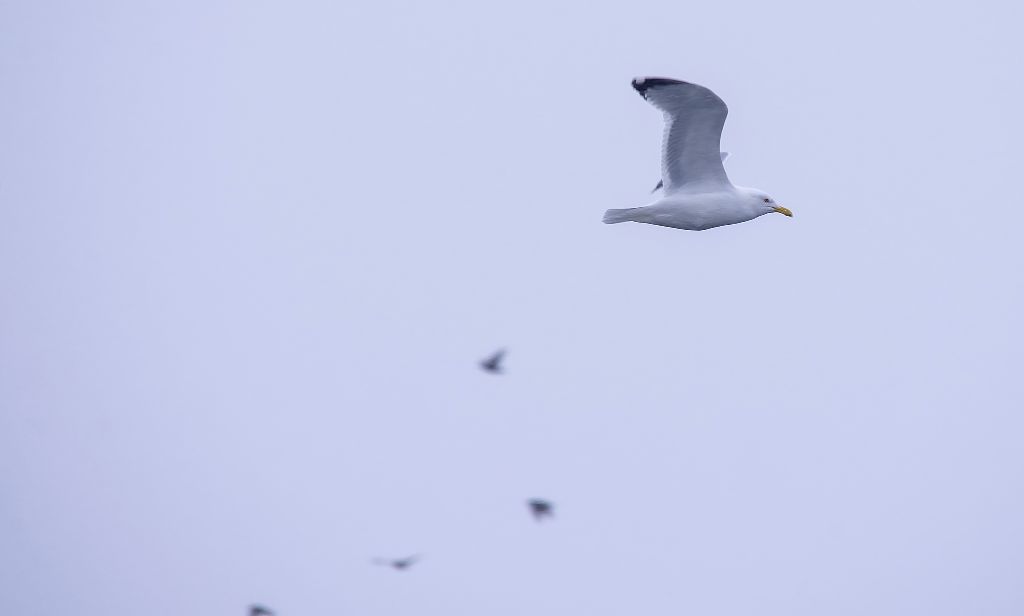
Herring Gull
Pentax K-5 + Sigma 150-500@500mm
1/500sec., ƒ/9.0, ISO 400
We headed down to the Boat Launch and the area around Sikome Lake in search of some more owls, but also got some good looks at a few other birds as well, including this Herring Gull, part of a flock of about thirty of them on one of the larger gravel bars just north of the launch area!
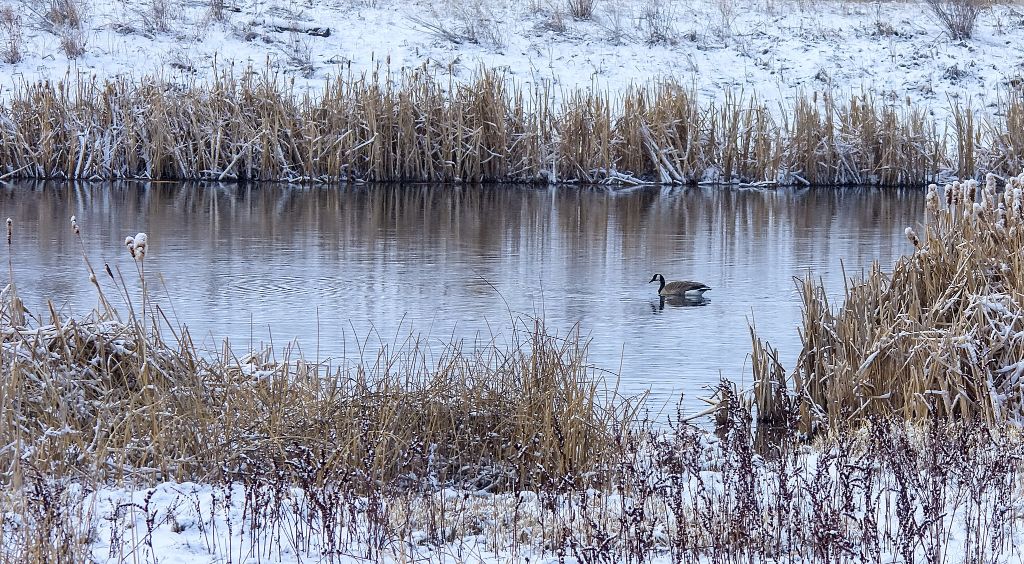
Canada Goose on stormwater ponds
Pentax K-5 + Sigma 150-500@150mm
1/1000sec., ƒ/8.0, ISO 800
This was probably the best sighting of the day. The stormwater ponds are open and entirely ice-free! Soon we’ll have Cinnamon Teal, Greater and Lesser Yellowlegs, and tons of other puddle ducks and shorebirds surrounding these ponds, and hopefully the Forster’s Terns will return and breed on their west ends as well again this year!
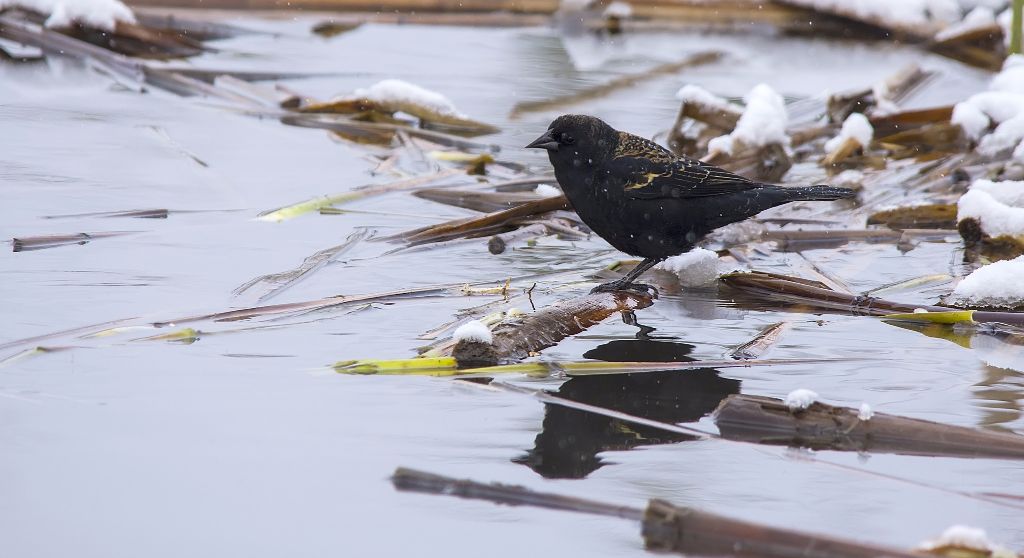
Red-winged Blackbird
Pentax K-5 + Sigma 150-500@500mm
1/800sec., ƒ/8.0, ISO 640
Maybe the second best sighting I’ve had all year was this young Red-winged Blackbird. My first of the year, and in many ways, the true “spring” bird. While I suspect that this little guy got lost in a flock of European Starlings that were heading north earlier than the rest of the blackbirds, they are starting to show up at more and more wetlands in and around Calgary!
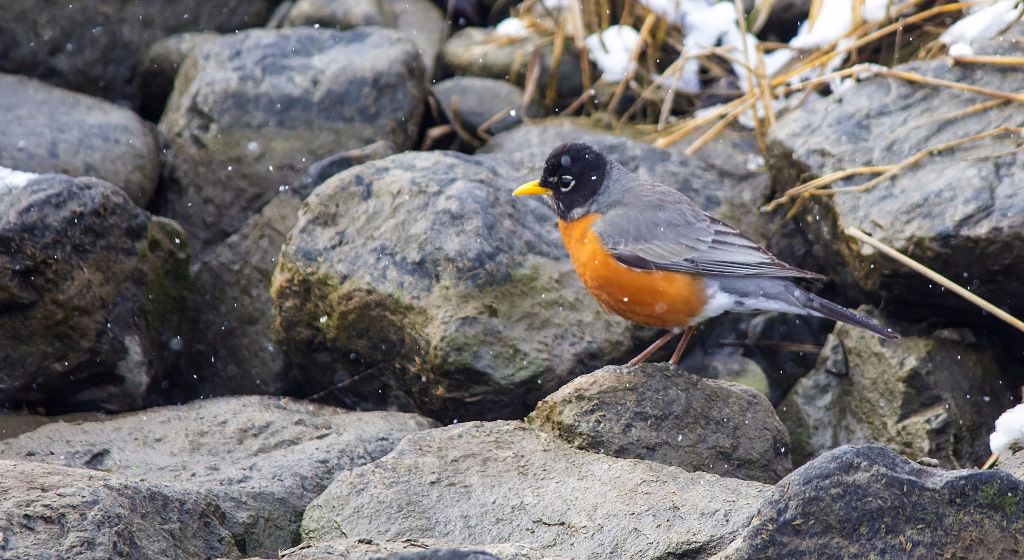
male American Robin
Pentax K-5 + Sigma 150-500@500mm
1/800sec., ƒ/6.3, ISO 1600
This male American Robin was at the furthest south extent of our walk, searching among the rocks for a nice juicy arthropod or worm in the water below. There were a few of them along this stretch of rocks near a water outflow, picking their way up and down the little stream.
After that, we headed up to the ponds at Burnsmead in search of the Wood Ducks, Gadwall, and Northern Shovelers that Rose had seen earlier in the morning, and sure enough, we found them all! Wood Ducks are sometimes pretty hard to find, but we had a pair of males at these ponds last Sunday and there have been a few more that have shown up around the city this week as well.
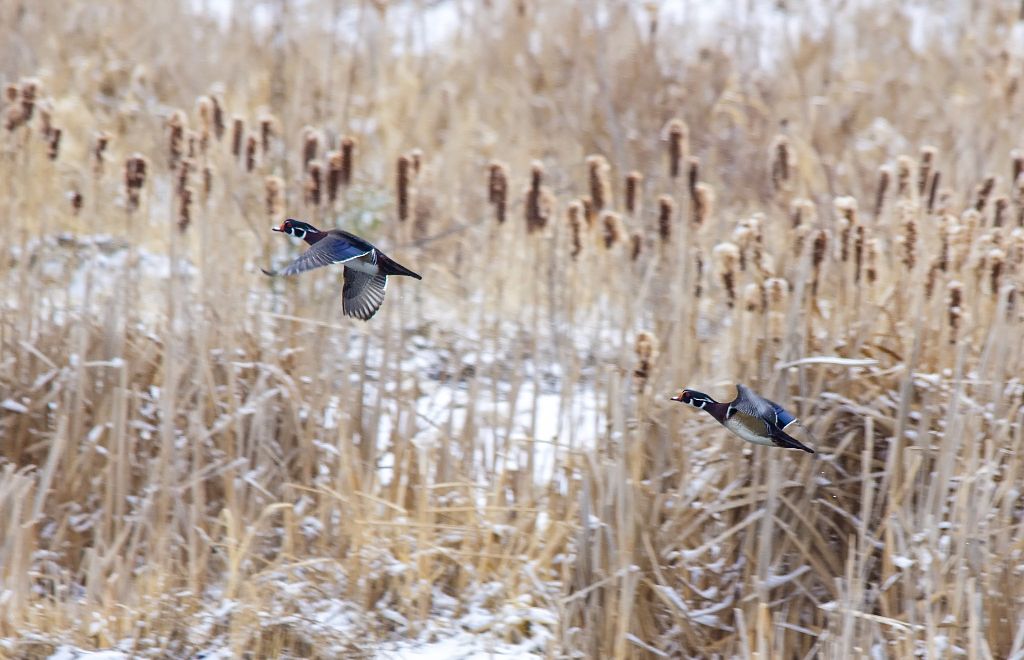
Wood Ducks in flight
Pentax K-5 + Sigma 150-500@500mm
1/800sec., ƒ/8.0, ISO 800
With all those colors, it’s easy to believe that these are the most photographed waterfowl in North America!
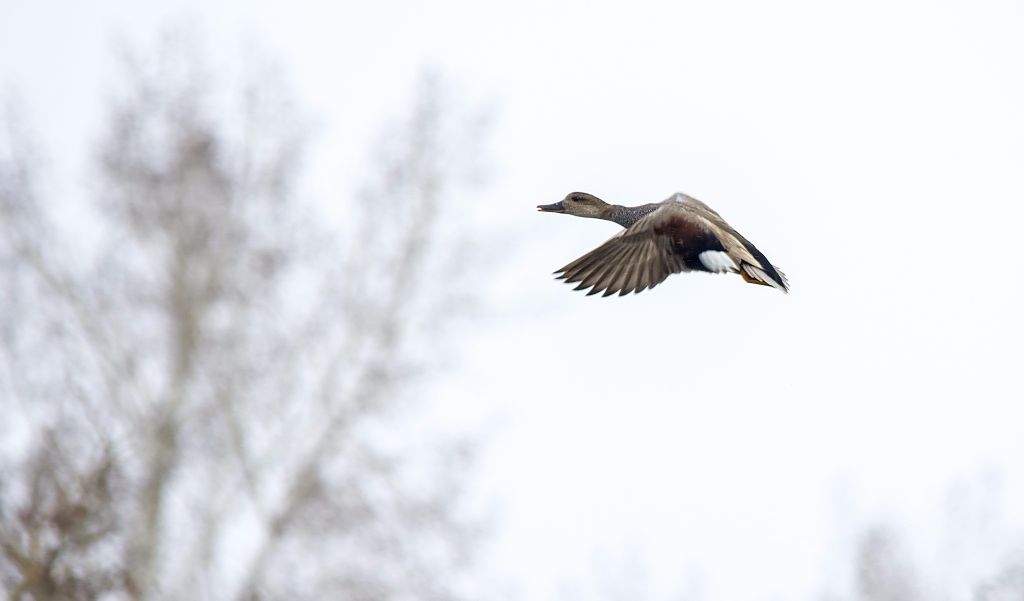
male Gadwall in flight
Pentax K-5 + Sigma 150-500@500mm
1/1000sec., ƒ/8.0, ISO 640
While Gadwall are relatively nondescript, they sure do show some stark contrasts in flight, and while they’re often quite hard to spot, this male (and his mate) were fairly accommodating as long as I was quiet, moved slow, and there wasn’t too much activity around the pond.
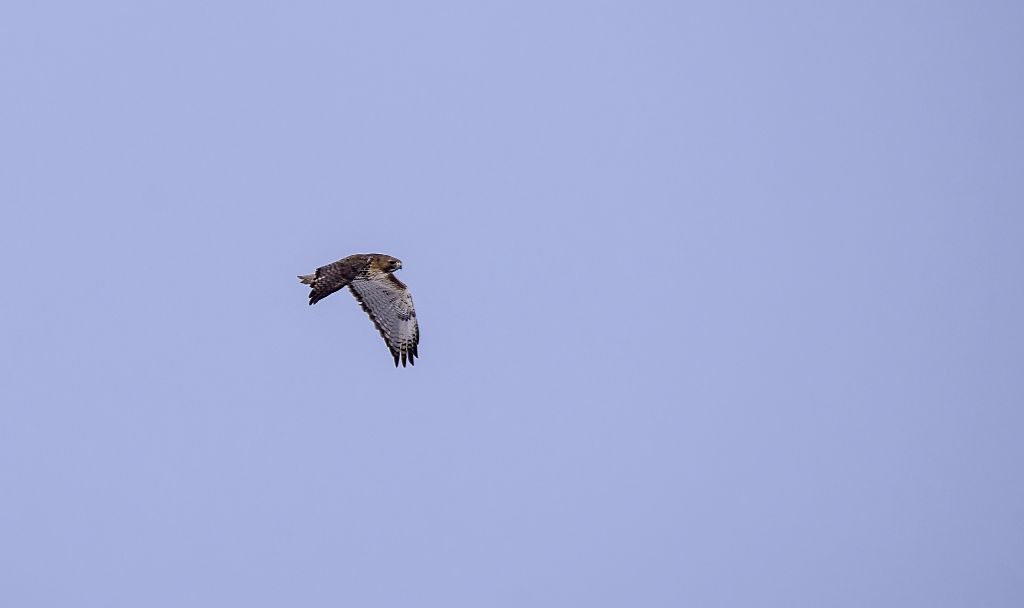
Red-tailed Hawk in flight
Pentax K-5 + Sigma 150-500@500mm
1/1000sec., ƒ/8.0, ISO 200
All the activity on the ponds drew the attention of this Red-tailed Hawk, who made a fly-by at a bit of a distance to check out what all the fuss was about before flying off to the north.
Looking forward to the next outing and most definitely excited for all the new spring birds coming to Calgary over the next few months!
Have a great week, and good birding!
